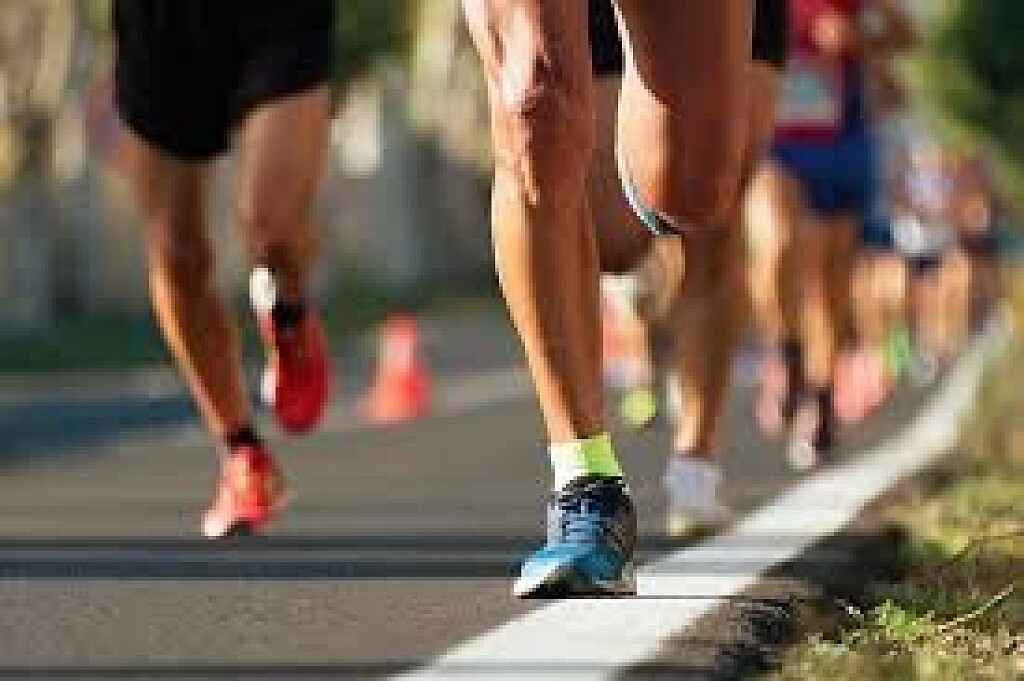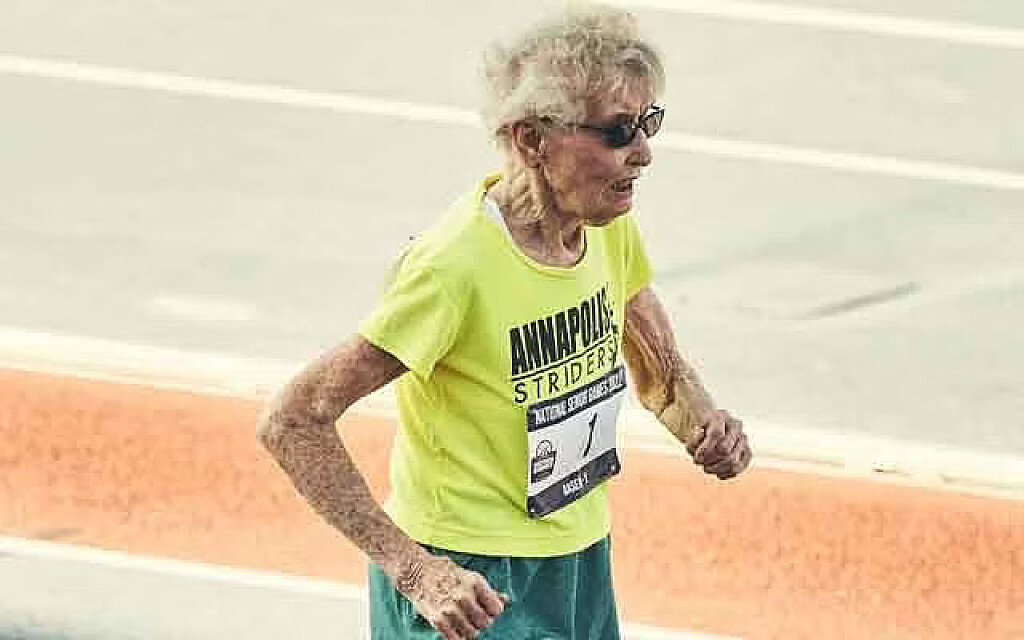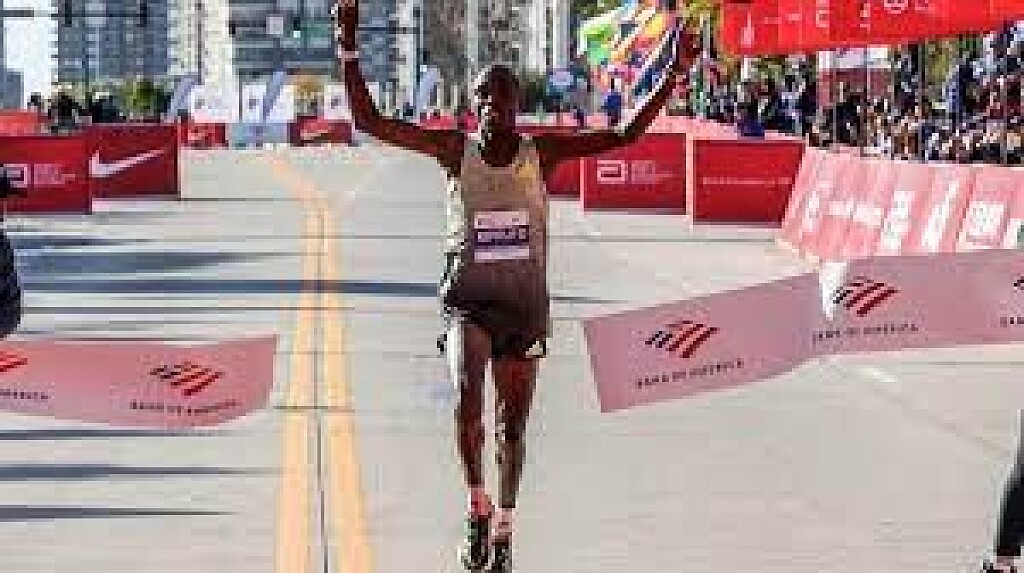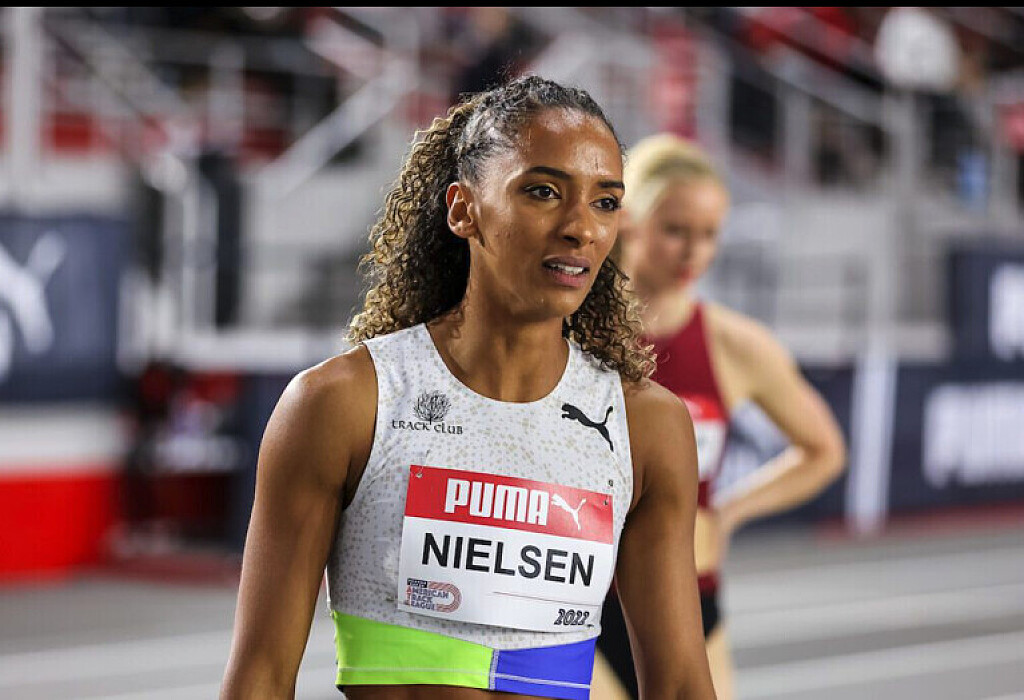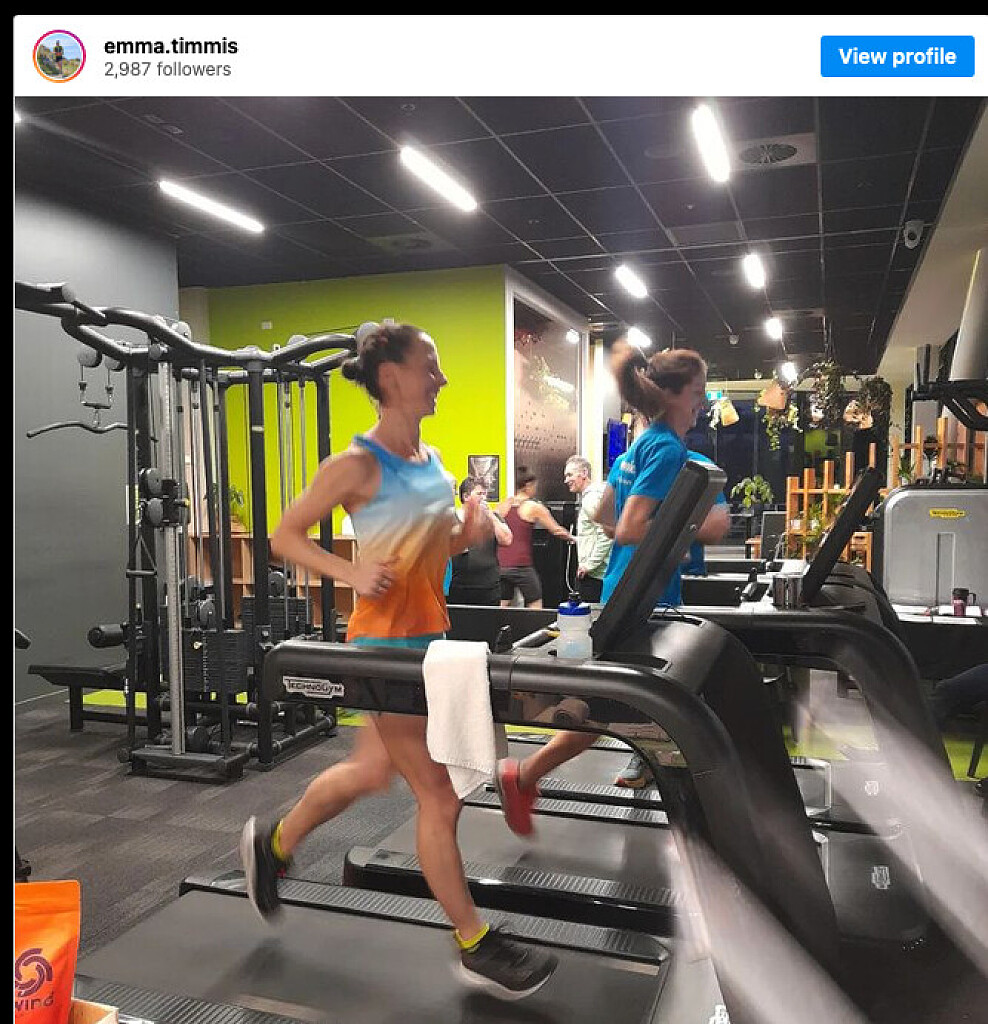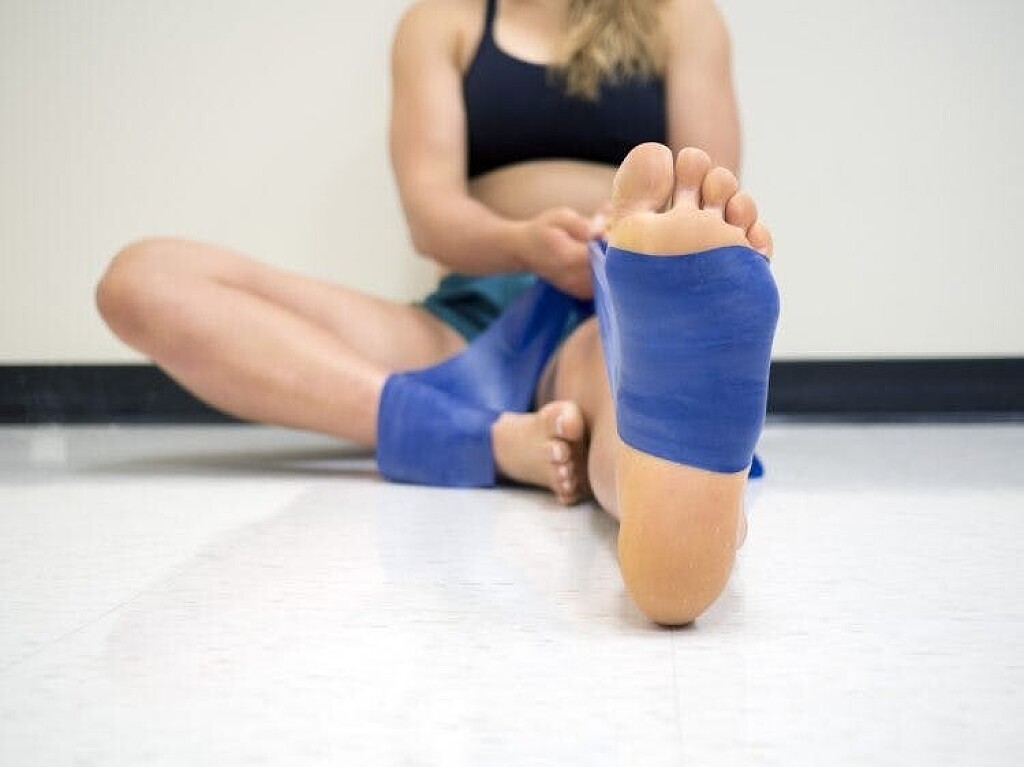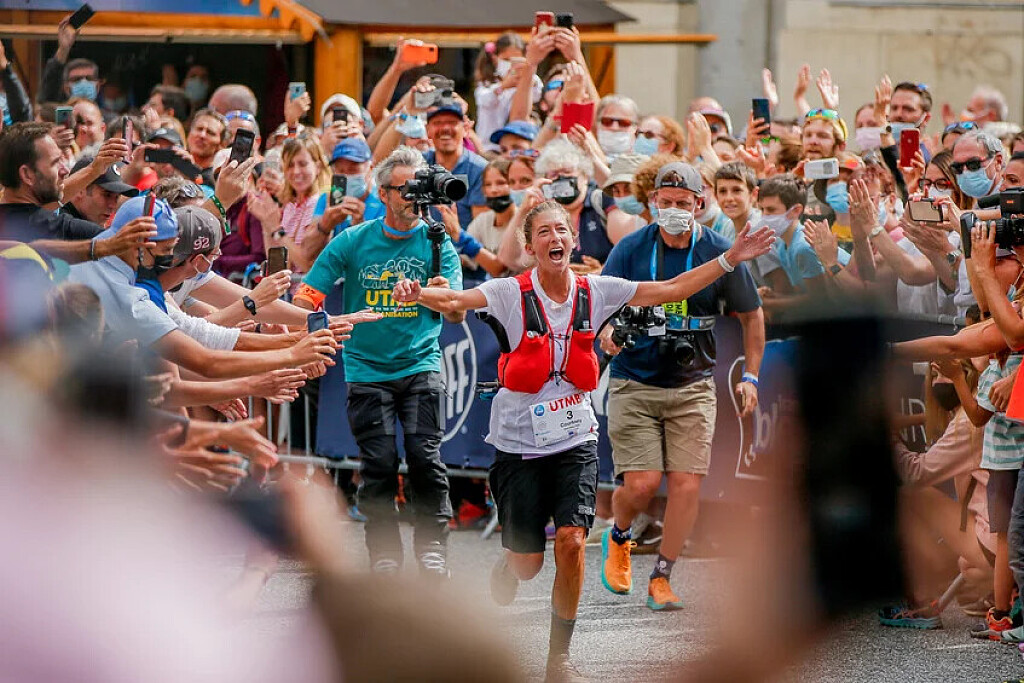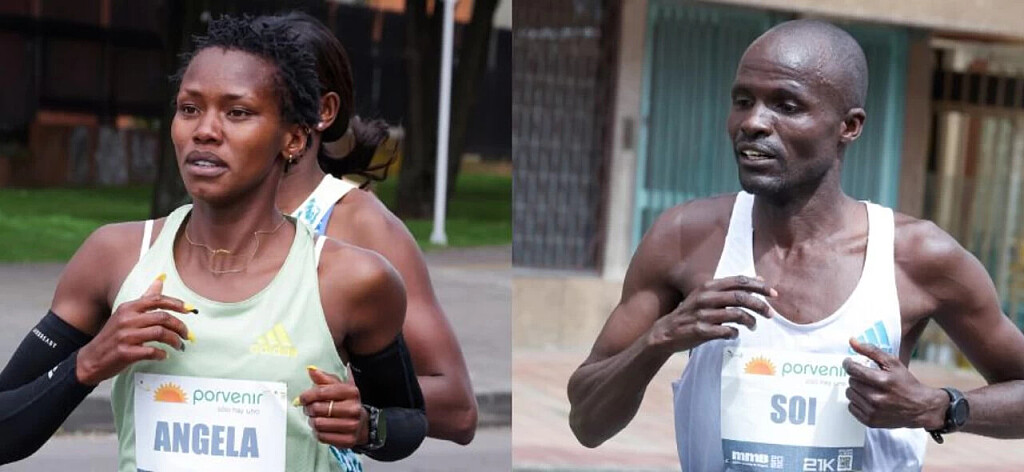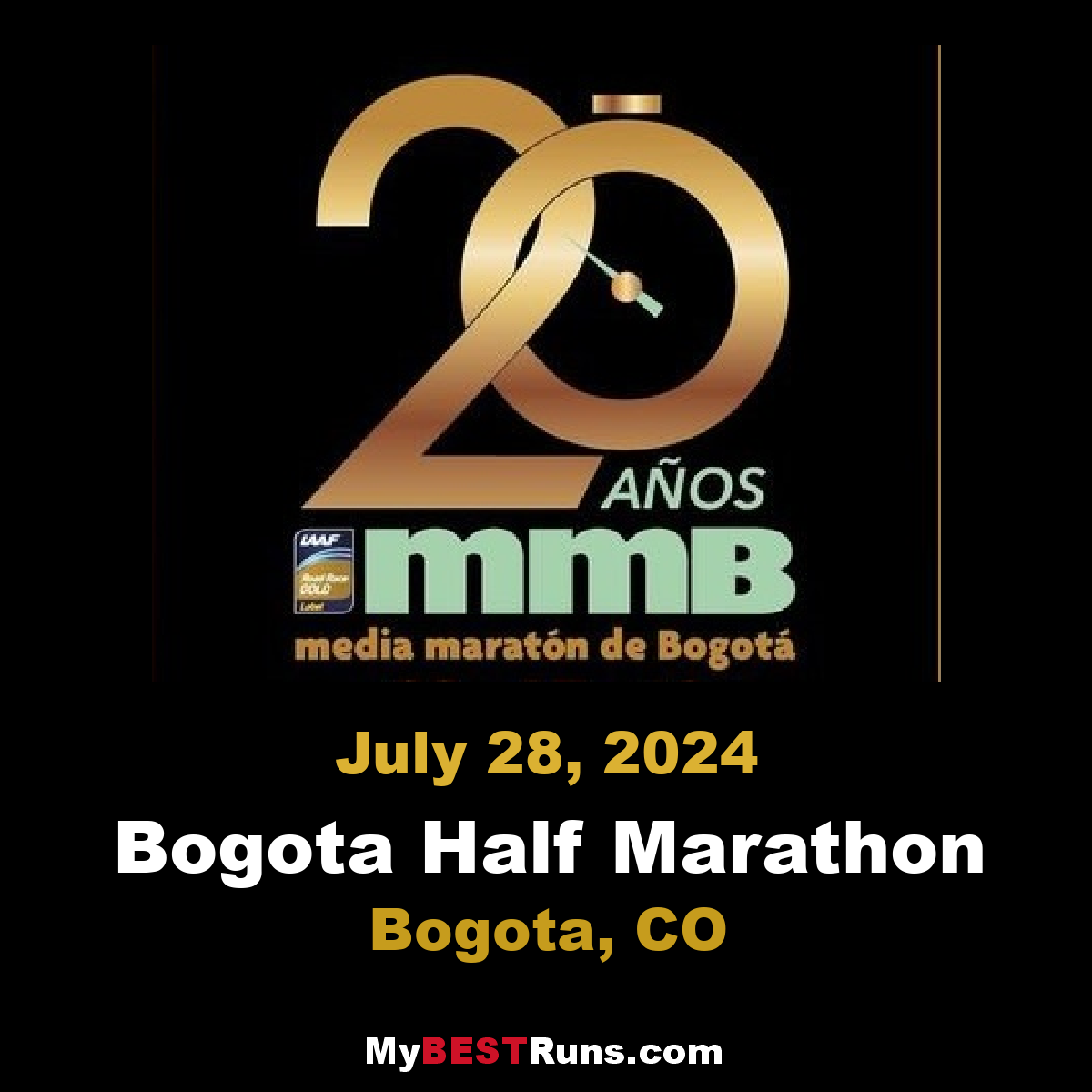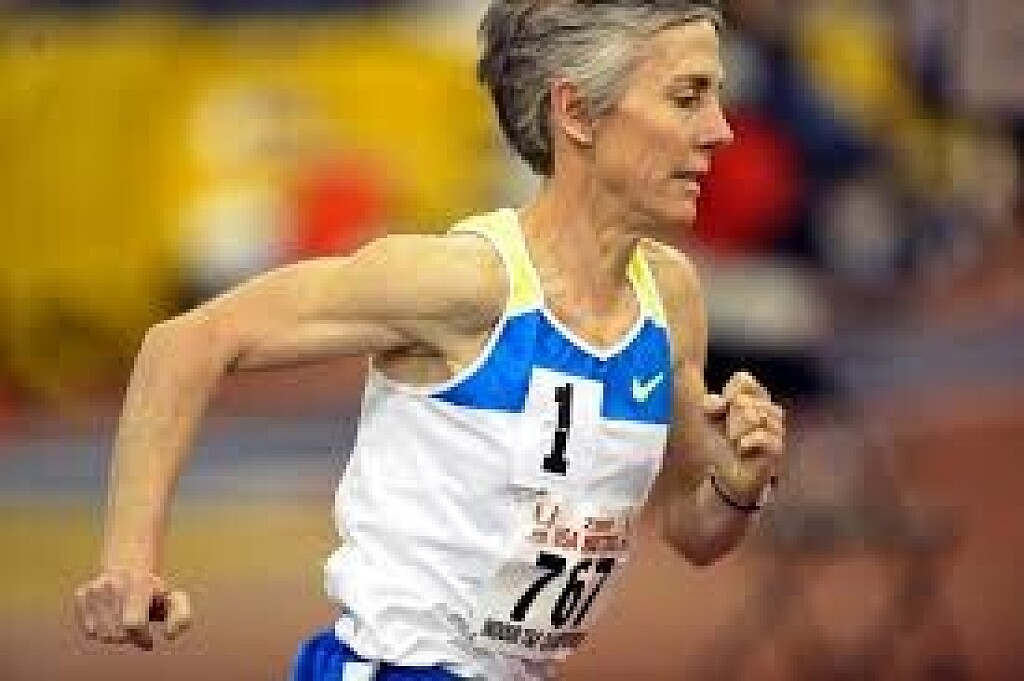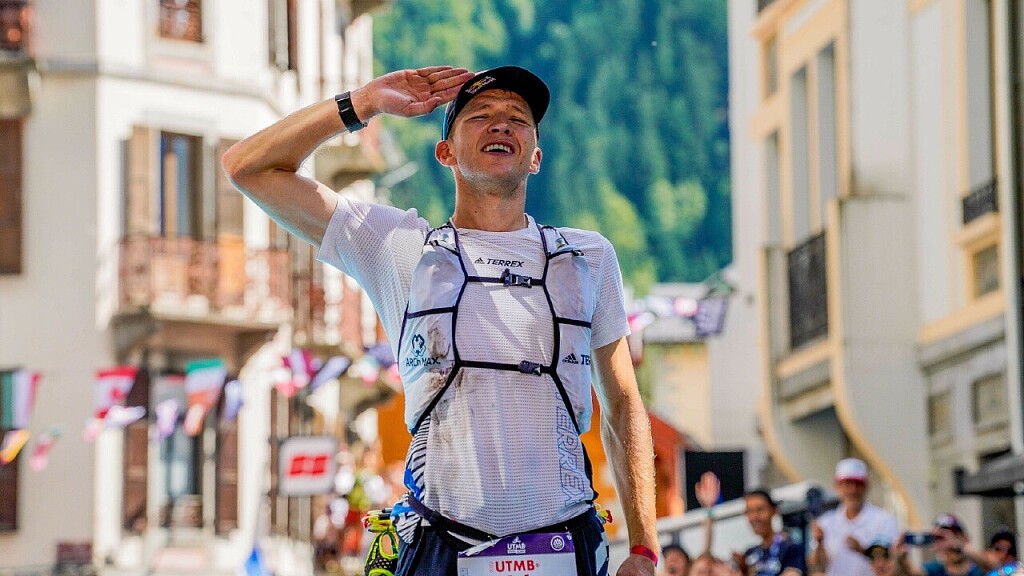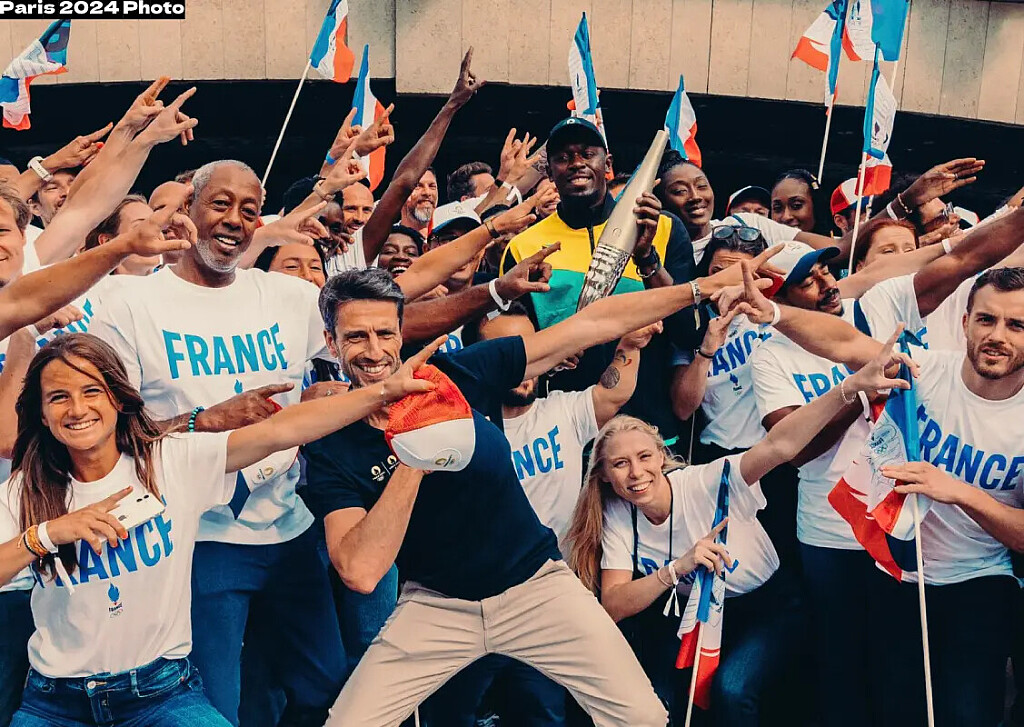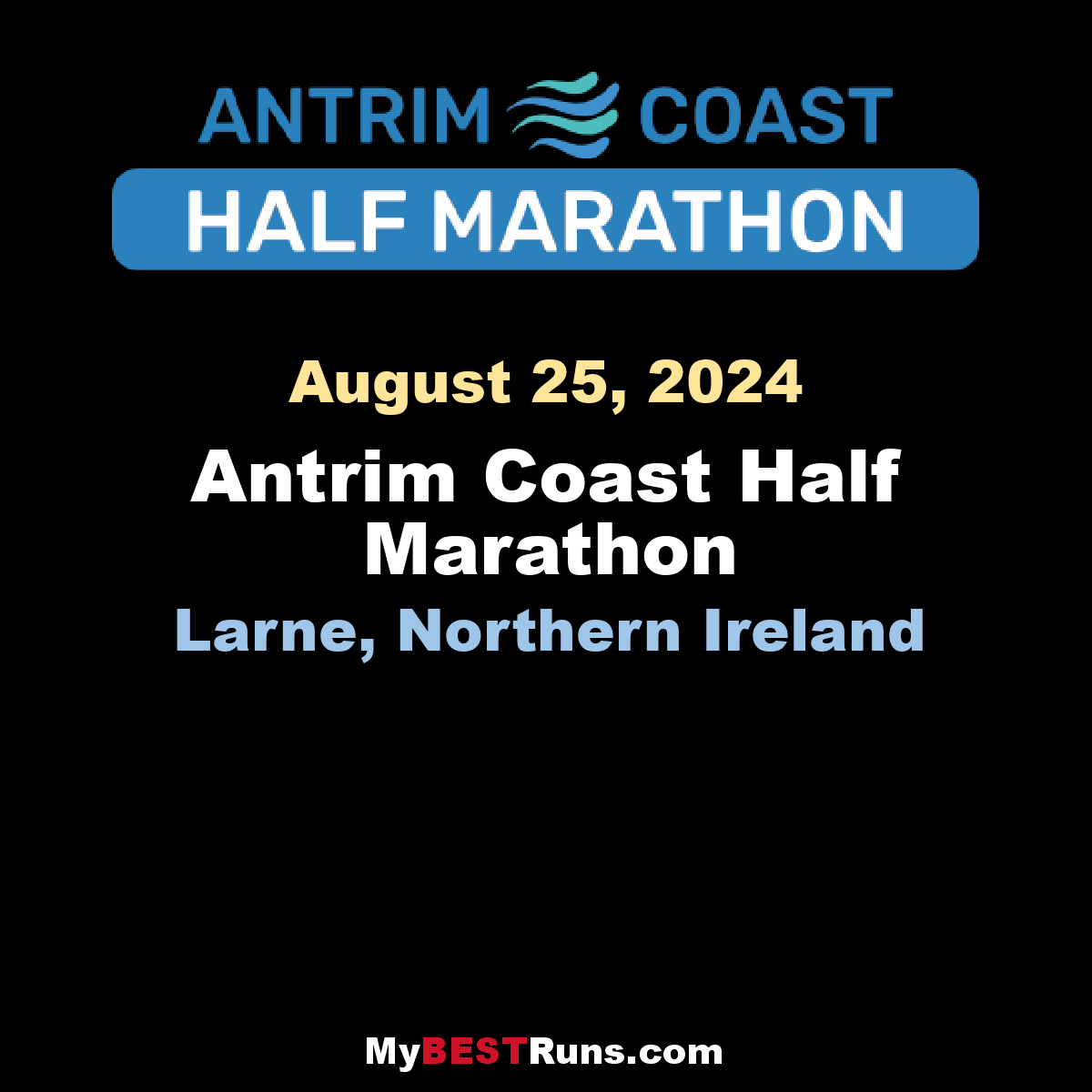Running News Daily
Running News Daily is edited by Bob Anderson. Send your news items to bob@mybestruns.com Advertising opportunities available. Train the Kenyan Way at KATA Kenya and Portugal owned and operated by Bob Anderson. Be sure to catch our movie A Long Run the movie KATA Running Camps and KATA Potato Farms - 31 now open in Kenya! https://kata.ke/
Index to Daily Posts · Sign Up For Updates · Run The World Feed
Do You Need Electrolyte Supplements at Altitude?
Here's what to keep in mind about hydration supplementation at all elevations
When Lara Crawford stopped into her local vitamin and supplement store a few months ago, she was in search of something to alleviate her acid reflux, which causes a burning sensation in her chest and acid regurgitation. But the conversation quickly took a turn when a staff member learned Crawford wasn’t taking electrolyte supplements.

Crawford lives at 9,000 feet in the Colorado Rockies, a place considered to be high altitude. Even after living in the mountains for years, she never saw a need for additional electrolytes. However, the staff member told Crawford those who live at altitude tend to get dehydrated overnight—and suggested she start taking sports salts pills and a daily electrolyte powder.
“I thought those were just for ultra athletes or like serious athletes, but he told me everybody should be taking them,” Crawford says. He spoke so convincingly about their benefits that she decided to give the electrolytes and sports salts a try.
After using the sports salts in the morning and the electrolytes at midday for a few months, she noticed a moderate improvement in her acid reflux. However, the biggest change was in her face: She no longer woke up with dry, puffy eyes.
Spotting the meaningful difference, she wondered if the staff member was right. Was the shift due to her new electrolyte supplements? Maybe these weren’t just for endurance athletes after all. Perhaps even people who only engaged in moderate exercise still needed to supplement with electrolytes at altitude.
Vic Johnson, an Utah-based sports nutritionist who works with outdoor athletes, including ultra runners, cyclists, and triathletes, says that while we do lose more fluids at altitude, there’s nothing special about nighttime.
However, the electrolyte and hydration question, and how much each of us should be consuming each day, is a bit more complicated.
At higher elevations, your body has to work harder to get oxygen, which causes your breathing rate to increase. Since you lose water through respiration, this results in greater fluid loss. The air is also drier at altitude, which makes your sweat evaporate faster and causes additional fluid loss. Each of these factors contribute to your body losing more water than at sea level, requiring you to hydrate more frequently.
However, the longer you stay up in the mountains, the better it gets. Johnson says people who live at altitude are able to adapt to the lack of oxygen. Their bodies become more efficient, producing more red blood cells to carry oxygen through the body, which reduces the amount of fluid lost.
“It’s going to be pretty stressful on your body for a couple of weeks,” Johnson says, referring to spending time at elevation. “That’s the most crucial time to increase fluid intake. Then things will kind of regulate, and you won’t have to compensate quite so much.”
However, even longtime residents of high altitude towns—Crawford has lived at 9,000 feet for 29 years—typically need about a liter to a liter and a half more water per day (about four to six cups) than people living at lower altitudes. But hydration isn’t a one-size-fits-all prescription. Whether you’re in the mountains or at sea level, your fluid intake varies based on the weather, the amount you exercise, and your overall health.
To help his athletes find the amount of hydration they need, Johnson performs a sweat rate test. He starts by weighing them before they exercise. While they work out, he keeps track of the fluids they drink and any urine they lose. After they’ve finished, he weighs them again and plugs each data point into an equation to figure out how many milliliters of sweat per hour they lose. (If you’d like to try this for yourself, use a step-by-step guide to finding out your own sweat rate.)
It’s important to note that even once you’ve figured out your sweat rate, completely replacing your lost liquids isn’t necessarily the goal. It’s not bad to be slightly dehydrated and more hydration isn’t always the solution. For many, drinking to quench your thirst is sufficient. (Those in their 70s or 80s need to monitor their intake a bit more, because our thirst sensation can decrease with age.)
Electrolytes are electrically-charged minerals such as sodium, calcium, magnesium, and potassium that regulate your muscle contractions, keep you hydrated, and balance your pH levels. Every fluid and cell in your body has electrolytes, which aid the function of your nerves, muscles, brain, and heart. Electrolytes also manage the balance of fluids in your body’s cells and are lost through sweat and urine, or if you’re sick, through vomiting and diarrhea.
While electrolytes are essential, Johnson says most of us get all we need from food. “A normal, varied diet should provide you with plenty of electrolytes, even at altitude.” Johnson says, “For the recreational athlete, it’s honestly not that big of an issue.”
If you aren’t engaging in high-output endurance activities lasting longer than three hours, and if you’re eating a nutrient-dense diet with whole grains, legumes, vegetables, fruits, nuts, and seeds, Johnson says you should be getting enough electrolytes without needing additional supplementation. However, endurance athletes who engage in high-output endurance activities lasting longer than three hours have different hydration needs, and may find electrolyte powders and capsules are a good way to stay hydrated and keep their electrolytes balanced.
That doesn’t mean these supplements are the secret to unlocking a new PR. A 2020 study conducted by researchers at Stanford University found that electrolyte supplementation does not improve performance or protect against illnesses caused by a change in sodium levels, including exercise-associated hyponatremia (EAH).
If an endurance athlete wants to take in some sodium, Johnson recommends turning to salty foods, such as pretzels or even a peanut butter sandwich.
“For the most part, when our serum sodium levels drop, the body can usually take care of that and regulate that on its own,” he says.
So, if electrolyte supplementation isn’t really necessary for most people, why did Crawford see a noticeable difference in her face after months of supplementation?
The answer most likely lies in what Crawford took with the powder and capsules.
Before going to the supplement store, Crawford says she struggled to drink enough water. However, while doling out instructions for the supplements, the staff member instructed Crawford to drink a full bottle of water with her morning sports salts capsules (which contain sea salt, magnesium, and potassium) and to mix the flavored electrolyte powder with at least 16 ounces of water later in the day. The supplements provided the structure for her to consume more water, improving her overall hydration and reducing the puffiness in her eyes.
If you live at altitude and find it difficult to drink adequate fluids, a flavored powder might help. For most people, however—including serious athletes—drinking when you’re thirsty is usually enough.
(07/30/2023) ⚡AMPby Outside Online
Try this tune-up workout before your next race
It’s hard to know what to do in the taper week leading up to your race. Run too much, and you risk showing up to the start line tired; run too little and you risk feeling sluggish on race day. Figuring out this balance takes some trial and error, but if you’re not sure what to do, consider adding this quick, feel-good tune-up workout into your training plan the week before your race.
It may sound crazy to do a workout so close to your goal race, but this quick session is designed to get your legs moving without wiping you out. It should be done no less than three days before your race (even further out if you’ve got a long race on the calendar), and is an opportunity to remind yourself what race pace feels like.

In other words, don’t be a workout hero–run your goal race pace and no faster, and resist the temptation to do extra intervals. (Save that energy for the start line!)
The workout
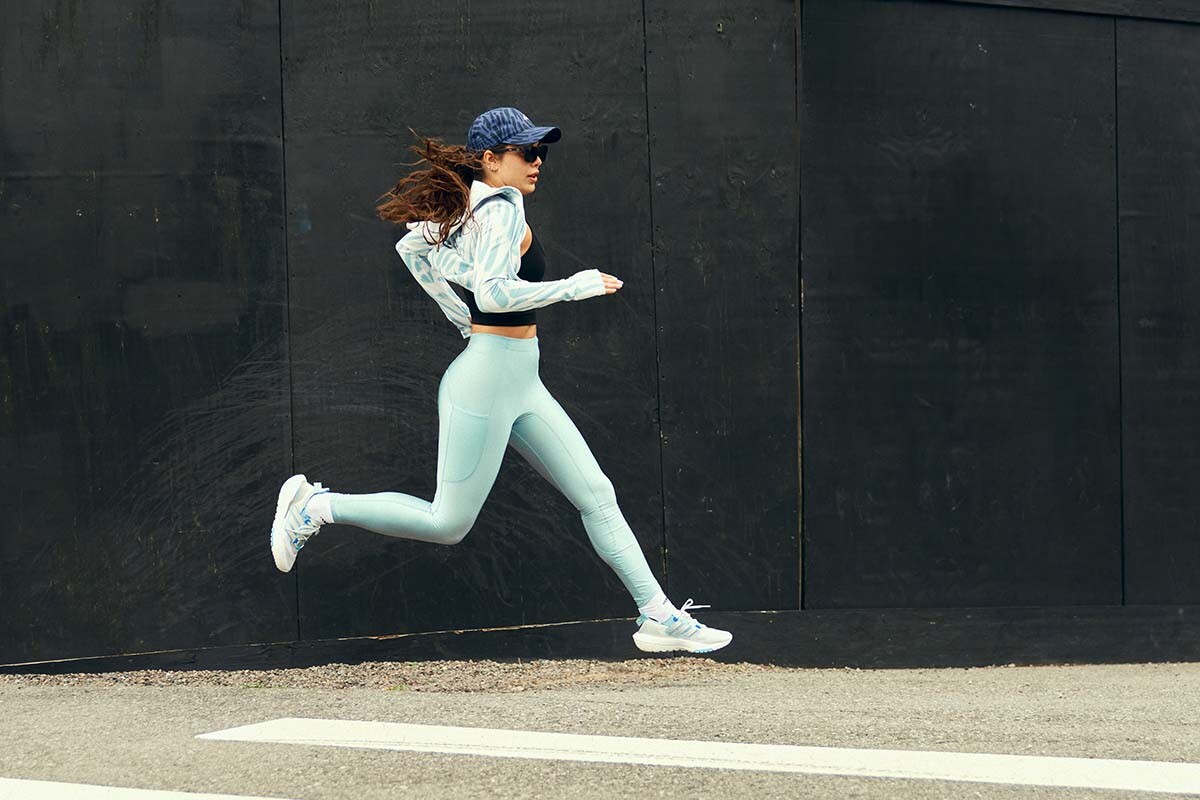
Warmup: 10-15 minutes’ easy jog, followed by form drills
Workout:
1 km at race pace, followed by two minutes’ rest
2-4 x 400m with 1:30 rest (run these at a pace that feels comfortable and strong–don’t get caught up in the numbers)
800m at race pace
Cooldown: 10 minutes’ easy jog, followed by light stretching.
(07/29/2023) ⚡AMPby Brittany Hambleton
90-year-old U.S. runner Dot Sowerby, topples Canadian’s 1,500m world age-group record
A 90-year-old runner saved the best for last during her winning weekend at the USATF Masters Outdoor Championships in Greensboro, N.C., breaking the W90 world record in the 1,500m and claiming the crown from a Canadian.
Greensboro’s own Dot Sowerby delighted a hometown crowd Sunday when she ran the 1,500m in 11:30.62, taking more than a minute off the record held by North Vancouver’s Lenore Montgomery, who covered the distance in 12:34.67 at a track meet in Surry, B.C., in September 2020.
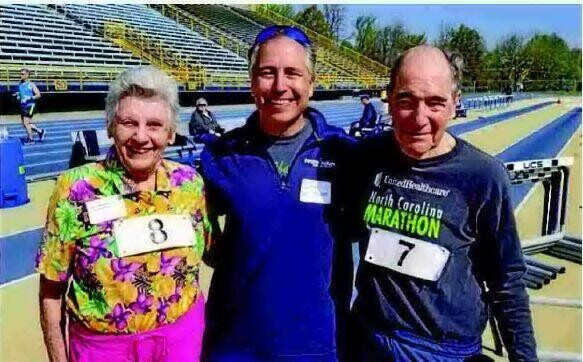
Sowerby’s world-record effort this week, which has yet to be ratified, capped off a memorable weekend for the athlete, who racked up quite a collection of medals over the four-day event at Truist Stadium.
She finished her first day of competition last Friday with gold in the 400m (2:35.33) and silver in the 100m (26.25)—right at the heels of first-place finisher Betty Stroh. On the same day, she took gold in the long jump (1.05m) and the shot put (4.51m). She followed that up Saturday with gold in the 800m (5:52.93).
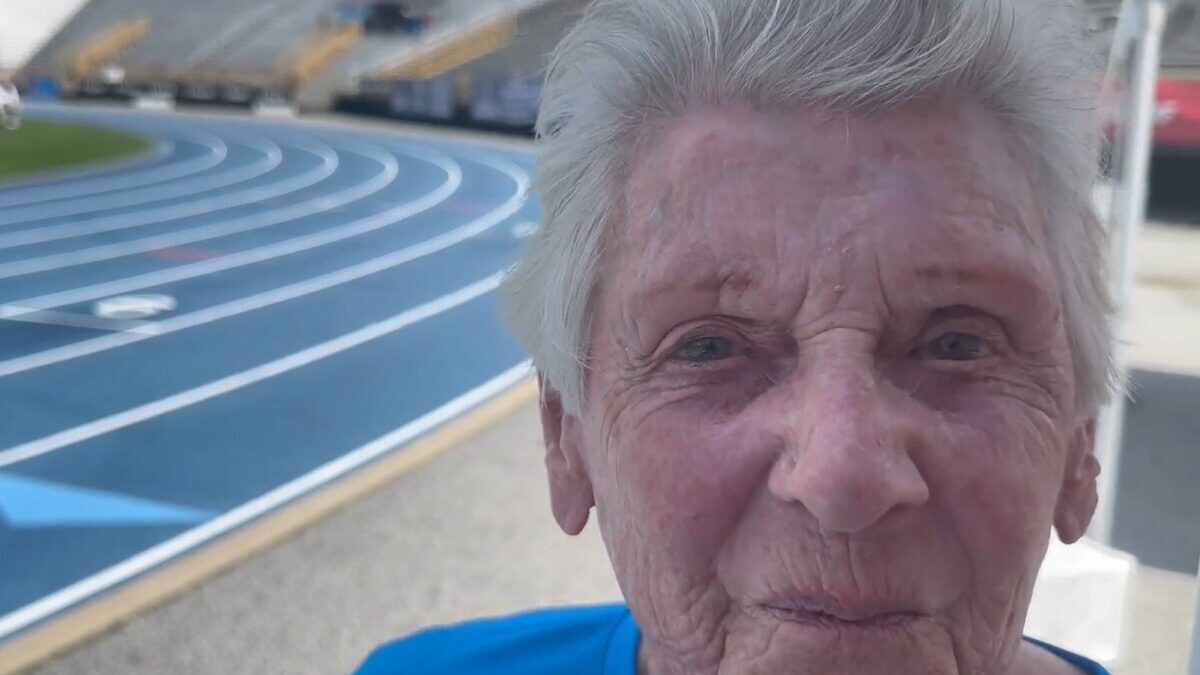
Her accomplishments in Greensboro are all the more impressive considering they came just one week after she collected six gold medals at the 2023 National Senior Games in Pittsburgh.
“I have a philosophy that you are never too old to do something like running or whatever you want to do,” Sowerby told Greensboro’s News & Record heading into the USATF Masters Outdoor Championships. “When I came along, they would not let girls in high school and college run because they thought they were too fragile or something. So, I did my first race when I was 50 years old.”
Although Sowerby has taken Montgomery’s 1,500m world record, the latter athlete’s name still features prominently in the Canadian masters record book. In addition to her W90 1,500m record, Montgomery holds 11 other outdoor track records. These include the W85 and W95 records in the 800m, the W75 and W85 in the 1,500m, the W80 and W85 records in the 3,000m, the W70, W75, W80 and W85 in the 5,000m and the W75 record in the 10,000m.
(07/29/2023) ⚡AMP
by Paul Baswick
Kipruto eyes history in Chicago Marathon, Jepkosgei set for debut
Benson Kipruto will hope to make history during this year's edition of the Chicago Marathon, set for October 8.
Kipruto, 32, is a regular podium finisher in the world marathon majors and has a chance to make more history in the Chicago Marathon when he defends his title in the men's race. If he manages to win the competition, he’ll be the first back-to-back men’s open field champion since the late Sammy Wanjiru in 2010.
To win the title in the last edition, the long-distance runner broke away in the 25th mile last year to win in 2:04:24, which is the fourth fastest time ever in Chicago.
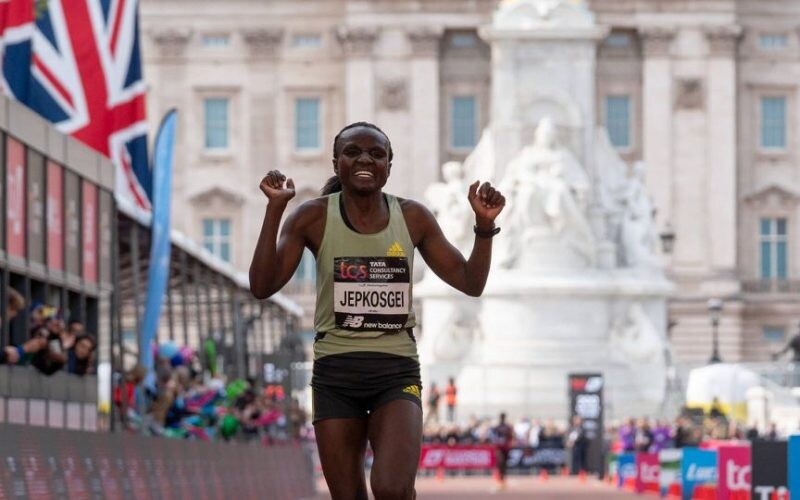
Kipruto should expect stiff competition from Kelvin Kipruto, the second-fastest man in history. The 23-year-old Kiptum will make his U.S. marathon debut in Chicago.
Kiptum won the London Marathon in 2023, which is his second marathon ever, at 2:01:25, which was just 16 seconds shy of Eliud Kipchoge’s world record.

Jepkosgei's debut
Meanwhile, Joyciline Jepkosgei is set to make her debut in the Chicago Marathon. The winner of the 2021 London Marathon and the 2019 New York City Marathon will compete alongside 2022 Chicago Marathon champion Ruth Chepng'etich, American record holder Emily Sisson, and 2023 London Marathon winner Sifan Hassan of the Netherlands.
Apart from Jepkosgei, Genzebe Dibaba of Ethiopia will also be making her Chicago Marathon debut. Dibaba, who made her marathon debut in Amsterdam last fall, placing second in 2:18:05, has established herself as one of the top athletes as she holds six world records from the 1500m to the 5000m.
More than 45,000 participants will take part in the 45th edition of the Chicago.
(07/29/2023) ⚡AMPby Joel Sang
Bank of America Chicago
Running the Bank of America Chicago Marathon is the pinnacle of achievement for elite athletes and everyday runners alike. On race day, runners from all 50 states and more than 100 countries will set out to accomplish a personal dream by reaching the finish line in Grant Park. The Bank of America Chicago Marathon is known for its flat and...
more...Can Exercise Replace Your Antidepressant?
For centuries, we've known anecdotally that movement can improve your mood. Joggers often describe a euphoric runner's high, while swimmers recall an inner calm that lasts long after they leave the pool. In April, researchers published the strongest evidence to date showing that physical activity does more than induce these temporary feel-good effects; It can actually improve depression as effectively as medication or psychotherapy. The findings build on previous studies showing exercise can reduce anxiety, post-traumatic stress disorder, bipolar, and obsessive-compulsive disorder symptoms.
This mounting evidence doesn't suggest you should toss out your medication or skip your next therapy appointment in favor of exercise alone. But it does indicate physical activity could be a powerful first-line treatment for mental health disorders, especially when combined with other therapies.
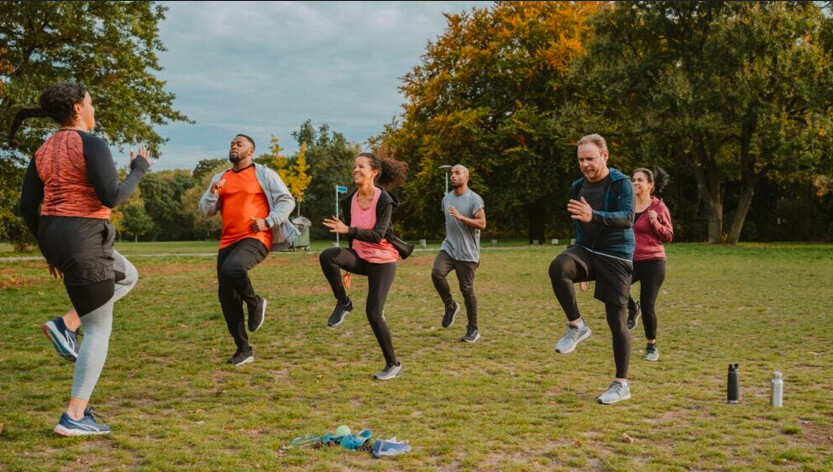
Based on the data, some experts see exercise as a safe, cheap antidepressant that could help the estimated one third of adults with mental illness who do not receive adequate treatment. And some clinicians are putting this concept into practice, doling out "exercise prescriptions" for mental health. These scripts give patients step-by-step instructions for physical activity recommendations, much like they would with antidepressants or behavioral therapy. But providers say that on the whole, the field has been slow to embrace exercise as medicine for mental illness, and "exercise prescriptions" remain the exception in clinical care, not the norm.
"Exercise is a good, underutilized tool to help with mental health conditions," Ivan Escobar Roldan, a psychiatrist in Florida who regularly writes "exercise prescriptions" for his patients and studies the use of exercise in clinical practice, says. He co-authored a study published in the Journal of Psychiatric Practice in 2021 showing that while many providers generally encourage patients to be active, they don't often give specific instructions due to a lack of training, education, or standardized clinical guidelines.
"Everyone says you should exercise more," Seattle-based clinical psychologist Julie Vieselmeyer says. "But patients always ask: What does that mean? Do I need to take an extra lap around the grocery store, or does that mean I have to go to a gym for three hours every day?"
Currently, mental health providers don't give the clearest answers to these questions.
A Mind in Movement
Exercise is as close to a miracle drug as we've got. Research shows it works as effectively as some prescription drugs in preventing and treating more than 26 different diseases.
When you start a workout, your pulse quickens and breathing deepens as your heart pumps oxygen-rich blood to your brain and muscles. Within a few minutes, you likely notice a lift in your mood as your brain releases "happy chemicals" like endorphins, dopamine, and serotonin (the same neurotransmitter targeted by antidepressants). The fleeting bliss of a runner's high results from a spike of endocannabinoids in the bloodstream-cannabis-like signaling molecules that are naturally produced in your body and induce feelings of calm.
After your strength or conditioning session wraps up, the positive effects don't stop. Over time, physical activity can increase levels of a protein called brain derived neurotrophic factor (BDNF), which leads to the creation of new neurons. More BDNF is correlated with reduced anxiety and depression, better focus, improved cognition, and sharper memory as you age.
When people exercise regularly, the brain's hippocampus-the area linked to memory and learning-has also been found to increase in volume. That's not all. With a regular workout routine, people often feel better, sleep better, eat better, and report improved relationships and work satisfaction. Exercising can burn off anxious energy as well as increase resilience to future stress. Eventually, it can even help people taper off medication and cut down on doctor's visits or medical treatments. People who start to exercise before or during middle age typically save between $824 to $1,874 annually on their health care costs after retirement.
"While medications may take a few weeks to work, you see benefits right away with exercise," Escobar Roldan says. "It's not only going to help with anxiety, depression, and many other mental health conditions, but also with patients' overall health and other chronic conditions."
Getting moving can be tough initially. Despite the upsides, less than a quarter of U.S. adults do enough aerobic exercise or strength training to meet the national physical activity guidelines. But once people get going, exercise's instant gratification often kicks off a beneficial feedback loop, Vieselmeyer says.
"When we're making healthy choices, that ends up affecting how we think about ourselves, our self-confidence, and our energy levels-things affect our emotions positively and lead to behavior change," she says. Working out isn't just about quelling anxiety, depression, or negative emotions, but fostering positive ones too.
Matthew Ellison, a late-twenties investment banker based in New York City, has experienced these benefits firsthand. Ellison has a history of anxiety and recently dealt with a bout of depression tied to work stress. With the support of his therapist, Ellison made going to the gym a daily priority. He says the routine pulled him through this period and has become a non-negotiable practice to maintain his mental health.
"Being able to clear my mind, in the morning or late at night, has honestly been the greatest thing for my mental health," Ellison says. "It's the foundation for my mental well-being."
Barriers to Entry
For more than 20 years, Vieselmeyer has been interested in exercise as medicine, and says that amid recent studies, she is seeing more acceptance of the topic across the field. But even with a robust body of evidence, providers still struggle to convert these research breakthroughs into targeted exercise prescriptions.
That's because there's little formal training or education on the topic. Some clinicians are concerned about their patients' health status and worry that exercise might lead to injury or cause a heart attack. Others simply don't have the time to discuss exercise in depth.
Many providers recommend 150 minutes (or 2.5 hours) of physical activity per week-guidelines from the U.S. Department of Health and Human Services-but are hesitant to give concrete instructions beyond that. The American Psychological Association's most recent clinical practice guidelines on depression don't mention exercise as treatment.
In his own practice, Escobar Roldan uses resources like this prescription form created by Exercise is Medicine, a global initiative coordinated by the American College of Sports Medicine. The organization also provides a handy action guide to help providers prescribe the right "dose" of physical activity for more than 40 chronic conditions, including mental health disorders. Exercise is Medicine maintains a referral program for health professionals to connect patients with qualified exercise professionals. Some insurance companies also subsidize training programs or gym memberships, or even reimburse health and fitness expenses. But these programs aren't yet commonly used in the mental health arena. "You need a lot of mounting evidence to see a paradigm shift or clinical practice change," says Escobar Roldan. "With more awareness, we're moving towards that, but we aren't there yet."
To get patients moving, Vieselmeyer and Sarah England, a clinical psychologist based in New York, don't use strict "prescriptions." Instead, they draw on techniques from cognitive behavioral therapy, one of the most evidence-based forms of therapy. The psychologists use motivational interviewing to explore the root causes of behavior and barriers to exercise. They also target behavioral activation, which uses behavioral shifts like physical activity to influence people's emotional state.
"If clients are severely depressed and unable to do their laundry, I'm not going to suggest running two miles," England, who helps patients set "SMART" goals that are specific, measurable, achievable, relevant, and time-bound, says. "We have to behaviorally activate them first, in smaller steps, like walking around the block."
A Happiness Workout
Ellison managed to establish a regular workout routine with only vague encouragement from his therapist. But for many others dealing with mental health issues, symptoms like fatigue or lack of motivation preclude their ability to exercise regularly.
"When somebody is really depressed, it's hard to put the running shoes on and get out the door, even if they know that's going to make them feel a whole lot better," Vieselmeyer says. Sometimes the easiest entry point might be medication or seeing a therapist, and then progressing to exercise, she says.
Much of the evidence behind the antidepressant and anti-anxiety effects of exercise is based on people with mild to moderate cases of mental illness. A few small studies suggest that structured workout treatments can help patients with serious mental illness in inpatient settings. But on its own, exercise is unlikely to alleviate serious mental illness, experts say.
A major reason why mental health providers have been slow to embrace exercise as treatment is because researchers haven't nailed down the exact "dose and effect" like they would with a prescription drug. More research is needed to determine which type of exercise works best, how much is needed, and who it can benefit mentally.
Based on what we know so far, the most effective exercise prescription includes physical activity that is:
Moderate to Vigorous
Escobar Roldan suggests people bring their heart rate up to the point where they are a little bit out of breath. Gardening, walking, dancing, hiking, running, or cycling can all ease symptoms of anxiety and depression.
Enjoyable
Most studies point to aerobic exercise as a way to boost your mood, but evidence shows strength or resistance training works too. It's more about getting people moving doing something they enjoy, rather than finding the "perfect" exercise, Vieselmeyer says.
Social
Group exercise sessions, from bootcamp to yoga, can be especially effective. People appear to gain more benefit when supervised by trained health and exercise professionals. There's also the extra opportunity to connect with others, which pays dividends on our mental health.
Doable
Vieselmeyer recommends starting small. No triathlon or two-a-days involved. It's more about working out consistently, not calculating the perfect ratio of Crossfit to Pilates.
"Whatever prescriptions are made going forward need to fit with people's lives, or they're just not going to do them," Vieselmeyer says. "There are already enough barriers for people to exercise."
Ultimately, physical activity isn't a silver bullet for mental health-and more intense movement isn't always the best strategy, especially for fitness fanatics who already train hard. "A good long run is not enough to process through your history of trauma," Vieselmeyer says. If exercise alone was the panacea to our mental health crisis, we wouldn't see any mental health difficulties in professional athletes, England notes.
The right exercise prescription comes down to each person's level of physical and mental fitness. "I certainly hope no one is hesitating to prescribe exercise on top of other evidence-based treatments," Vieselmeyer says. "I would rather give patients more tools than fewer, and then see where their interest lies."
(07/29/2023) ⚡AMPby Trail Runner Magazine
British athletes criticize U.K. Athletics world championship selection process
U.K. Athletics is under criticism after 19 athletes have been denied the opportunity to compete at the upcoming World Athletics Championships in Budapest next month, despite earning qualifying through their world rankings.
According to The Guardian, U.K. Athletics has rejected invitations sent by World Athletics to athletes who have not met the required qualification standard in their respective events, but are ranked within the top 50 in the World Athletics rankings. Three years ago, World Athletics implemented a new qualification system that aims to create a fairer selection process for major championships. The system is designed to select half the athletes based on automatic qualification standards and the other half based on where athletes sit in the rankings.
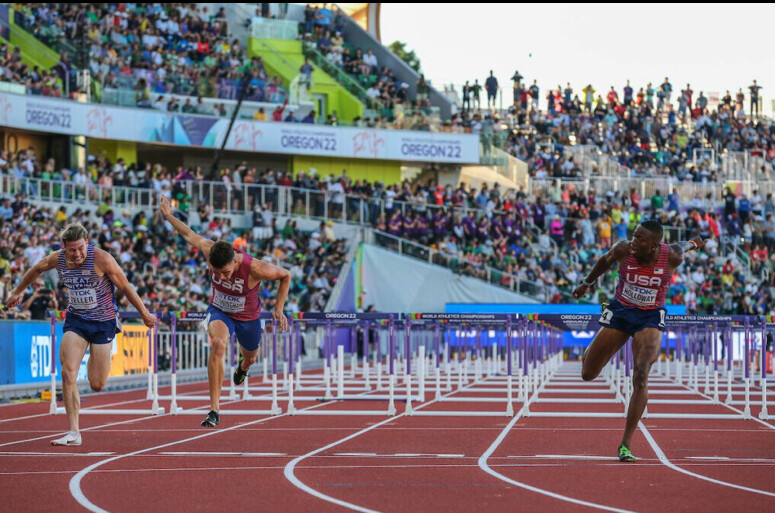
Several athletes took to social media expressing their frustration and disappointment, since they thought they had rightfully earned their spots to compete on the world stage.
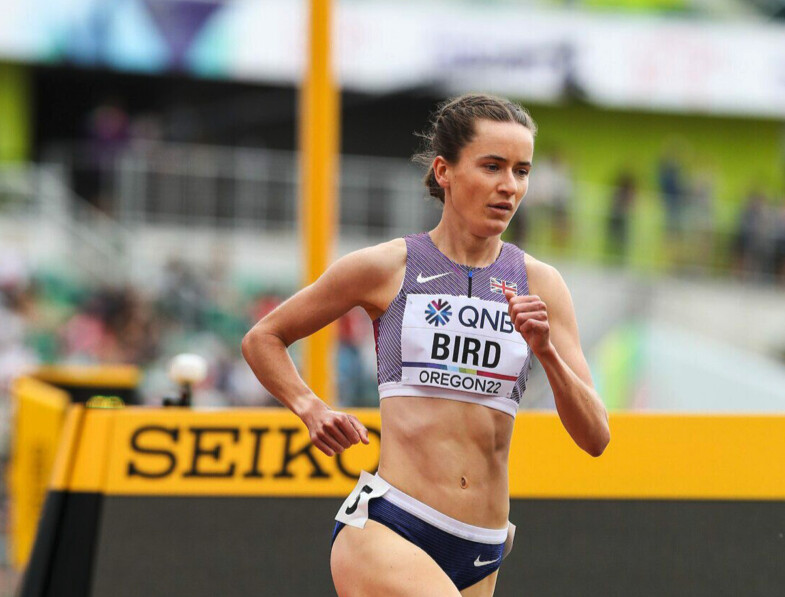
Lina Nielsen, a British 400m hurdler, expressed her frustration with the selection process on Instagram: “To know that I’m deemed good enough to go to the world champs but that my federation will say no is world-shattering,” she wrote. “My heart is heavy. I feel completely cheated by U.K. Athletics.”
Nielsen, ranked 25th in the world this year, is among those who will receive a World Athletics invite based on her world ranking. However, U.K. Athletics plans to reject it, citing her best time this summer as 0.06 seconds outside the automatic qualification standard.
The selection process has also affected British hurdler Joshua Zeller, who finished fifth in the men’s 110m hurdles at the 2022 World Championships in Eugene. Despite reaching the world final last year and being ranked inside the top 30, Zeller’s invitation to the 2023 world championships will be rejected for the same reason.
“I fully comprehend that I did not meet the required criteria set forth, but this situation adds further disappointment,” wrote Zeller on Instagram. “Going from being a world finalist to not even being able to compete in this year’s championships is truly disheartening.”
U.K. Athletics has been transparent that their new selection process emphasizes optimizing medal success and securing top-eight placings at the major championships, rather than sending the highest number of athletes allowed. Zeller and Nielsen stress that this should not come at the cost of denying opportunities to deserving athletes who qualified based on world rankings.
The issue has sparked discussions about the authority and decision-making of national federations, with some athletes even contemplating legal action to challenge UK Athletics’ stance.
(07/29/2023) ⚡AMPby Running Magazine
Netflix to release track and field documentary on world-class sprinters
Netflix is set to launch a new documentary series focused on 100m and 200m sprinters on the Diamond League circuit, featuring some of the world’s most renowned sprinters. According to The Daily Mail, the show will follow the journey of several elite sprinters like world champions Noah Lyles, Fred Kerley and Dina Asher-Smith, providing a behind-the-scenes glimpse into their world of track and field.
The report says the filming for the documentary series is underway, with a camera crew capturing the thrilling moments of the Diamond League and Continental Tour season. The crew was present during the recently concluded London Diamond League, where Lyles ran a 200m world lead of 19.47, adding to the anticipation surrounding the upcoming series.
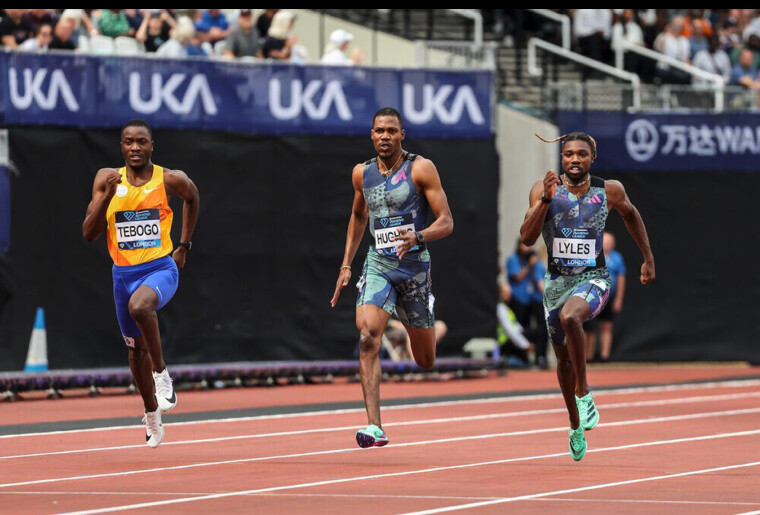
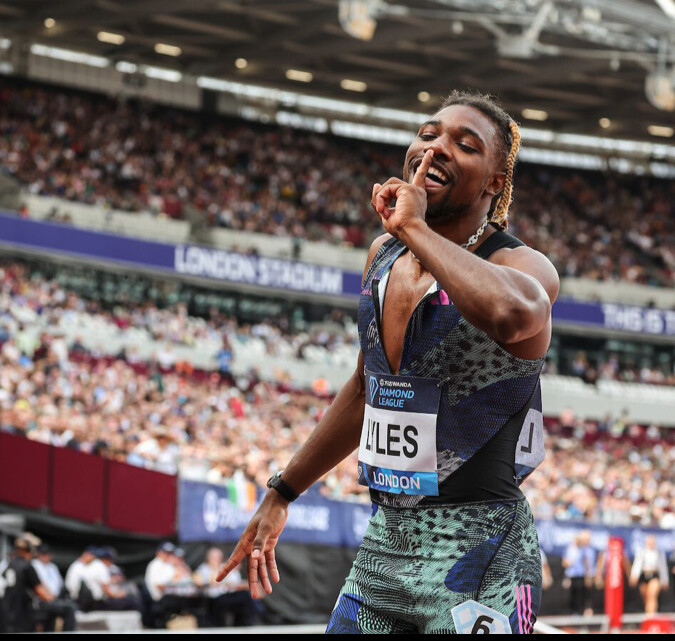
The concept of sports-themed documentaries has gained a lot of popularity, as seen with Netflix’s previous success with Drive To Survive, a captivating series centred around Formula One racing, the golf series Full Swing following golfers on the PGA and Break Point, a doc series that followed the top male and female players in professional tennis. The shows have resonated with existing fans and attracted new audiences to watch the sport. World Athletics has the same hope–that the upcoming series will spark more interest in the sport, outside of the Olympics and World Championships.
Although the title and release date of the docu-series are yet to be unveiled, World Athletics has confirmed the existence of the project. In a statement to Daily Mail Sport, the organization acknowledged the presence of documentary film crews following the sport and its athletes, but keeping the project under wraps for the time being.
Kerley, in particular, has been an advocate for the idea of a Netflix-style series for athletics. In an interview with BBC in May, he expressed his belief that the sport deserves more recognition and attention. Drawing parallels with F1, he emphasized that athletics, too, has events beyond the Olympic Games that could captivate audiences worldwide.
(07/29/2023) ⚡AMPby Running Magazine
Kiwi woman crushes 48-hour treadmill world record
New Zealand’s Emma Timmis has broken the women’s 48-hour treadmill world record after running 340.36 kilometres at a fitness club in Christchurch over the weekend.
With her run, an effort averaging more than seven kilometres an hour, Timmis put a healthy distance between herself and Swedish runner Kristina Paltén, who has held the record since 2014, running 322.93 kilometres.“Well, what a weekend that was!!!! It was everything I expected and more,” Timmis wrote in an Instagram post, in which she shared her motivation for tackling this treadmill world record. “One (reason) was to push my mental strength, and it definitely did!!! I went to some pretty dark places throughout the run, felt it with all my heart and managed to pull myself out of it each time.”

Making Timmis’s feat all the more remarkable was her comment that the 48-hour run was a “practice run” for a much larger challenge she plans on attempting later this year, although she’s keeping details of that “big goal” under wraps for now.Timmis added she “felt 100% loved and cared for every minute of the run. To be able to complete something this huge you have to put full trust in people around you. Each and every person in the event showed me that the trust given was deserved.”
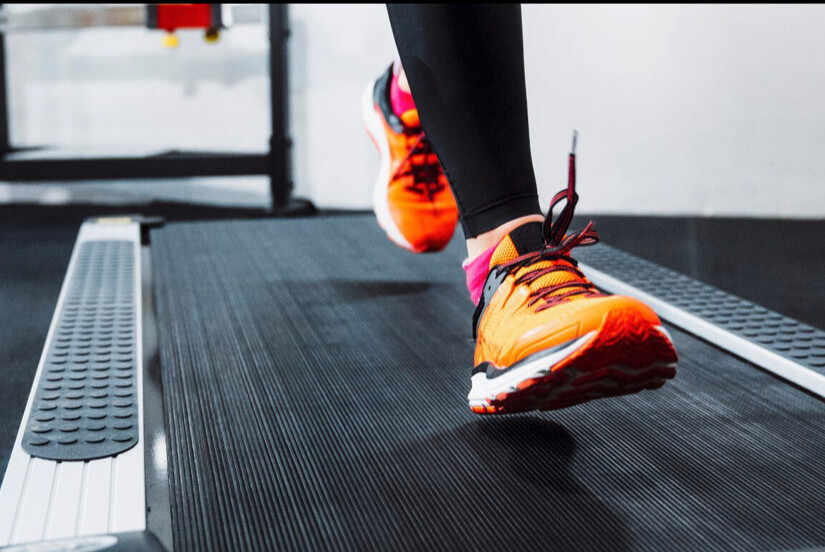
Once ratified, this will be the third Guinness World Record held by Timmis, who is originally from Derby, England, but now lives in the town of Reefton, New Zealand.
In January 2022, she broke the record for the fastest crossing of New Zealand on foot by a female, completing the trek from the northern town of Cape Reinga to the southern town of Bluff in 20 days, 17 hours, 15 minutes and 57 seconds.“Averaging over 100K every day, this run had many, many challenges—it was no walk (run!) in the park,” Timmis said of that run on her website. “I battled extreme heat, heavy, fast traffic, several injuries, one of my support crew being involved in a car accident, and so much more. It takes incredible grit, resilience and determination to achieve something like this.”
In 2017, she set the record for the longest journey by elliptical cycle in a single country, travelling 7,753 km from Denham, Western Australia to Cape Byron in 74 days.
Three years earlier, Timmis completed an 89-day run from the Atlantic Ocean at Henties Bay, Namibia, to the Indian Ocean at Pemba in Mozambique, covering 3,974 km. Her run across southern Africa, which she called “the toughest thing I have done in my life,” was the inspiration for a children’s book, The Girl Who Ran Across Africa, which she published in 2020.
(07/29/2023) ⚡AMPby Running Magazine
Foot strength exercises for speed and stability
Your feet may take a serious pounding when you run, but chances are you (like most runners) neglect foot mobility and care. Spending a few minutes on these stability-builders (do them while you’re watching TV!) will be a game-changer–you’ll have a stronger foundation and prevent future injuries.
If you’ve never done foot mobility or strength before, ease into these exercises and increase or decrease repeats as needed. Incorporate them into your warm up or cool down routine a few times a week, or try a few anytime you’re relaxing on the couch.
Toe curls
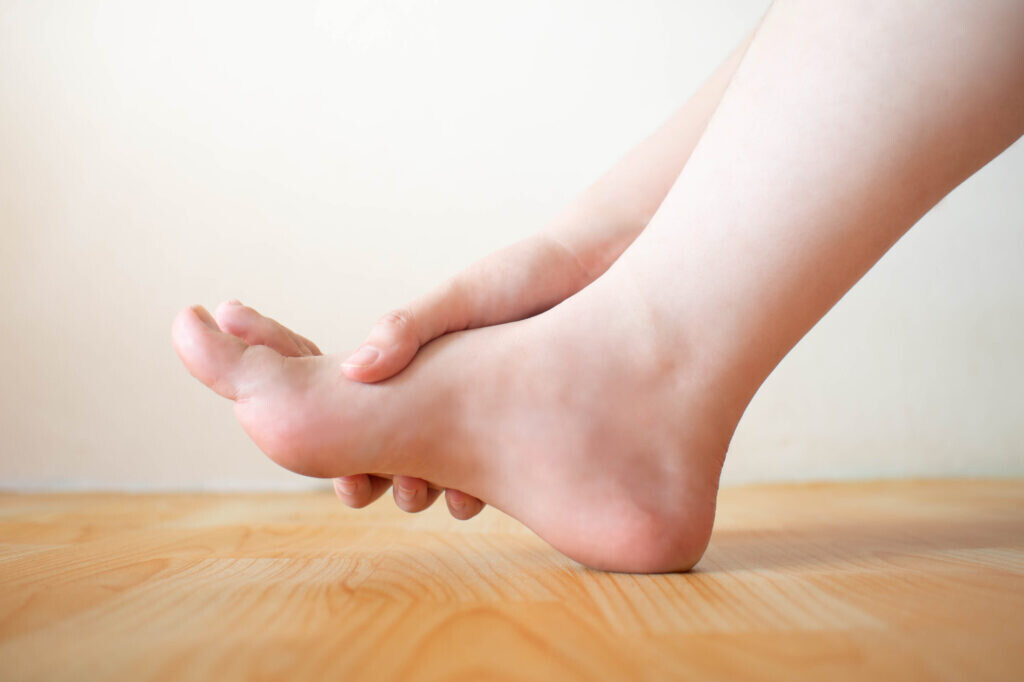
Toe curls strengthen the intrinsic muscles of the feet, essential for maintaining arch support and proper foot mechanics during running.
Sit on a chair with your feet flat on the floor. Curl your toes inward as if you’re grabbing the floor, then release. Do three sets of 15–20 repetitions for each foot.
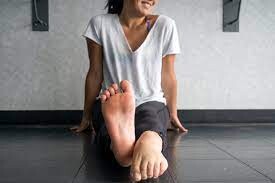
Single-leg balance
Single-leg balance exercises enhance ankle stability and proprioception (your ability to sense where the ground is), essential for maintaining proper form and preventing ankle-related injuries.
Stand in bare feet with hands on the back of a chair or wall for stability, if needed. Rise up onto the ball of one foot, hovering the other foot above the ground if possible (leave your toes touching if you need to, and work up to lifting the leg). Hold for 30 seconds to one minute, and switch to the other leg. Repeat for three sets, build up to five.
Toe spreading
Toe spreading helps improve toe mobility and strengthens the muscles responsible for toe alignment, which can enhance stability during the push-off while running.
Sit or stand with your feet flat on the ground. Spread your toes as wide as possible, then bring them back to a neutral position. Repeat for three sets of 15–20 repetitions.
Towel scrunches
Towel scrunches strengthen the muscles in your toes and on the bottom of your feet, and contribute to better foot stability and proprioception.
Place a small towel on the floor. Stand barefoot, and use your toes to scrunch up the towel toward you. Release and repeat for three sets of 15–20 repetitions.
(07/28/2023) ⚡AMPby Keeley Milne
Courtney Dauwalter to race UTMB this year
The U.S. ultrarunning phenom, hot off her record-breaking finishes at Western States and Hardrock 100, will be looking to best her own course record in Chamonix in September.
Ultrarunning sensation Courtney Dauwalter has announced she’ll be toeing the start line at Ultra Trail du Mont-Blanc (UTMB) in Chamonix, France on Sept. 1, setting the stage for what is sure to be one of this year’s most highly anticipated ultras, following her recent record-breaking wins at the Western States 100-mile Endurance Run and the Hardrock 100.
The 38-year-old shared on social media Friday morning—with an apparent mix of excitement and trepidation—her decision to take on the famed 170-km course, which features 10,000m of vert around the base of Mont Blanc.
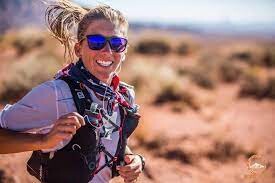
“We decided to do UTMB!” she wrote. “I have no idea how this will go, or what I’ll be able to squeeze out of my body & brain in one more 100 mile race this summer, but that makes it even more interesting to try! Mont Blanc, here we come! Race date: Sept 1”
The big question surrounding the September race will be whether Dauwalter, who holds the UTMB course record following her 22:30:54 finish in the race two years ago, will be able to best herself to claim the championships and course records at Western States, Hardrock and UTMB within a span of less than three months.
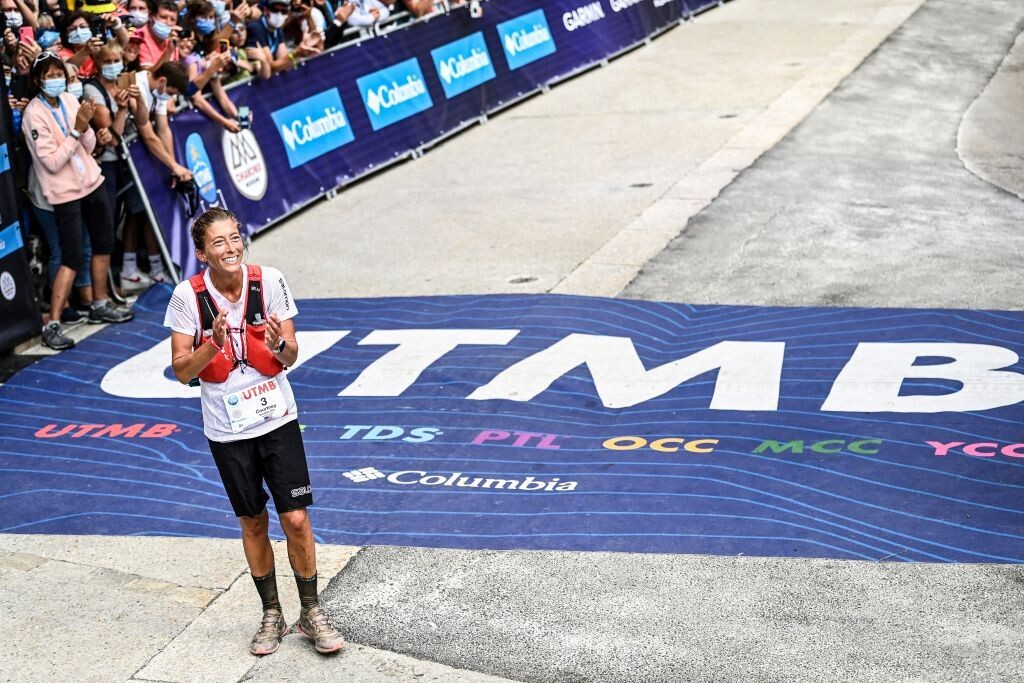
On June 24, Dauwalter not only demolished the Western States women’s course record that had stood for more than a decade (16:47:19 set by Canadian Ellie Greenwood in 2012), but beat most of the men, finishing in 15:29:33 and sixth overall.
Just three weeks later, she turned in another mind-blowing performance at the Hardrock 100 in Silverton, Colo., crossing the finish line in fourth place overall in 26:14:08. Dauwalter’s run was more than an hour faster than the counter-clockwise record set by Diana Finkel of South Fork, Colo., in 2009, and 30 minutes faster than Dauwalter’s own overall women’s course record set last year.
In addition to holding the course records at UTMB, Western States and Hardrock 100, Dauwalter, who is based in Golden, Colo., holds the record at Diagonale des Fous on Reunion Island.
(07/28/2023) ⚡AMP
by Paul Baswick
North Face Ultra Trail du Tour du Mont-Blanc
Mountain race, with numerous passages in high altitude (>2500m), in difficult weather conditions (night, wind, cold, rain or snow), that needs a very good training, adapted equipment and a real capacity of personal autonomy. It is 6:00pm and we are more or less 2300 people sharing the same dream carefully prepared over many months. Despite the incredible difficulty, we feel...
more...Half Marathon specialist Daniel Mateiko is excited to make his debut in this year’s Chicago Marathon
Daniel Mateiko promises to pull a major upset in Chicago Marathon.
Mateiko, who has been competing on both track and the road, has promised a surprise this year despite the presence of top-notch athletes in Chicago this year.
“Yes, this will be my first time to run a marathon, and a major one. This means I have to work extra hard in training to keep up the pace,” he said.
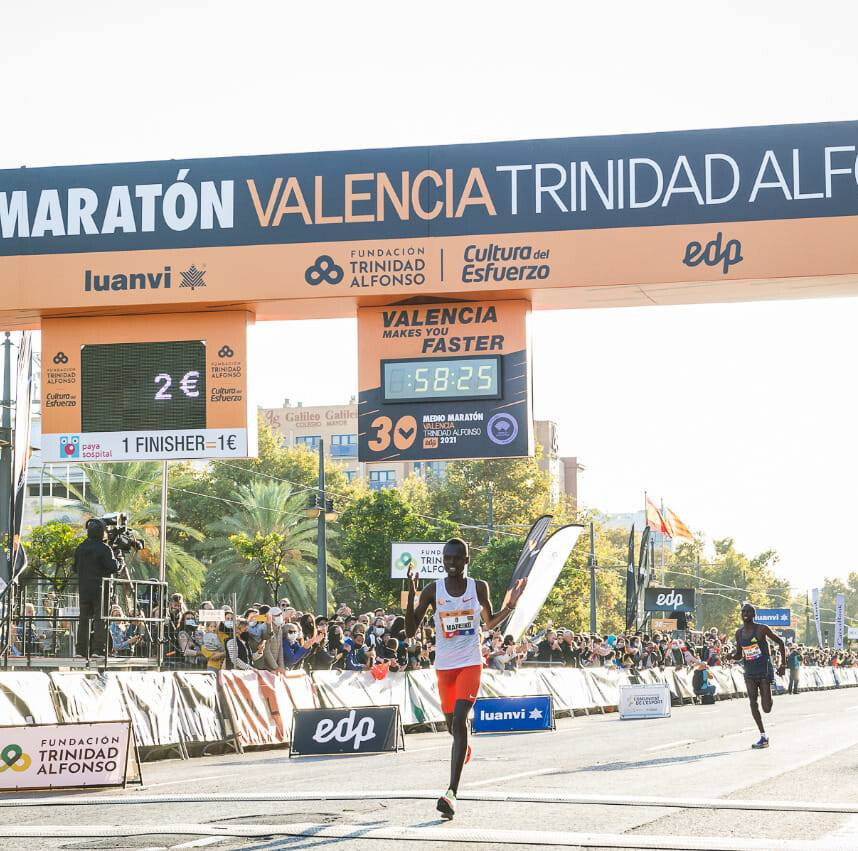
He said he was spotted by Chicago race organisers in London Marathon where he paced Kelvin Kiptum to victory early this year.
"In London, I paced Kiptum to the second-fastest marathon in the world in London and exited at the 30km mark, just 12km to the finish. Some race organizers were amazed at what I did and that is why I am heading to Chicago,” he revealed.
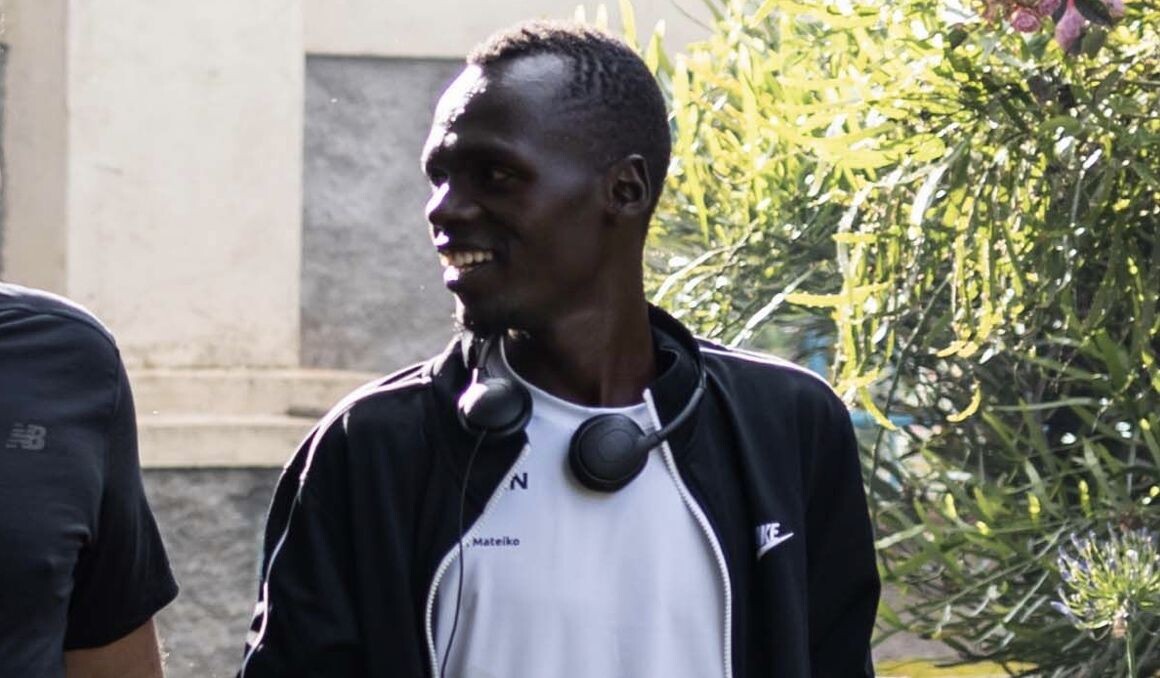
After finishing second in at the Kip Keino Classic last year, he went ahead to finish in position eight in the 10,000m at the World Athletics Championships in Eugene, Oregon.
The inaugural Eldama Ravine Half Marathon champion said he is undergoing intense to post good results in Chicago.
The Ras Al Khaimah Half Marathon silver medalist failed to make Team Kenya for the 2021 Olympic Games after finishing sixth in 10,000m at the national trials.
Mateiko has a personal best time of 58:26 set in the Valencia Half Marathon last year, where he finished third. He finished third in Copenhagen after timing 59:25.
He will be up against defending champion Benson Kipruto, who will be seeking to defend his title after winning last year's race in 2:04:24— the fourth-fastest time ever in Chicago. Should Kipruto win again, he’ll be the first back-to-back men’s open field champion since the late Sammy Wanjiru in 2010. Also in the race are Kenya's John Korir ( 2:05:01) and Wesley Kiptoo (debutant).
Other key names in the field include Belgium's Bashir Abdi (2:03:36), the Ethiopian duo of Dawit Wolde (2:04:27) and Seifu Tura(2:04:29) and United States Galen Rupp (2:06:07) among others.
(07/28/2023) ⚡AMPby Emmanuel Sabuni
Bank of America Chicago
Running the Bank of America Chicago Marathon is the pinnacle of achievement for elite athletes and everyday runners alike. On race day, runners from all 50 states and more than 100 countries will set out to accomplish a personal dream by reaching the finish line in Grant Park. The Bank of America Chicago Marathon is known for its flat and...
more...Defending champions Angela Tanui and Edwin Soi to return to Bogota Half Marathon
Tanui and Soi won last year’s edition of the Half Marathon in style, clocking 1:13:29 and 1:05:27 respectively.
Defending champions Angela Tanui and Edwin Soi will return to Colombia for the Bogota Half Marathon on Sunday, July 30.
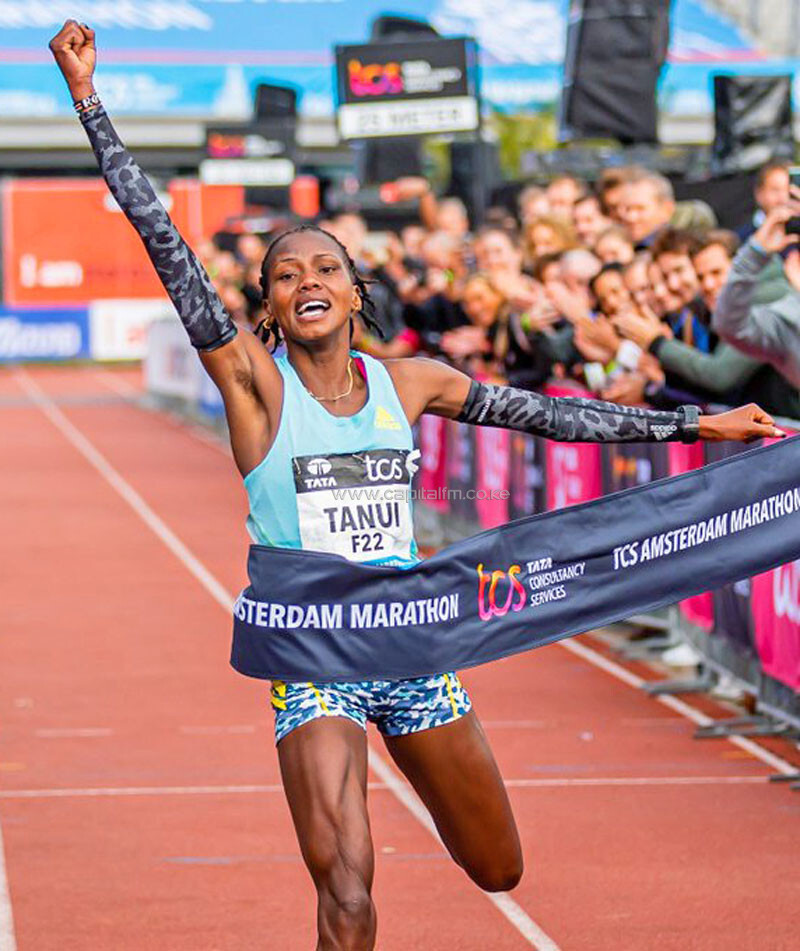
Tanui and Soi won last year’s edition of the Half Marathon in style, clocking 1:13:29 and 1:05:27 in the women’s and men’s races respectively.
Soi is the fastest in the men’s field with a Personal Best time of 1:00:24 and he will be opening his season at the event. He will enjoy the company of compatriot Daniel Muteti who is also among the top entries.
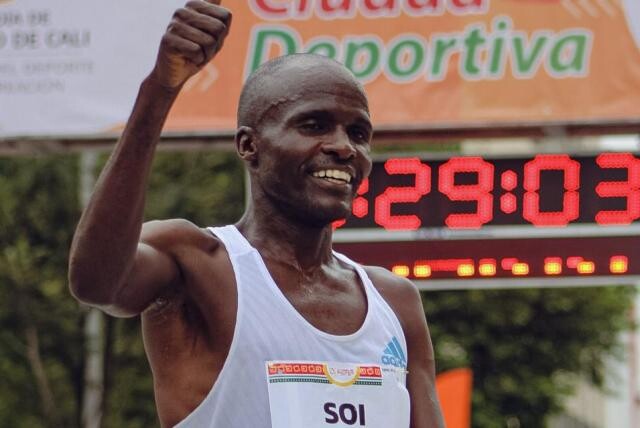
On his part, Muteti will be lining up as the third fastest in the field and so far, this year, he has only participated in two Half Marathons. He opened his season with a 12th-place finish at the Nationale-Nederlanden Warsaw Half Marathon before winning the Cereales Angel Lima Half Marathon.
The Kenyan duo will face a stern test from Morocco’s Omar Ait Chitachen who will be lining up as the second fastest in the field. Chitachen has competed in three races so far. He opened his season with a 16th-place finish at the Osaka Marathon.
He then proceeded to the Xiamen Marathon where he finished third before winning the Rabat Half Marathon.
Another threat will come from Ethiopia’s Sisay Lemma. The 32-year-old Ethiopian has competed in two marathons so far this season. He started off with the Tokyo Marathon which he unfortunately did not finish and then later went for the Prague Marathon where he finished second.
In the women’s field, Tanui will be joined by compatriot Veronica Wanjiru who has also recorded good times over the 21km distance since the season started.
Wanjiru finished fourth and third at the Publix Atlanta Half Marathon and the San Blas Half Marathon respectively.
The Kenyan duo will be up against the Ethiopian duo of Zenebu Fikadu and Anchialem Haymanot who will be looking to give them a run for their money.
(07/28/2023) ⚡AMPby Abigael Wuafula
Bogota Half Marathon
The Bogotá International Half Marathon, or mmB as it is traditionally known, is an annual road running competition over a half marathon distance 21.0975 kilometres (13.1094 mi) taking place in Bogotá, Colombia in late July or early August. Established in 2000, it holds IAAF Gold Label Road Race status, making it the first and thus far only South American race...
more...TD Beach to Beacon 10K founder and Olympic gold medalist Joan Benoit Samuelson offers tips ahead of race
The TD Beach to Beacon 10K is happening on Saturday, August 5,and it's celebrating a major milestone: 25 years. It was founded in 1998 by Olympic gold medalist and Mainer Joan Benoit Samuelson.
The race draws top athletes from around the world to Cape Elizabeth.
TD Bank sponsors the race and, this year, the beneficiary is Valo, a nonprofit organization that offers free programs to help Maine teens with their emotional wellbeing.
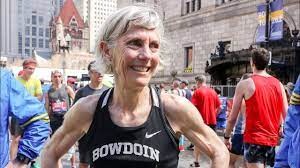
Benoit Samuelson said a diverse mix of people run the race, which makes it even more exciting for all.
"The kids run came along shortly after the 10K, and now the high school mile, which is very competitive, so there is something really for everybody," she explained. "
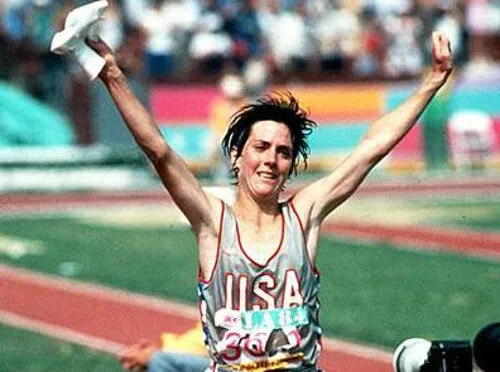
And my favorite part of the race is the fact that we've pulled many runners off the sidelines; those people who have come to cheer the runners on and then asked themselves, 'Do you think I might be able to cover the distance?' and they come out and they cover the distance. And I love being at the finish line for the invited runners, the professional runners, and I like being at the finish line when the stragglers come in, those people who never thought they could do the distance."Race day includes the wheelchair division, elite women, and the general public. The competitive high school mile and the children's 1K race will take place on Friday, August 5, at Fort Williams.
Benoit Samuelson said she founded the race as a way to give back to her community and promote the importance of a healthy lifestyle. This year, more than 6,500 runners and 800 volunteers are expected to participate.Larry Wold is the president for TD Bank in Maine. He is a legacy runner, meaning he has run the race for the past 24 years.
"To be able to run in the same race at the same time with world class athletes, with world record holders, with Olympic gold medalists, and know that you are in the same event they are, [it] has a fun attraction to it," he explained. "We know there are families that have now established sort of family routines around this event."
Wold offered some tips for everyone participating.
"Don't go out too fast. Make sure you are well hydrated, let the crowd bring you along, run a nice steady comfortable pace, and you are going to be great," he said.
Of course, Benoit Samuelson also gave some advice for runners.
"Just make sure your buildup is gradual. Don't try to build room over night. It's important to stay fit at some level throughout the year, and then a lot of people go out and run the course, some people have never gone 10K in training and they hope that they can go the distance after maybe running 3 to 5 mile runs on a regular basis," she said. "Don't try anything new race week, meaning don't change your diet in any significant way and don't try the newest and latest item on the market that might improve your performance. Make sure you have double knots in your shoe laces."
Race day is usually hot and humid, so Benoit Samuelson said to wear at hat and clothes that are light in color.
(07/27/2023) ⚡AMPby Hannah Yechivi
TD Beach to Beacon 10K
Joan Benoit Samuelson, a native of Cape Elizabeth, Maine, won the first-ever women's Marathon at the 1984 Olympics in Los Angeles and is founder and chair of the TD Bank Beach to Beacon 10K. "A long time dream of mine has been realized" says Samuelson. "I've always wanted to create a race that brings runners to some of my most...
more...How new runners can add speed and ramp up confidence
As a newer runner, adding speedwork can be intimidating. It shouldn’t be–speedwork is an essential addition to your weekly mileage, and adding a little oomph to an occasional workout will boost your confidence and have you ready to try other new-to-you style training techniques in the future. You can try these speed sessions on road, trails, track or treadmill.
Before you start incorporating short speed sessions into your training, make sure you have been running for at least six months and are injury-free. Here are two simple workouts to get your legs used to moving quickly. With time and added strength, increase repeats or lengthen intervals.
Short speedy intervals
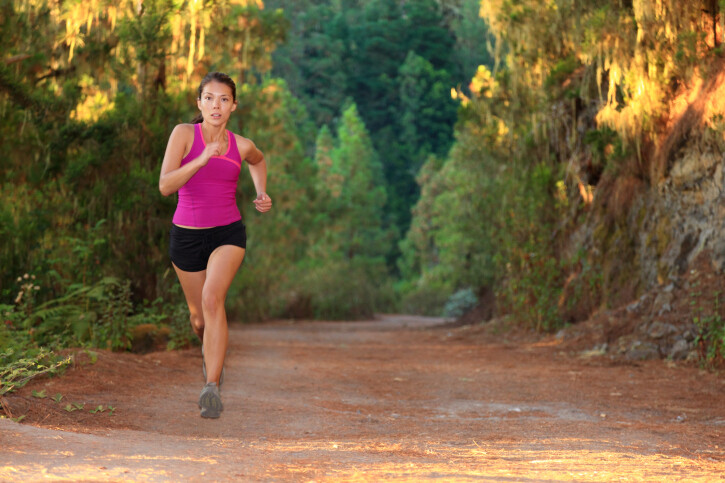
Don’t let this workout scare you away–if it seems like too much, simply shorten the intervals so that they seem manageable. 30 seconds fast with a one-minute recovery is fine. If you feel like you need to walk during your recovery, it’s perfectly OK to do so. Don’t worry about your pace during intervals, simply go by effort. You’ll probably be pleasantly surprised at how well you do, and how soon you can increase your repeats.
The workout:
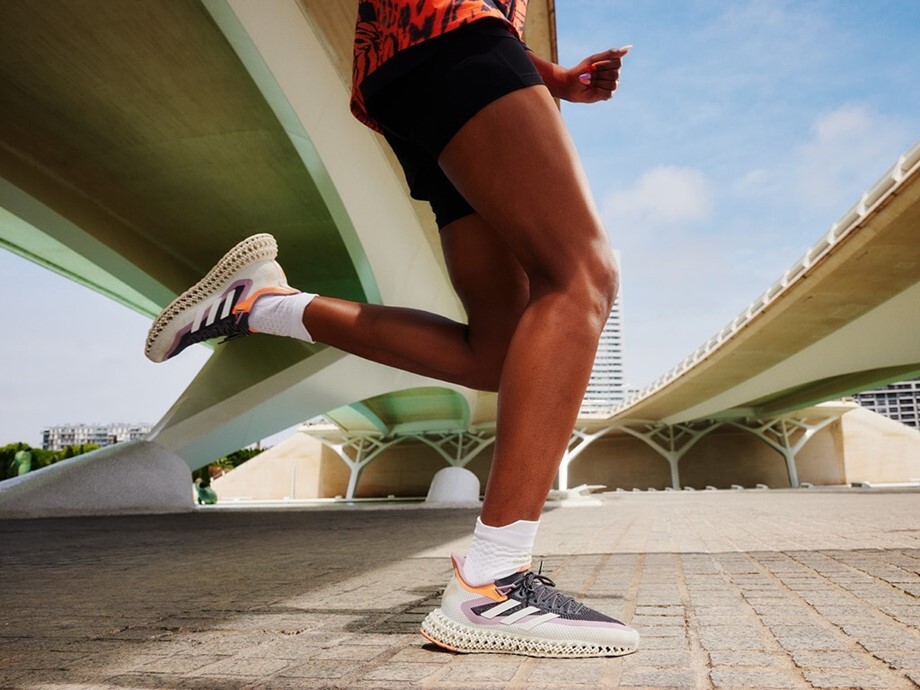
Warm up with 10 minutes’ easy running
Five to eight repeats of one minute hard, followed by two minutes’ easy running or walking to recover
Cool down with five to 10 minutes’ easy running
Strides
Strides can be tacked on to the end of any easy run and are a fun, efficient way to begin adding speed. If you’ve never tried strides before, don’t worry: it’s hard to go wrong.
Start your strides by going easy, focusing on a short, quick stride, and then gradually increase your speed by lengthening your stride. Focus on staying relaxed and running smoothly. It should feel like a controlled faster pace, not a sprint.
The workout:
Easy run (approx. 30 minutes)
Four to five strides of 15 to 30 seconds each, 45 seconds rest in between
Recovery goes hand-in-hand with speedwork for all runners, from beginners to seasoned veterans. In these beginner speed workouts, the recovery intervals are longer in duration than the hard intervals. As you build strength, cut down recovery time to make the workouts more challenging. Take a very easy recovery running or rest day following any speedwork.
(07/27/2023) ⚡AMPby Keeley Milne
Don’t tell me what’s impossible – Tom Evans confirms UTMB is up next
Tom Evans has announced that he will run at this year’s Ultra Trail du Mont Blanc (UTMB) after a late alteration to his 2023 plans.
The British runner claimed a “dream” victory at Western States last month to add to his “super fun” Ultra-Trail Snowdonia win in May and second place at Black Canyons 100K in February.
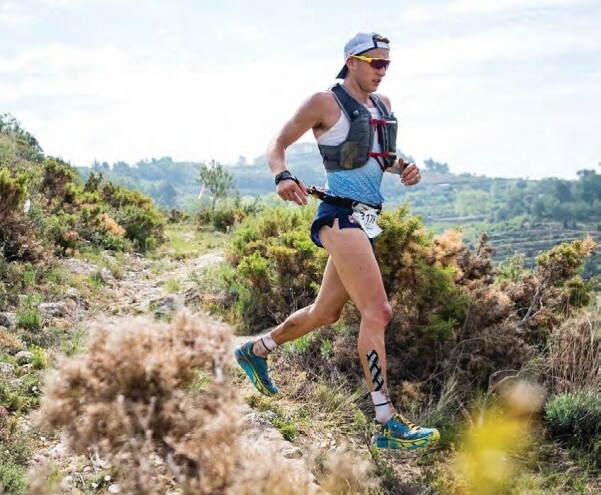
Evans crowned his return from knee surgery to finish third behind Kilian Jornet at last year’s UTMB, but had not scheduled in the iconic Chamonix race for 2023.
Western States recovery
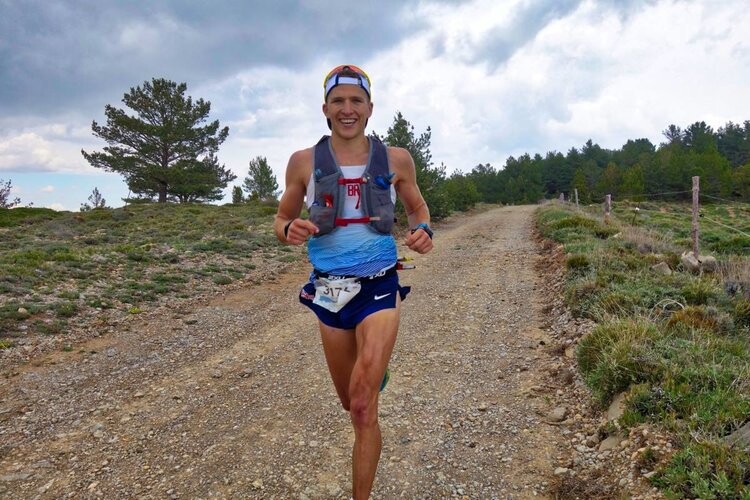
His race calendar for this year, which he shared on Instagram in January, included a Fastest Known Time (FKT) attempt of the Bob Graham Round in September, but there was no mention of UTMB following Western States.
However, after his dominant win in California’s Sierra Nevada Mountains, a defiant Evans suggested that UTMB could still be on the cards.
“If I recover well from this, I’ll race UTMB this year,” Evans said at the end of adidas TERREX’s documentary on his Western States win.
“People have said it’s impossible to do. Don’t tell me what’s impossible or not.
Irresistible challenge
Over the next three weeks, Evans’ recovery clearly went to plan and yesterday he revealed that he was unable to resist the allure of UTMB, which takes place next month.
“Couldn’t resist the chance to make more memories like this,” he wrote on Instagram. “See you in Chamonix!
“Next up… UTMB.
“The Western States 100 / UTMB double is something that has always interested me. It wasn’t on my original plan but things have to change with how you’re feeling!
“And now, I can’t wait for the challenge!”
(07/27/2023) ⚡AMPby Olly Green
North Face Ultra Trail du Tour du Mont-Blanc
Mountain race, with numerous passages in high altitude (>2500m), in difficult weather conditions (night, wind, cold, rain or snow), that needs a very good training, adapted equipment and a real capacity of personal autonomy. It is 6:00pm and we are more or less 2300 people sharing the same dream carefully prepared over many months. Despite the incredible difficulty, we feel...
more...Study shows risk of sudden cardiac arrest from exercise is low among older adults
Every so often, you hear a tragic story about someone who collapsed from cardiac arrest while out for a run, or while racing a marathon. Often their running habit will be called into question, with speculators asking whether they were simply running too much. This can be unsettling, but a new study from the Cedars-Sinai Medical Center in Los Angeles on older adults concluded that sports-related sudden cardiac arrest is exceedingly rare.
The study
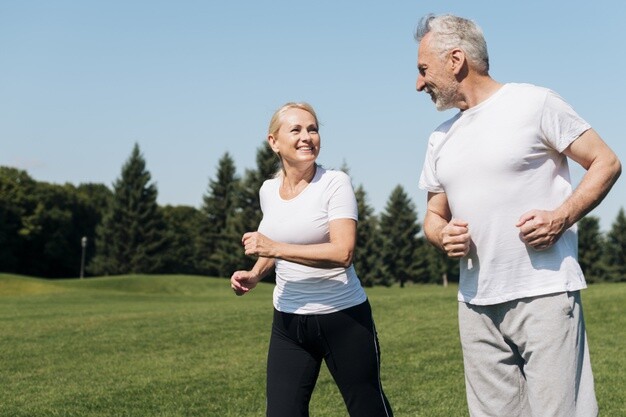
Researchers analyzed data on sudden cardiac arrests that occurred in people age 65 and older and found that of the 4,078 total sudden cardiac arrests they studied, only 77 occurred during or following exercise, such as running, cycling, going to the gym or playing golf or tennis. That means only 1.9 per cent occurred during or after a bout of exercise.
The researchers also analyzed medical records for 47 of the 77 people who experienced sudden cardiac arrest during or after exercise, as well as the records for 3,162 people who experienced non-exercise-related sudden cardiac arrest. Perhaps not surprisingly, those who experienced sports-related sudden cardiac arrest had fewer cardiovascular risk factors than the others.

The sports-related group was also four times more likely to survive than the non-sports-related group, partly because they typically experienced sudden cardiac arrest in a more public location (assuming they were exercising outside, at a fitness facility, and/or with other people), and so were able to get help faster.
The takeaways
The researchers point out that in rare cases, exercise can trigger an irregular heart rhythm that could lead to sudden cardiac arrest, but this generally shouldn’t dissuade people from exercising. Exercise is one of the most heart-healthy activities you can do, and while there are risks, the potential benefits are far greater.
“The annual incidence of sports-related sudden cardiac arrest among older adults is extremely rare,” said Sumeet S. Chugh, senior author of the study. “This means older people who regularly participate in sports should continue.”
Chugh adds that those who wish to begin a new exercise regime, particularly older adults, should talk to their doctor first to ensure they can do so safely. Of course, if you are exercising and you start experiencing any new symptoms, you should consult your doctor.
As always, if you’re starting a new running program, you should take it slow and build your mileage gradually, no matter how old you are. Not only will this ensure you can exercise safely, but it will also help prevent injuries that could slow or even stop your progress entirely.
(07/27/2023) ⚡AMPby Brittany Hambleton
Usain Bolt kicks off 2024 Olympic torch relay in Paris
On Tuesday, under the Eiffel Tower in Paris, Jamaican sprinting legend Usain Bolt helped kick off the Olympic torch relay ceremony, unveiling the torch and marking 365 days until the start of the 2024 Olympic Games.
The world record holder in the men’s 100m, 200m, and 4x100m events, Bolt proudly hoisted the torch high into the air, captivating the audience with his signature lightning-bolt pose. The sight of the world’s fastest man with the symbolic torch filled the air with excitement as thousands of Parisians turned up in anticipation of the upcoming games.

“I’m happy to be here,” said Bolt, the retired sprinter. “Paris has always been a city that I enjoyed competing and hanging out in. I’m excited for the Olympics next year. I’ll be here with my family.”
During the ceremony, Bolt unveiled the Olympic torch alongside Paris Mayor Anne Hidalgo and Paris 2024 chief Tony Estanguet. The eight-time Olympic champion was paraded through the cheering crowd of spectators, waving French flags, as he unveiled and carried the torch around.

The opening ceremony of the 2024 Olympics is scheduled for July 26, 2024, and it will be the first Olympic ceremony in history to take place outside the traditional stadium setting, on boats, along the picturesque River Seine in front of an audience of over half a million spectators. The unveiling took place on the banks of the iconic river, which also inspired the design of the torch.
“I think it’s gonna be one of the best, if not the best, opening ceremony,” said Bolt to reporters. “Imagine everybody standing outside, across the bridges cheering people up. It’s never been done before…”
The torch, crafted with lightweight polished steel and a champagne hue, boasts a remarkable design imitating the reflection of the Eiffel Tower on the rippled surface of the Seine. This creative touch aims to convey a sense of peaceful energy, reflecting the spirit of Paris and the Games.
The Olympic flame will be ignited on April 16, 2024, in the ancient city of Olympia, Greece, the birthplace of the Games, symbolizing the beginning of the torch’s journey to Paris. The torch relay will pass through various French cities and landmarks, including the Pantheon in Paris and the picturesque Mont Saint-Michel, before the torch is passed to some of France’s overseas territories.
(07/26/2023) ⚡AMPby Running Magazine
Paris 2024 Olympic Games
For this historic event, the City of Light is thinking big! Visitors will be able to watch events at top sporting venues in Paris and the Paris region, as well as at emblematic monuments in the capital visited by several millions of tourists each year. The promise of exceptional moments to experience in an exceptional setting! A great way to...
more...Travel tips for runners: keep training simple away from home
It’s the season for road trips, family get-togethers and spontaneous getaways, and for many runners that means trying to fit in our regular training around an unpredictable schedule. While travel is fun and exciting, it can also be stressful, and logging some miles can help ease mental angst. Here’s how to make the most of your trip, wherever you go, while squeezing in some quality run time.
Plan ahead (while packing!)

Make sure you have your running gear handy on your trip. If you’re flying, keep a set of running clothes and shoes in your carry-on–that way you can head out for a run if you’re unexpectedly delayed somewhere. Hey, maybe you’ll even find an airport Strava segment to tackle.
Map out your routes
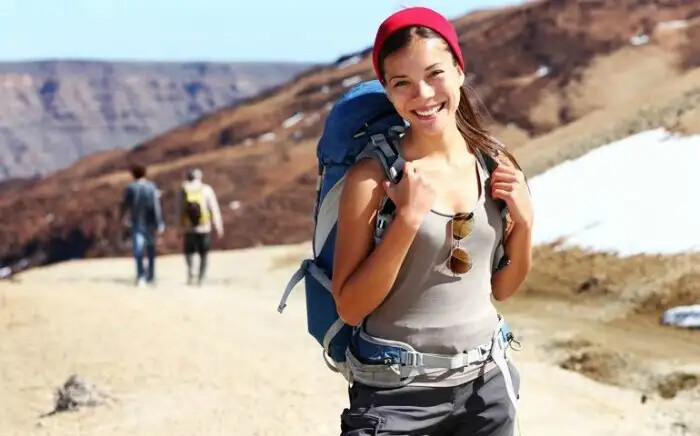
Do your homework before your trip, if possible, making safety your goal. Many towns have a local running store, and contacting them can be a great way to get info. If you have some serious intervals planned, calculate how long they will take you and plan out a route that takes you out and back. It sounds silly, but doing the mapping and math pre-trip will make it that much easier to hop out of bed, lace up and head out (and you’ll have one less excuse to miss a run). Apps like Trailforks and Strava can be very useful.
Run early
Hey, maybe you love your sunset runs and find the pre-dawn efforts a struggle–me too. On a recent trip, I discovered that I was far more likely to fit in my run if I managed to get up before everyone else and grind it out. It’s tempting to imagine you’ll fit in your run in the evening before bed or supper, but if you’re like me, you’ll be too tired from the day’s adventures or end up having a jam-packed schedule. Those sunrise runs grow on you, I promise. Heading out for your day having already fit in your running is a huge mental boost, as well.
Fill your family (or coworkers) in
Let the people you are with know what you’re up to. It’s important to tell people where you’re headed if you’re running outside, particularly in new-to-you areas (safety first!) but fitting in your runs will be easier if everyone is on board. Better yet, invite your travel companions or hosts to run with you. You may have to change up your pace, but having company will make the miles fly by, and you may help out an aspiring beginner runner.
Be flexible
Remember that skipping a run won’t derail your fitness, and taking things slowly because others are joining you should be fun, not frustrating. Stressing about your training may cause you to miss out on adventures and experiences while traveling. Finding a balance can be tricky, but opt for maximum fun. Don’t be afraid to switch things up, and head out on a bike ride or a hike instead of your scheduled speed session. You’ll create lasting memories, and your VO2 max will be just fine.
(07/26/2023) ⚡AMPby Keeley Milne
Kenyan Samwel Mailu sets ambitious goal as he returns to the Frankfurt Marathon
The Kenyan runner finished second on his debut in the German city last year and want to go one better in 2023.
Vienna Marathon champion Samwel Mailu has set his target ahead of making a return to the Frankfurt Marathon on October 29.
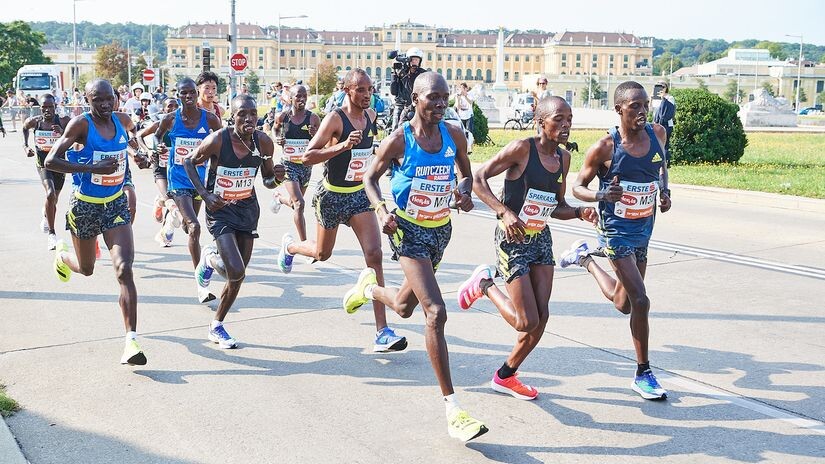
Mailu, one of the rising talents in the marathon, has already proved that Frankfurt is a good place for him after a brilliant marathon debut last year where he finished second.
During last year’s event, Mailu had originally been entered as a pacemaker but he did not drop out of the race and, despite his role, finished second in 2:07:19.
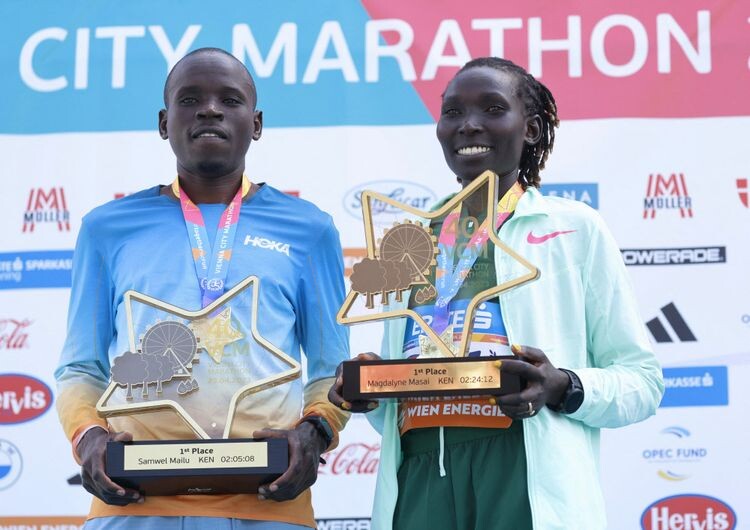
This year, Mailu triumphed in Vienna with 2:05:08, breaking the men’s course record which had stood for nine years.
“I have a good feeling about returning to Frankfurt. After all, I made my marathon debut there and the organisation is very good. My aim is to improve my personal best and to run under 2:05 in Frankfurt,” Mailu said.
Meanwhile, race director Jo Schindler expressed his excitement at having brought on board Mailu, alongside Matea Parlov Kostro, who has also been entered as the top female athlete. The event will also be marking its 40th anniversary.
“In Matea Parlov Kostro and Samwel Mailu, we’ve succeeded in recruiting two rising stars of the international marathon scene," he added.
"I’m delighted that we are going to have two popular figures running on the start line in Frankfurt.
"After our successful comeback from the COVID-19 lockdown a year ago, we want to stage an exciting show of running in celebrating the anniversary of the oldest German city race in Frankfurt,” Schindler said.
(07/26/2023) ⚡AMPby Abigael Wafula
Mainova Frankfurt Marathon
Frankfurt is an unexpectedly traditional and charming city, with half-timbered buildings huddled in its quaint medieval Altstadt (old city), cosy apple wine taverns serving hearty regional food, village-like neighbourhoods filled with outdoor cafes, boutiques and street art, and beautiful parks, gardens and riverside paths. The city's cache of museums is second in Germany only to Berlin’s, and its nightlife...
more...Sha'Carri Richardson gets ready for upcoming World Athletics Championships
Sha'Carri Richardson took to social media to announce that she was all set to compete in her next race at the 2023 World Athletics Championships, to be held in Budapest next month.
"My first real season and I'm loving the process of learning myself, pushing myself as well as knowing when to be still", she wrote.
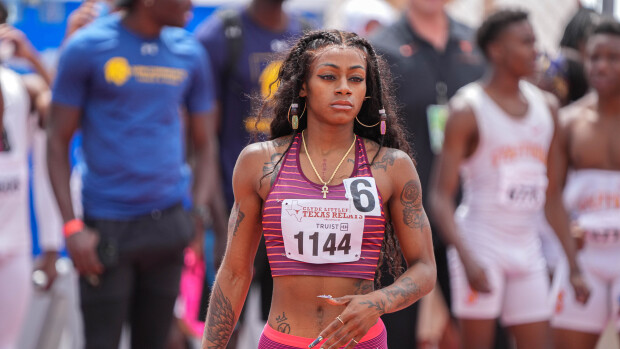
"Budapest UP NEXT", she added.
The 23-year-old won at the Silesia Diamond League in Poland on July 16, where she ran a thrilling dash of 100m in 10.76 seconds. This came after her splendid win at the USATF Outdoor Championships at the Hayward Field in Eugene, Oregon, on July 7, where Richardson completed the race in 10.71 seconds.
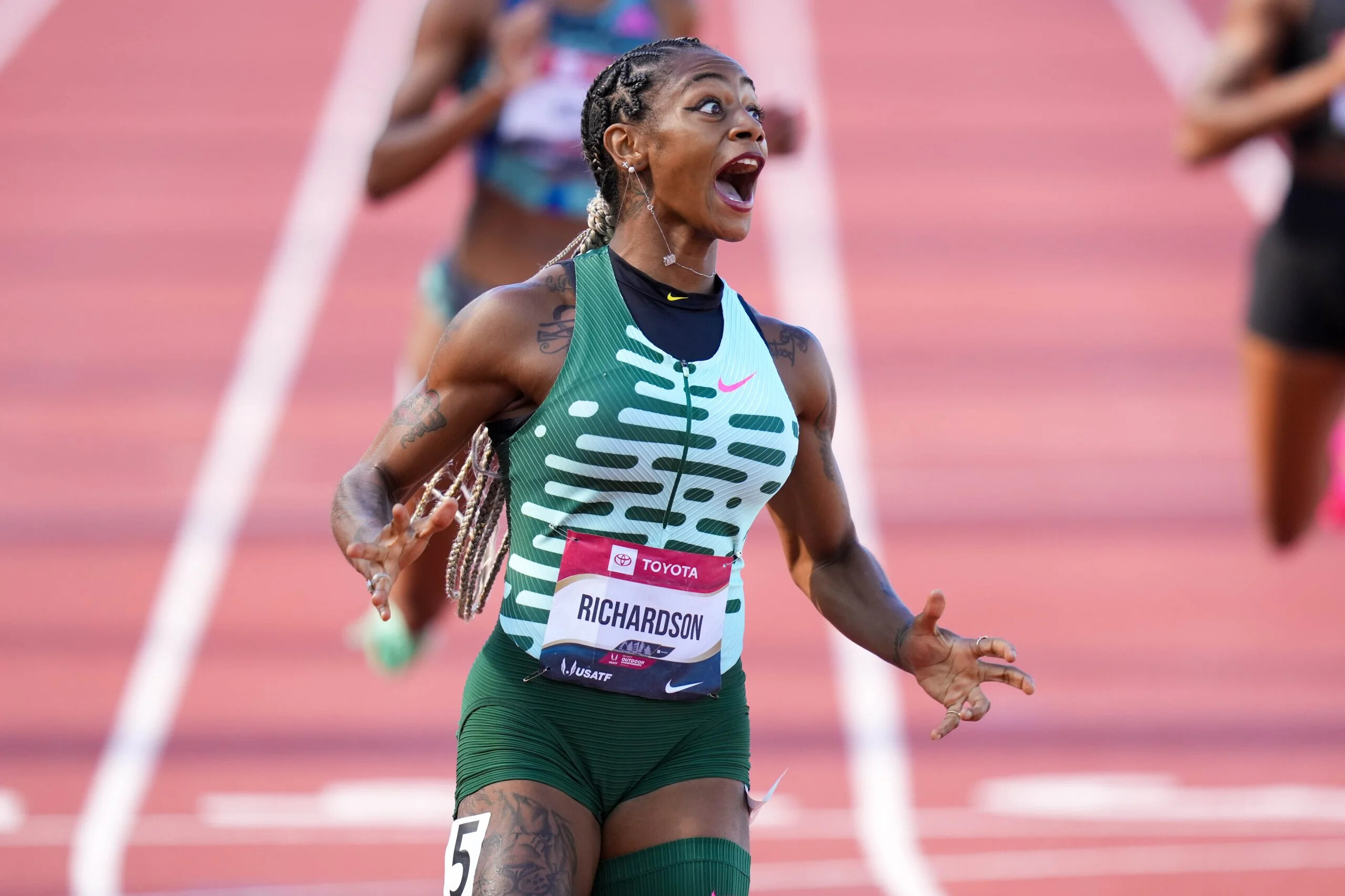
The 2023 World Athletics Championships to be held in Budapest will have a star-studded line-up. Along with Sherika Jackson, Sha'Carri Richardson will also be competing with the top Jamaican sprinter, Elaine Thompson, who has won the Olympic gold medal five times, and Shelly-Ann Fraser-Pryce, who has three Olympic gold medals to her name so far.
The face-off between the American and the Jamaican athletes would hence be a show to watch for in Budapest, Hungary.
(07/26/2023) ⚡AMPby Janhavi Shinde
World Athletics Championships Budapest 23
From August 19-27, 2023, Budapest will host the world's third largest sporting event, the World Athletics Championships. It is the largest sporting event in the history of Hungary, attended by athletes from more than 200 countries, whose news will reach more than one billion people. Athletics is the foundation of all sports. It represents strength, speed, dexterity and endurance, the...
more...Kelvin Kiptum to race 2023 Chicago Marathon
The second fastest marathoner in history will not face Kipchoge at Berlin after all.
The 2023 Chicago Marathon revealed on Tuesday morning that Kiptum will make his North American marathon debut on Oct. 8, postponing the highly anticipated potential clash against Eliud Kipchoge, who will appear at the 2023 Berlin Marathon.
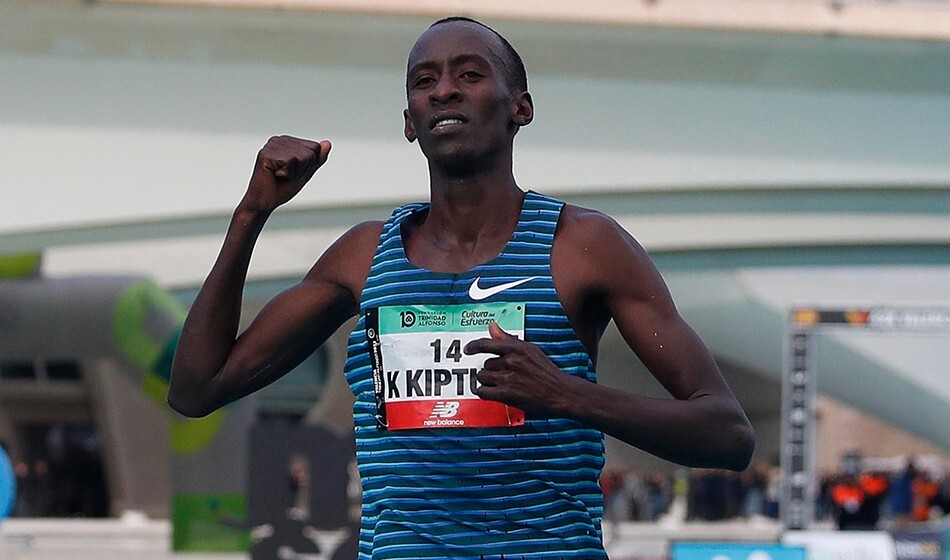
In the last eight months, Kiptum has emerged as one of the world’s fastest marathoners. In December, he made his marathon debut at the 2022 Valencia Marathon, securing a commanding victory in a remarkable 2:01:53, the fastest debut in history. He continued his dominance at the 2023 London Marathon, where he shattered Kipchoge’s course record and came remarkably close to the world record, with a 2:01:25 finish.
Despite his achievements in London, Kiptum remains relatively unknown on the major marathon scene. The 23-year-old from Eldoret, Kenya, is self-coached and did not enter marathoning from a prolific track career like Kipchoge, or Ethiopia’s Kenenisa Bekele.
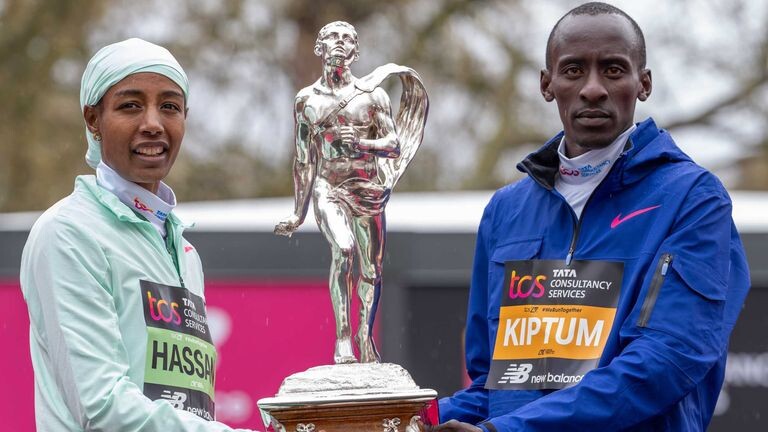
In June, Kiptum was selected for Team Kenya in the 2023 World Athletics Championships marathon. However, he declined the invitation to focus on a fall marathon instead. With Kiptum eyeing either Chicago or Berlin, many anticipated a head-to-head battle between the two Kenyan titans in Berlin, renowned for its flat and incredibly fast course, having been the location where the previous eight men’s marathon world records were set.
Choosing Chicago, which takes place two weeks after Berlin, clearly indicates Kiptum’s intent to vie for a victory and target Kipchoge’s world record of 2:01:09. Chicago’s primarily flat course, with only 70 metres of elevation gain, offers a promising setting.
However, a win in Chicago won’t come easy, as Kiptum will face off against one of the best tactical marathoners in the world and the reigning champion, Benson Kipruto. Kipruto comes off a second-place finish at the 2023 Boston Marathon, where he was runner-up to his training partner, Evans Chebet. Ethiopia’s Seifu Tura, who knows the Chicago course well, having won the race in 2021 and finished as runner-up to Kipruto last fall, will also return. Among the other elite names in the men’s field are Galen Rupp, Conner Mantz and Belgian 2020 Olympic marathon bronze medallist Bashir Abdi.
(07/25/2023) ⚡AMPby Running Magazine
Bank of America Chicago
Running the Bank of America Chicago Marathon is the pinnacle of achievement for elite athletes and everyday runners alike. On race day, runners from all 50 states and more than 100 countries will set out to accomplish a personal dream by reaching the finish line in Grant Park. The Bank of America Chicago Marathon is known for its flat and...
more...Could your gut hold the key to running motivation?
Why do some people seem to be more motivated than others to exercise? How can you increase your motivation to go out for a run or push harder in workouts? New research suggests that the answer may be found in your gut. According to researchers at the Perelman School of Medicine at the University of Pennsylvania, some species of gut-dwelling bacteria can increase your motivation to exercise.
The gut-brain connection
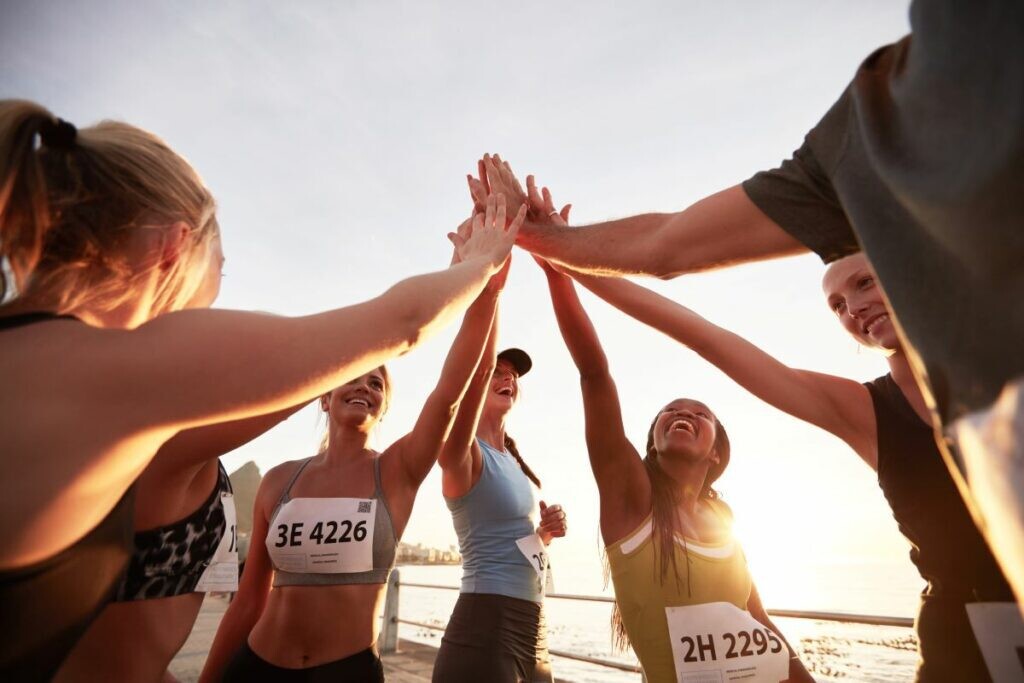
There has been a lot of research in the last decade dedicated to the connection between your gut and your brain, and it is now generally understood that your gut (specifically the billions of bacteria that live in your gut and intestines) has a profound impact on your mood, and even your behavior.
This new study, published in the scientific journal Nature, discovered that certain bacteria in the guts of lab mice had a substantial impact on their running performance. The reason, according to the study’s authors, can be attributed to the metabolites produced by these bacteria.
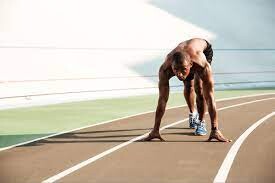
The study
The researchers set up the study to test for multiple factors that may influence running performance. Using a set of genetically diverse mice, they recorded their genome sequences, gut bacterial species, bloodstream metabolites and other data. To conduct the study, they simply measured how much voluntary wheel running the mice did every day, as well as how long they ran each time (to measure their endurance).
There was a significant difference in the amount of wheel running, as well as endurance, across the groups of mice, and the researchers used machine learning to measure which factors seemed to have the most influence on this difference.
The results
All bacteria in your body, including your gut, produce metabolites, which stimulate different nerves in your body. The researchers in this study discovered that the metabolites produced by certain gut bacteria stimulated sensory nerves in the gut that enhance activity in the region of the brain that is responsible for motivation during exercise.
The two main gut bacteria that had the greatest impact were eubacterium rectale and Coprococcus eutactus. These bacteria produced fatty acid amides (FFAs), which stimulated specific receptors in the gut called CB1 endocannabinoid receptors, which connect to the brain by way of the spine. When you stimulate these receptors, it increases the amount of dopamine in your brain, which increases your motivation to exercise.
In other words, mice that had more of these bacteria did a much higher volume of voluntary running and ran for much longer than mice that had less. They also found that if they gave the mice a broad-spectrum antibiotic, which reduced the number of bacteria in their guts, their running performance was reduced by 50 per cent. Interestingly, genetics only seemed to account for a very small amount of performance differences.
The takeaways
This research, which took place over a number of years, has only been done in mice, but it could have significant implications for humans. “If we can confirm the presence of a similar pathway in humans, it could offer an effective way to boost people’s levels of exercise to improve public health generally,” said study senior author Christoph Thaiss.
The team is now planning to do further research to confirm the presence of this pathway in humans, which could open the door for an entirely new branch of exercise psychology research. In the meantime, this is yet another reminder of the importance of having a healthy gut microbiome, so if you’re struggling with motivation to get out the door, maybe the answer is in your gut?
(07/25/2023) ⚡AMPby Brittany Hambleton
Ruth Chepngetich in search of a 3rd consecutive win at Chicago Marathon
Ruth Chepngetich will be on the starting line for the Chicago Marathon this Sunday. And the Kenyan champion is aiming for a third consecutive success. She will have her work cut out against some formidable competition, including Sifan Hassan.
Ruth Chepngetich dominated the Chicago marathon last year. Chepngetich won last year's race in 2:14:18, just 14 seconds off the world record. It was the second-fastest women's marathon performance of all time. It was the Kenyan's second consecutive victory. And this year, she is aiming to win for the 3rd time in a row. And she's hoping to clock her best time over the 42.195 km distance.I plan to defend my title and improve my time," said Chepngetich. There is no better race in the world than the Bank of America Chicago Marathon.
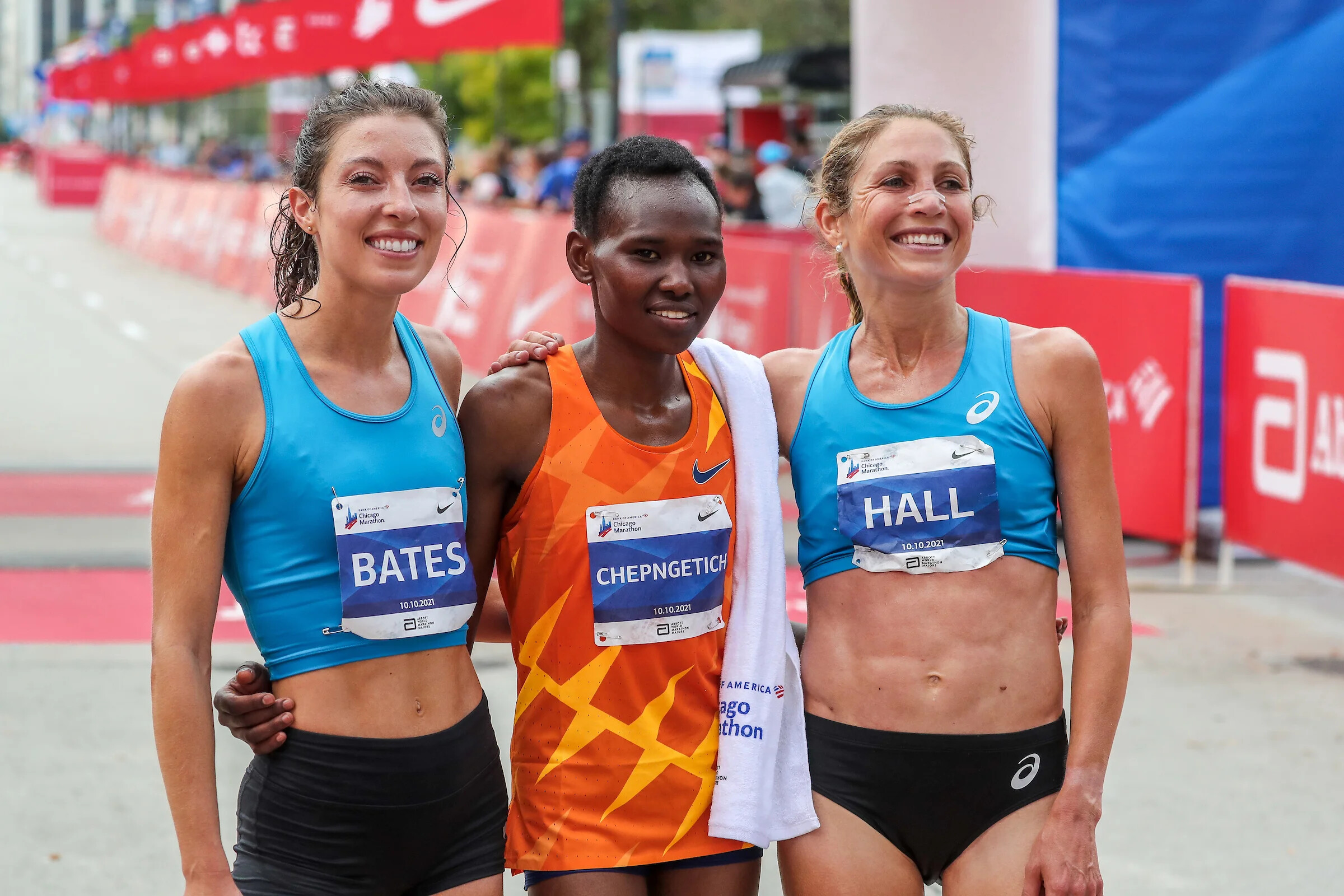
To do that, she will have to beat double Olympic gold medallist Sifan Hassan. The Ethiopian-born Dutchwoman hit the ground running on her marathon debut in London in April. Despite stopping twice to stretch, she closed a 25-second gap on the leaders to win and set a national record of 2h18mn33s.
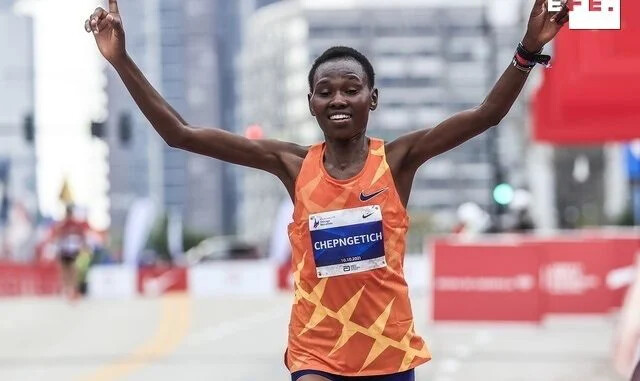
The world champion is nevertheless focused on the forthcoming World Athletics Championships. "At the moment, I'm concentrating on the World Championships in Budapest, so my preparation for the marathon will be very short, but as most people know, I like to be challenged," maintained Hassan.
Chepngetich and Hassan have only met once, at the 2018 Copenhagen Half Marathon where Hassan broke the European record with 1h05mn15s in his first serious attempt at the distance and Chepngetich finished fifth in 1h07mn02s.
(07/25/2023) ⚡AMPBank of America Chicago
Running the Bank of America Chicago Marathon is the pinnacle of achievement for elite athletes and everyday runners alike. On race day, runners from all 50 states and more than 100 countries will set out to accomplish a personal dream by reaching the finish line in Grant Park. The Bank of America Chicago Marathon is known for its flat and...
more...New world 1500m record for women 90-94 set at Masters championships
Dot Sowerby, age 90, on Sunday at Greensboro Nationals broke the World Record in the W90 1500 Meters, pending ratification. Dot clocked in at 11:30.62, more than a minute faster than the existing W90 1500m World Record of 12:34.67 set by Canadian Lenore Montgomery in 2020.
(07/24/2023) ⚡AMPTigist Ketema set a course record to win the women’s contest, and USA’s Diego Estrada won the men’s wharf to Wharf race
The latest results from the 2023 Wharf to Wharf 6 Mile race, which took place on Sunday, 23 July, in the City of Capitola. This year was the 49th edition of the event, and the races were won by Ethiopia’s Tigist Ketema, who set a course record to win the women’s contest, and USA’s Diego Estrada, the winner of the men’s race.
Highlighting the 2023 Wharf to Wharf 6 Mile competition, which took place in California, was the record-breaking performance by Tigist Ketema, who clocked an impressive 29:51 to secure the victory. Her time was a new women’s course record, and she pocketed USD $4000 for her effort.

The previous Wharf to Wharf 6 Mile course record of 29:59 was set by Kenya’s Caroline Rotich in 2018.
Kenya’s Sarah Naibei ran a time of 30:13 to take second place behind Ketema to collect USD $3000, with third place going to Ethiopia’s Werkuha Getachew, who clocked 30:37 and earned USD $2000.
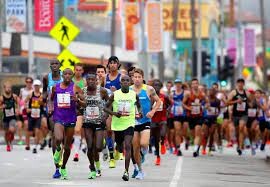
Meanwhile, USA’s defending champion Ednah Kurgat, who clocked 30:29 to win last year’s race, was only fourth this year in 30:38.
Diego Estrada Dominates Men’s Race
In the 2023 Wharf to Wharf 6 Mile men’s race, experienced runner Diego Estrada returned from his second-place finish to Emmanuel Bor last to clock 27:14 to run away with the title this year and earned USD $4000, plus an additional USD $1000 in bonus money.
Kenya’s Josphat Kipchirchir clocked in at 27:48 for second place, with his fellow countryman, Shadrack Keter, following home closely at 27:50 in third place. USA’s Colin Bennie (27:56) and Ben Blankenship (28:02) rounded out the top five men’s finishers.
(07/24/2023) ⚡AMPby Glen Andrews
Wharf to Wharf
Each year, on the fourth Sunday in July, thousands of runners from across America and around the globe return to Santa Cruz, California for the annual six-mile race to Capitola-by-the-Sea. First run in 1973 by a handful of locals, the Wharf to Wharf Race today enjoys a gourmet reputation in running circles worldwide. Its scenic, seaside setting, perfect weather, and...
more...Louisiana man Jarrett Leblanc runs 62-minute half-marathon on a treadmill
On Sunday, a Louisiana man took to the treadmill at his local gym in Lafayette, La., attempting to break the Guinness World Record for a treadmill half-marathon. Jarrett Leblanc, a 2020 U.S. Olympic marathon trials qualifier, clocked a time of 62:50 over 21.1 kilometers, breaking the old mark of 63:08 from 2020 and raising money for a non-profit organization that provides camps and programs for children with heart defects.
Leblanc had the speed on the treadmill set at a ridiculous 12.5 mph for nearly the whole challenge. According to local news, Leblanc was six seconds ahead of the record through his first 5K split (14:54) and built a 13-second cushion, hitting 29:46 through 10K. He ended up breaking the previous mark by 18 seconds. The previous treadmill record was held by U.S. 2:12-marathoner John Raneri, who placed fourth at the California International Marathon in 2022.
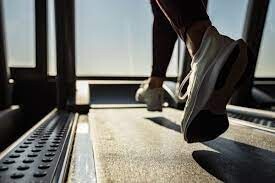
The 32-year-old told local news that his inspiration behind targeting the record came from a friend who broke this same record while running on a treadmill at altitude. “He broke the record at an altitude, so with me doing it at sea level, I knew I already had an advantage,” he said. “The thought of having a World Record attempt would not only bring the community together but also the entire world to get behind a great cause to help the children.”
Leblanc works full-time as a registered diagnostic cardiac sonographer at the Lafayette General Medical Center, and wanted to use his platform and passion to raise money for Camp Bon Coeur, a camp for children with hearts that have needed mending. Leblanc has so far reached nearly $10,000 of his $25,000 goal.
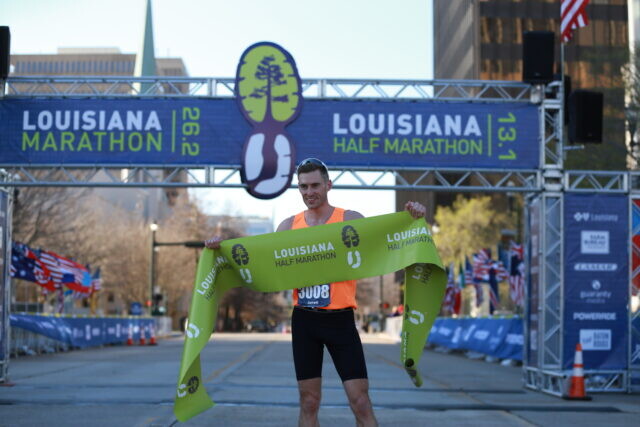
This world-record feat isn’t Leblanc’s first running accomplishment. In 2015, he became the first Louisiana native to run a sub-four-minute mile on Louisiana soil, clocking 3:59.95 in front of his friends and family in Lafayette. His success has also led him to qualify for the 2016 and 2020 U.S. Olympic Marathon Trials.
(07/24/2023) ⚡AMPby Running Magazine
Rai Benjamin eying world record performance at World Athletics Championships
USA’s 400 meters hurdler, Rai Benjamin, has his eyes set on the world record heading into next month’s World Athletics Championships from August 19-27 in Budapest, Hungary.
The record, 45.94 seconds, is currently held by Norwegian sprinter, Karsten Warholm.
The son of former West Indies and Antigua and Barbuda fast bowler, Winston Benjamin, Rai stopped short of revealing what targets he has set for the championships but said he believes it will take a record-breaking performance to beat Warholm in Budapest.
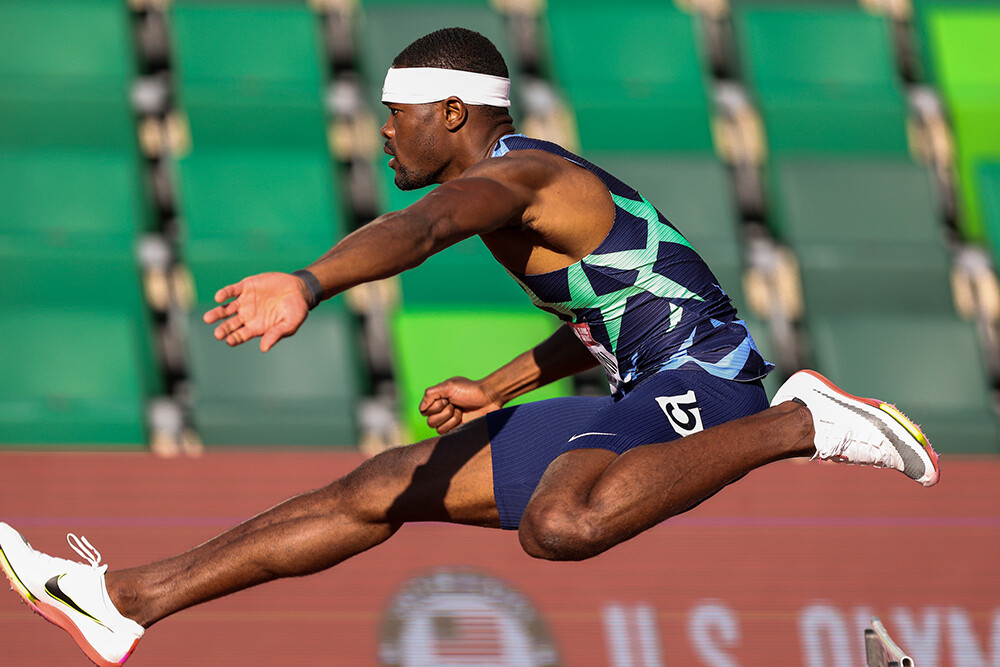
“Am not going to put it out there but I am looking for a sub world record mark because that’s what it’s going to take to win in all honesty because Warholm is in shape and I am in shape so it’s just about getting sharp now these next couple of days and fine-tuning a couple of things to get ready to go and do that,” he said.
Benjamin, who represented Antigua and Barbuda as a youth athlete, won a fourth straight US title in his signature event on July 9 at the 2023 US Track and Field Championships in Eugene, Oregon. In the final, he sped to his season’s best, a 46.62, to take the crown.
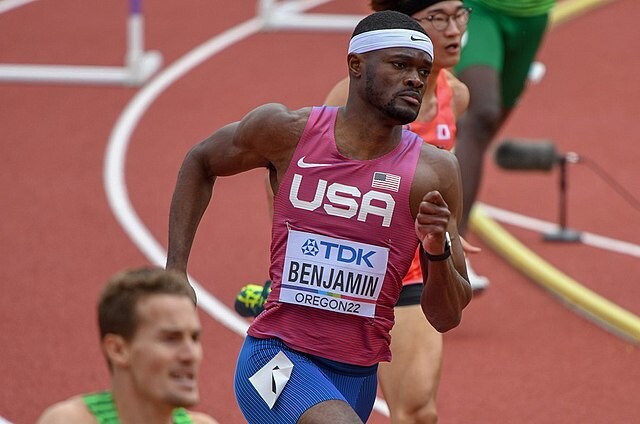
The athlete, who was speaking on the Good Morning Jojo sports show at the time, however revealed that he had struggled with an injury leading into the US event.
“I’ve been battling with a quad injury for the past three or four months so it’s been an interesting one because I was in great shape coming into the year where I opened up my season very well in the 400 and just preparing to do some big things this year.
“I had a quad injury after the first meet and then I had to go to Germany to get that [sorted]. After that we had USA’s [US trials] and I ran pretty fast there, so now it’s just about maintaining feeling good and training well,” he said.
Hoping to break the world record and become an Olympic champion in the near future, Benjamin said one of his goals is to fulfill his father’s dream of seeing him compete in the 200 meters.
“This was my initial plan, break the world record, win at the Olympics and then run the 200 the following World Championships but unfortunately nothing ever goes to plan.
“I am still trying to break the world record and then after I get done with that I’ll run the 200 and then I’ll run the 400 and go for that world record. I think I’ll run the 400 hurdles the last Olympics or the last two Olympic cycles,” he said.
In August 2021, Warholm broke the 400 meters hurdles record with a time of 45.94 seconds with Benjamin clocking 46.17 for the silver medal.
(07/24/2023) ⚡AMPby Neto Baptiste
World Athletics Championships Budapest 23
From August 19-27, 2023, Budapest will host the world's third largest sporting event, the World Athletics Championships. It is the largest sporting event in the history of Hungary, attended by athletes from more than 200 countries, whose news will reach more than one billion people. Athletics is the foundation of all sports. It represents strength, speed, dexterity and endurance, the...
more...New study shows how running affects the aging brain
Running is not only great for your physical health, but your mental and cognitive health as well. Regular exercise is necessary if you want to keep your brain healthy as you age, and new research from Florida Atlantic University explains exactly how it helps you maintain memory function as you get older.
For years, general cognitive decline and memory loss were regarded as an unavoidable part of the aging process. Thankfully in the last decade, research has shown that adult neurogenesis (the creation of new brain cells) is possible. The best way to ensure this happens? Regular exercise.

A study published earlier this year in the journal eNeuro demonstrated that long-term exercise increases the survival of adult-born neurons and modifies their network so they can continue participating in cognitive processes. In other words, the neurons you generated as an adult will continue to function effectively.
Running and the aging brain

The hippocampus and surrounding parts of the brain, which are responsible for learning and memory, are typically the first parts of your brain to start declining as you age. According to the researchers, running has been shown to increase the number of adult-born neurons in the hippocampuses of rodents, but they didn’t know if these new neurons remained integrated into the hippocampal network over the long term.
To find out, they tagged adult-born neurons in the brains of young adult mice, then came back to them after a six-month running regime (when the mice were middle-aged) to determine whether the neurons born in early adulthood remained integrated into the neural networks (i.e., whether they were still functioning effectively). The results showed that these old “new” neurons were still there, and still functioning.
“Long-term exercise profoundly benefits the aging brain and may prevent aging-related memory function decline by increasing the survival and modifying the network of the adult-born neurons born during early adulthood, and thereby facilitating their participation in cognitive processes,” said Henriette van Praag, one of the authors of the study.
The takeaways
Our brains are complex, mysterious organs, and there is still a lot we don’t know about how they function and how to keep them functioning well. This study is yet another reminder of the importance of regular exercise performed over a lifetime, and how that can impact your cognitive health. Runners, it seems, are a step ahead of the rest in terms of preventing cognitive decline, so if you needed a dose of motivation to get out the door today, perhaps that’ll do it.
“Our study provides insight as to how chronic exercise, beginning in young adulthood and continuing throughout middle age, helps maintain memory function during aging, emphasizing the relevance of including exercise in our daily lives,” said Carmen Vivar, a co-author of the study.
(07/24/2023) ⚡AMPby Brittany Hambleton
Tommy Rivers Puzey inspires in short film about his Boston Marathon
Beloved endurance athlete Tommy Rivers Puzey shares his “why” for running in a short film about his experience at the 2023 Boston Marathon, which the formerly-elite runner finished in 4:53:44–which is remarkable, considering that three years ago he was stricken by a rare and aggressive form of lung cancer that nearly killed him. “I don’t love to run fast, I just love to run,” Puzey says.
Puzey, or “Rivs” (as fans and friends call him), has for years been an inspiring force to the endurance world and casual runners alike. Once known for being an elite marathoner, ultrarunner and triathlete, Puzey now runs to celebrate his incredible recovery and to strengthen his body in case of a relapse. His illness and recovery are documented in a recently published book, Everything All At Once, written by his wife, Steph Catudal.
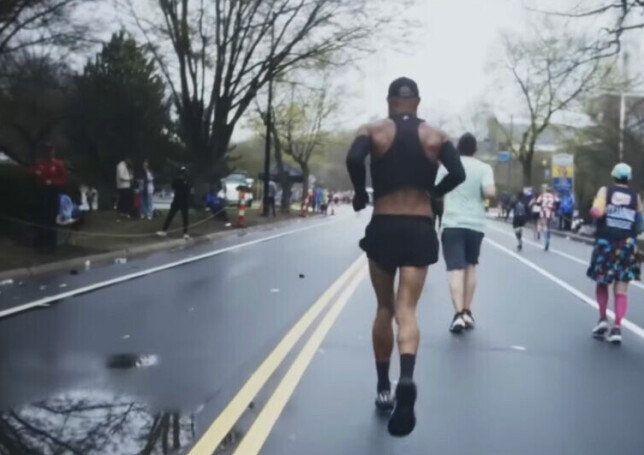
“Steph Catudal shares how her ultrarunner husband’s terrifying illness sparked transformation” — Canadian Running Magazine
View on the original site.
The short film poses the question of why we run: something Puzey can find a multitude of eloquent ways to answer.”It’s an expression of what we are as human beings,” Puzey shares in the film. “It’s what we’re meant to do.” Puzey, who lost 75 per cent of his lung capacity from his illness, has accepted and embraced his slower pace. “I don’t think anything has changed necessarily except that I’m not able to do it as fast,” he explains. Puzey returned to racing with the 2021 New York City Marathon, sharing high-fives and smiles as he walked the course with Catudal in 9:18:57.
The 2017 Boston Marathon was where Puzey ran his best, finishing in 2:18:57 for 16th place. In 2022, Puzey ran a vastly different, yet even more remarkable race. Due to his reduced lung capacity (and despite looking incredibly fit) Puzey must rest for 15-20 seconds for every 30 seconds of running, and he still manages to pull off a sub-five-hour finish.
Puzey explains that post-illness, the draw to the sport remains the same to him. Returning to the level of fitness he formerly had is not the goal; rather, he wants to “do everything [he] can to reach [his] greatest new potential.” Puzey has so many fans for a reason–he comes across as thoughtful and genuine and speaks with humility and grace. The film will have you pondering your why, and leave you inspired by a runner who never gives up.
(07/23/2023) ⚡AMPby Running Magazine
Strava unveils two new game-changing features
Attention Strava subscribers! Brace yourselves for two cutting-edge updates coming to the world’s most popular social media app for runners. These game-changing features will forever alter the way you use the app. With the new Waypoints feature, you can now draw and create your route, adding specific stops along the way. Plus, the Best Efforts feature allows you to view your top 10 fastest runs, tracking your progress like never before.
Draw your route with Waypoints
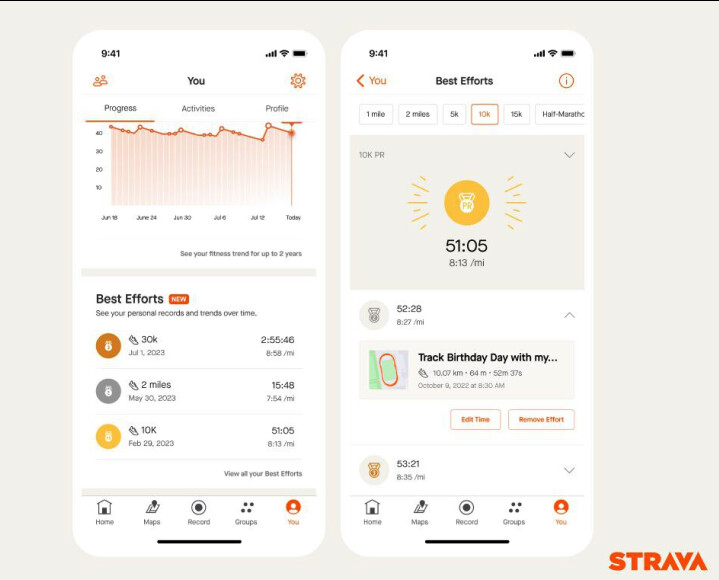
Many Strava users have eagerly awaited an upgrade to the route-designing feature, and their wishes have been answered with the introduction of the Waypoints feature, set to revolutionize your route-planning experience. With Waypoints, placing specific stops between the start and finish becomes a breeze, thanks to the new waypoint button and long-pressing on the map. This feature will build a route in the vicinity where you want to run, displaying specific viewpoints or landmarks en route.
“Strava adds Spotify integration in new update” — Canadian Running Magazine
View on the original site.
View your Best Efforts
Progress tracking on Strava has never been easier, thanks to its Best Efforts feature, now available for running. This new update brings an insightful experience, showcasing their top 10 efforts in distances ranging from one mile to 50K. The Best Efforts feature allows for effortless comparisons of your achievements, offering a glimpse of your progress over time. Strava subscribers can access their Best Efforts through the Progress tab on their profile, making it a breeze to stay motivated and on track.
Hold on tight, these exciting new updates are exclusively available to Strava subscribers. If you haven’t joined the club yet, now’s the time to unlock a world of endless possibilities and take full advantage of your training data.
(07/23/2023) ⚡AMPby Running Magazine
What is the UTMB? Meet trail running’s most difficult race
We answer all of your questions about this hellacious footsport event
If you’re starting to dip your toes into the crazy sport of ultrarunning, a couple of things will happen. First, you’re going to need several pairs of the best trail running shoes in rotation at any given time to put up with all those miles pounding rocky trails, and second, it won’t be long before you hear mention of the UTMB.
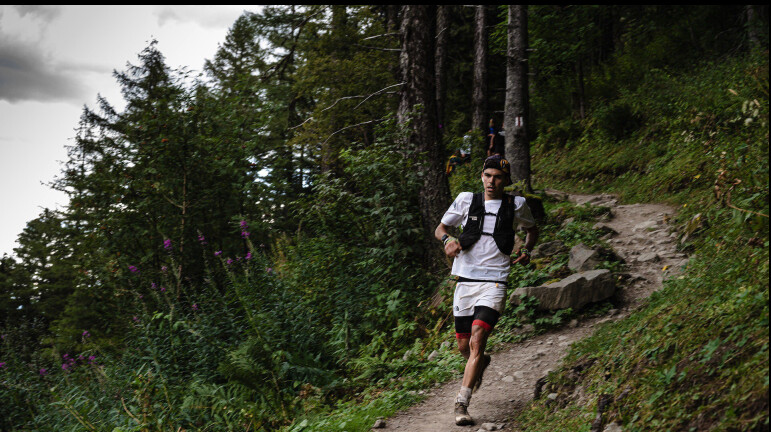
In fact, I recently attended the Arc’teryx Alpine Academy in Chamonix which holds a number of trail running clinics, and over the course of four days it was rare to have a conversation where the UTMB didn’t come up. Other participants in the academy wanted to know if our mountain guides had run it, how many times and whether they liked it (they don’t, considering it a tourist event) and mountain guides were keen to complain about how busy it made their favorite running trail.

But what is the UTMB exactly? Is it the ultimate goal for all trail runners? Why is it so hard? Here, we answer all of your questions about this hellacious footsport event.
What is the UTMB race?
UTMB stands for Ultra-Trail du Mont Blanc and is considered one of the world's premier trail ultra marathons. This demanding annual event follows the route of the Tour du Mont Blanc, a classic long distance hiking trail which circles the Mont Blanc Massif over 106 miles and passes through France, Switzerland and Italy. The UTMB begins and ends in Chamonix and is regarded as one of the most difficult races in the world.
The race takes place on the last weekend of August or first weekend of September and is today the ultimate in a series of events that take place around the world. Runners from all over the world aspire to compete in the UTMB. In the first year of the race, there were 700 participants, but these days, participation is capped at around 2,300 runners and other events have been created to allow for more participation.
The maximum cutoff for the race is 46.5 hours. In 2022, Kilian Jornet became the first to complete the UTMB in less than 20 hours (check out his race data to find out how he managed it) but most mere mortals can expect to have to run for two days and two nights to complete the race. Better bring some running gels then!
How does the UTMB race work?
Due to the event’s extreme popularity, you need to qualify to run the UTMB. That involves accumulating points through qualifying trail races over a two-year period. Qualifying races take place all over the world, from elsewhere in the Alps to Snowdonia, California, Mexico, Hong Kong and Australia. So if you’re serious about participating, you’ll have lots of time to train.
For each event you participate in and complete you’ll receive one running stone, which you can then enter into the lottery to be selected. You can enter the lottery at the UTMB website.
Why is UTMB so hard?
Besides the fact that at over 100 miles, it’s very long, competitors in the UTMB are also looking at 32,940 feet of elevation gain. In comparison, over roughly the same distance you could run the Leadville 100 in Colorado and gain only 11,000 feet (though at much higher altitude) or the West Highland Way in Scotland where you’d gain 10,300 feet.
The highest point of the route is 8,743 feet, which you’ll reach twice, in both Switzerland and France. That’s not extremely high altitude and it’s unlikely you’d experience altitude sickness at that height, but you’ll definitely notice shortness of breath and more challenging conditions, especially if you’re not already used to this altitude.
What you can also expect is more extreme conditions that come with trail running in the Alps. The altitude combined with the season means that the days might be swelteringly hot, while the temperatures at night could drop down around freezing at night.
How much does it cost to enter UTMB?
In 2023, the UTMB itself cost €335 to enter, plus administration fees. Of course, you’ll also have to pay registration fees for your qualifying events too. Your race will also include the cost of traveling to and from Chamonix, and accommodation while you’re there, but on the plus side the aid stations will be on hand to feed you during the race so you can save a little on those pricey Chamonix restaurants.
How many people have died in UTMB?
Sadly, deaths do occur in ultrarunning events and it’s perhaps more remarkable that for 17 years, no fatalities occurred during the UTMB, which not only places runners’ under extreme physical stress but entails a lot of night running. There have now been two deaths of runners in the UTMB, occurring in 2021 and 2022, both as the result of falls.
Do people sleep during UTMB?
Some runners somehow manage to do the UTMB without sleeping at all while others do sleep, but they’re not carrying a bivy sack and grabbing eight hours if that’s what you’re wondering. Sleeping during the UTMB looks like cat napping, and according to a 2015 study of 17 UTMB runners, the average time spent resting was between 12 and 17 minutes in total, and hallucinations were a common complaint, understandably.
Can you walk the UTMB?
Can you walk the UTMB? Well, yeah you could. Since the race is 106 miles and you have 46.5 hours to complete it, you technically could walk at a 2.3 mile per hour pace without any breaks and make the cutoff. Obviously though, you could just walk it at a time when the race isn't going on, save yourself €335 and enjoy far fewer people on the trail.
In all seriousness though, if you don’t already know, ultrarunning is actually hiking, and you’re not going to be running at the same pace you do on the tarmac back home. Even Jornet ran at an adjusted pace of around five miles per hour which isn’t exactly turbo speed (though it is if you maintain that for 20 hours). You’ll most likely walk the uphills and slow down or walk for rest periods, making up time on the downhills. And sorry, there aren’t many flats to speak of.
(07/23/2023) ⚡AMP
Apple Watch helps save Norwegian trail runner's life after a fall
A trail runner in Norway has credited the existence of the Apple Watch for being able to call an ambulance after falling during a run.Following a holiday, investment director Robert Naess decided to go for a trail run, with his time off prompting him to run faster than usual. However, an accident on the run led to a hospital visit, one helped by the Apple Watch.
After starting at 7 A.M. outside of Bergen, Norway, 59-year-old Naess slipped at one bend, despite being a keen runner and having ran the route a number of times.

The skid had Naess fall chest-first into the edge of a wall, before landing on the floor. Verdens Gang reports the impact cracked multiple ribs, and collapsed one of his lungs.
Due to ending up in severe pain and with breathing problems, he could not pull out his iPhone to call an ambulance. However, he was wearing an Apple Watch and was listening to podcasts via AirPods.
Rather than wait for Fall Detection to kick in, he placed the call to the emergency services himself. Approximately 15 minutes later, he was attended to near the road and taken to Haukeland Hospital.
During the 15-minute wait, Naess notes over 100 cars drove past his location. He reasons that he didn't get any assistance because it was hard to see him from the road, and that it was difficult for traffic to stop there, either.
Doctors confirmed the collapsed lung and broken ribs, before treating abrasions on his face and legs.
After recovering from the ordeal, Naess claims the Apple Watch saved his life, since he had no opportunity to move and was in a critical state. He adds that the next time he runs that route, he will be extra careful at that particular bend.
The Apple Watch has repeatedly been praised for saving lives and helping wearers in tough situations. In June, an Ontario man was helped thanks to the Apple Watch Fall Detection feature, while a woman in Cincinnati was saved from a high-risk blood clot.
(07/23/2023) ⚡AMP75-year-old Jeannie Rice blows away the 10000m world record for the 75-79 age group.
She did it again. On Thursday (July 20), the amazing Jeannie Rice, 75, broke the W75 World Record in the 5000 Meter Run. Jeannie Rice won Gold in Greensboro in the W75 5000 meters with a time of 22:41.46. By our calculations that betters the World Record of 22:53.55 set by British icon Angela Copson in Tampere last year. So, Greensboro Nationals may have already yielded a new World Record and the first morning of the competition isn't even over yet.
Today (July 21) she broke the W75 World Record in the 10000 Meter Run here in Greensboro, pending ratification. Jeannie ran 46:53.07. The existing W75 World Record is 50:00.93, set in 2005 by Melitta Czerwenka of Germany. Congratulations, Jeannie!
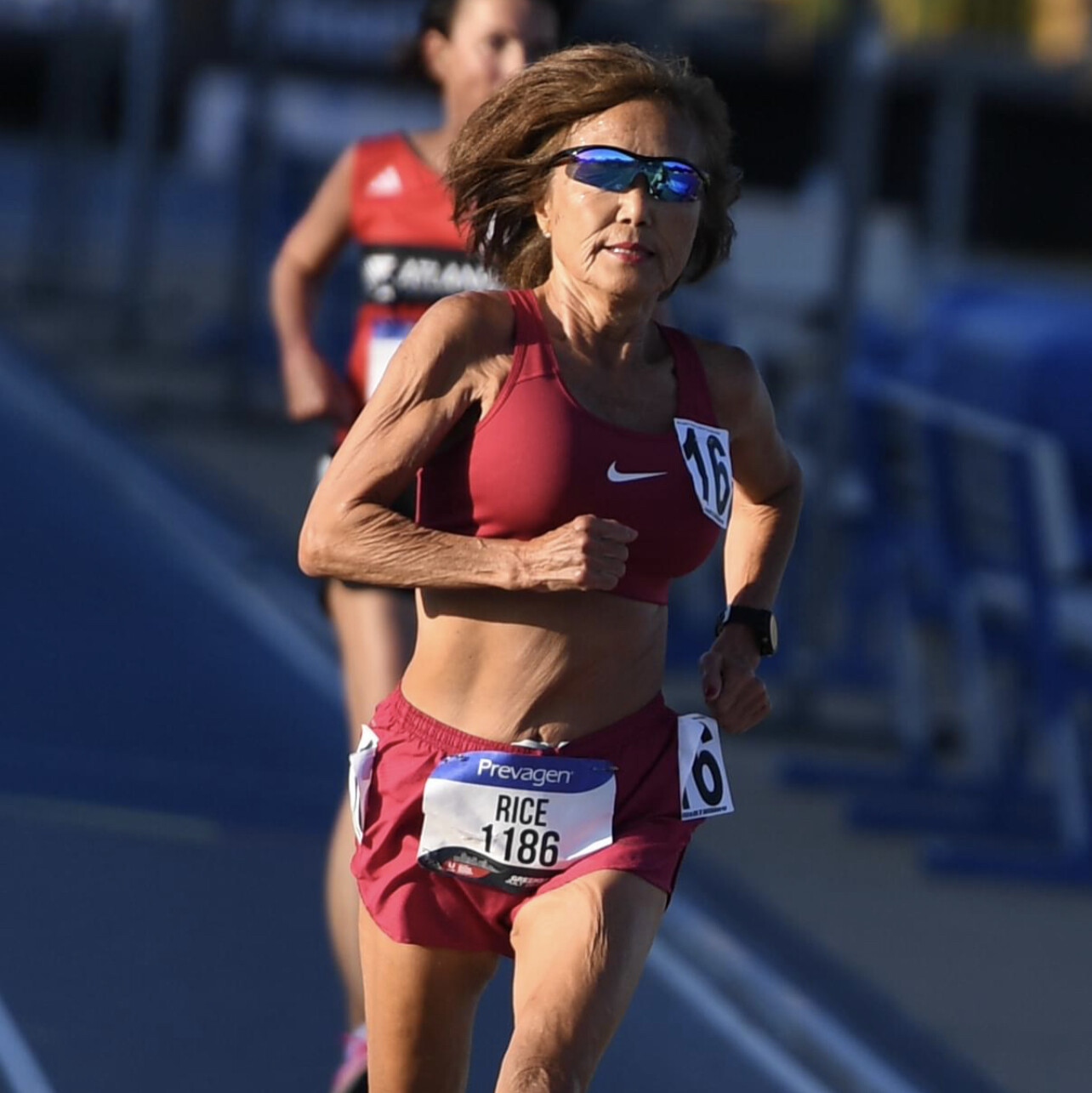
The women elite talent will be the strongest in the event’s history, at the 51st Wharf to Wharf race Sunday morning
The lineup of elite talent will be deep and the storylines numerous when runners of all ages and skill levels line up for the start of the 51st Wharf to Wharf race Sunday morning.
The excitement and anticipation will be palpable. For some, the goal is to complete the annual six-mile race to Capitola. Others will be costumed, poised to update their social media apps with colorful photos, full of smiling faces.
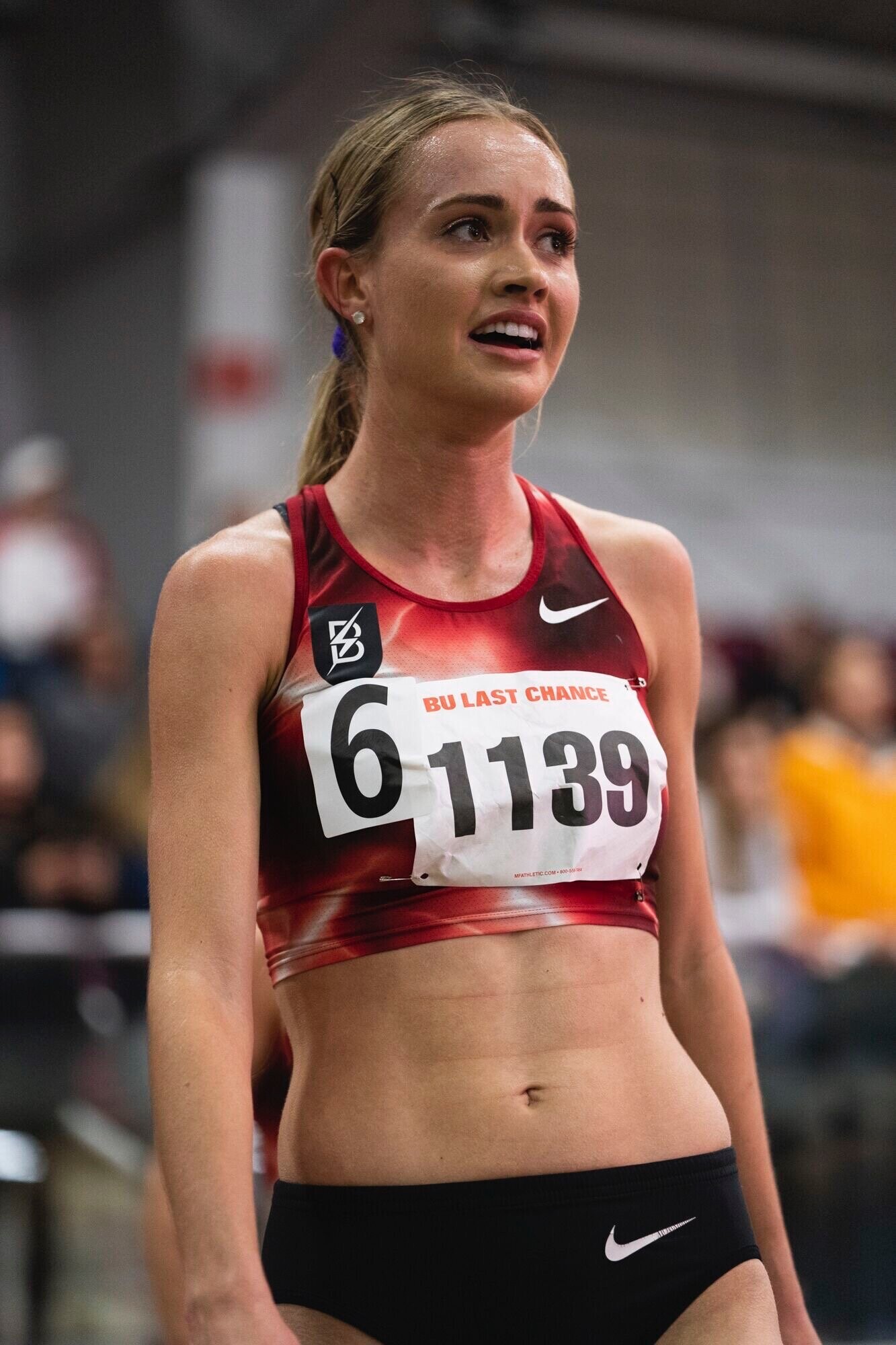
There will also be a more competitive bunch of runners who look to reach the Capitola Wharf in personal-record time, or post a top-100 finish in their gender division to claim elite Wharf to Wharf apparel.
And there will be a select few looking to take first, well ahead of the sea of runners, which has been capped at 15,000.
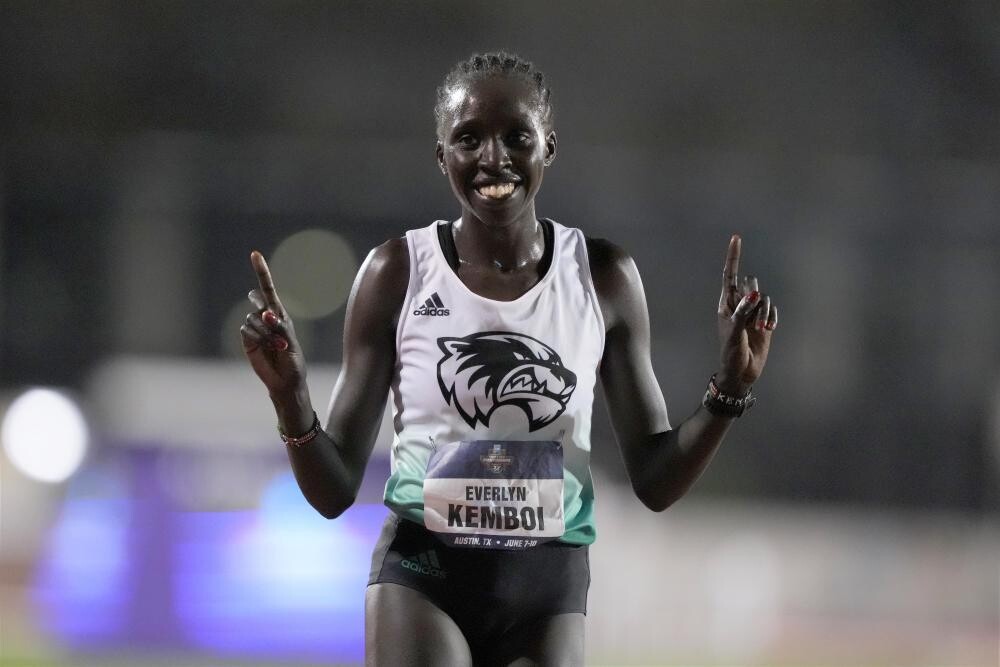
Among them is defending women’s champion Ednah Kurgat of Colorado Springs, who looks to again secure the Mayor’s Cup and $4,000 prize awarded to the winners.
Repeating as champ won’t be easy. “The women’s field is arguably the strongest in the event’s history,” said Dane Gradone, the event’s elite athlete coordinator. “It’s completely (awesome).”
Kurgat’s solid ’23 season includes a win at the USATF Cross Country Championships in January and a sixth-place finish in the 10,000-meter race at the USATF Outdoor Championships earlier this month.
Everlyn Kemboi, the ’23 NCAA champion in the 10,000 and runner-up in the 5,000, should contend for supremacy. Also entered are Kenyan Mary Munanu, last year’s Wharf to Wharf runner-up, Ethiopian Werkuha Getachew, the runner-up at last year’s World Championships in the steeplechase, and fellow Ethiopians Tigist Ketema and Weynshet Ansa, both multiple-time national champions. Kenyan Sarah Naibei is a world-class runner on the roads, and a 52-minute 10 miler. Annamaria Kostarellis is a freshly minted NCAA All-American.
The local contingent is equally impressive. It includes former Santa Cruz High and Oregon State University standout Mari Friedman, the top female local finisher in ’22.
“I’m super excited,” Friedman said. “It’s one of my favorite races. It’s a holiday for me.”
Friedman’s goal? “To race happy and have fun,” she said, noting her best results come when she follows that plan.
Back in the field for the first time since 2014 is Nike runner Vanessa Fraser, a Scotts Valley High and Stanford University alumna. She’s coming off a 12th place finish in the 10,000 at the USATF Outdoor Championships.
Fraser, who lives in San Francisco, is in the process of transitioning to more road races. She returns to the one that got it all started for her.
“I’m excited to mix it up and see how I can finish and be competitive,” said Fraser, who has qualified for the 2024 U.S. Olympic Team Trials on Feb. 3. “Top 10, that’s a good goal. Anything higher would be great.”
Ashlyn Boothby, an incoming senior who has broken most of Fraser’s records at Scotts Valley, will compete in the race for the first time. She’ has been at camp with the Falcons in Truckee, doing altitude training and bonding with teammates.
“This is super special to be in the same race as Vanessa Fraser,” Boothby said. “She’s my idol. I don’t know if I’ll be able to keep up with her.”
The men’s field is primed to produce another exhilarating finish.
Salinas’ Diego Estrada, an Alisal High alum and former Olympian in the 10,000, finished second in the ’22 Wharf to Wharf and expects himself to be in title contention again after upping his training. He finished in 27 minutes, 18 seconds last year, two seconds behind champion Emmanuel Bor.
“I’d like to break 27 (minutes),” said Estrada, who is running 90 miles a week. “If I lose and break 27, I’ll be really happy. And if I win and don’t break 27, I’ll be really happy. But there’s so much talent in our area, I don’t know what will happed til we get to the downhill.”
Estrada will be tracked closely by a fair share of challengers and hardened road running veterans.
Fellow Olympian Ben Blankenship, who currently lives and trains in Eugene, Oregon, is also in the field. So is established marathoner Colin Bennie of San Francisco, the top American at the Boston Marathon in 2021. He finished ninth in Capitola last year.
This year’s International contenders include a trio of experienced Kenyans, James Ngandu, Josphat Kipchirchir, and Shadrack Keter, who have all run nearly an hour in the half marathon and racked up numerous racing honors.
Aptos’ Jack Rose is back after finishing as the top local male finisher in ’22, but a handful of young collegians will be gunning to unseat him. Among them are former Scotts Valley star Jeremy Kain, who runs for Duke University; Julian Vargas, a St. Francis alum who runs for Xavier University; Aptos talent Trent Nosky, a recruited walk-on for Colorado State University’s cross country and track programs; and Patrick Goodrich, a former Scotts Valley standout who competes for Cal Poly-SLO’s club team.
Rose, winner of the Ventura Marathon in February in a PR time of 2:21:39, said the quality of his workouts have improved since he finished as top local last year. He excited to hear the bands stationed along the route and hear spectators shout support as he passes them.
Kain is hoping to unseat Rose as top local. He’s increased his miles from 40 a week to 65-70. “I do think I’m in pretty good shape right now,” he said.
Experience is key, and Kain is competing in the race for the first time. “I’m kinda ashamed of myself that it’s my first year,” he said. “It never worked in my training block, but, this year, getting out there and giving it my all is going to be exciting.”
(07/22/2023) ⚡AMPby Jim Seimas
Wharf to Wharf
Each year, on the fourth Sunday in July, thousands of runners from across America and around the globe return to Santa Cruz, California for the annual six-mile race to Capitola-by-the-Sea. First run in 1973 by a handful of locals, the Wharf to Wharf Race today enjoys a gourmet reputation in running circles worldwide. Its scenic, seaside setting, perfect weather, and...
more...Try an effort-based workout to switch things up
Runners love numbers. We track our heart rates, our weekly mileage, and, of course, our pace during workouts. Knowing exactly how fast you’re going during a run or workout has a lot of benefits, but it’s easy to get hung up on the numbers and stop listening to our bodies.
It can also create a stressful experience when we’re not hitting the pace goal we set. If you’re in a slump or just trying to get back in touch with your body, try this run-by-feel interval session, and have a little more fun with your workout.
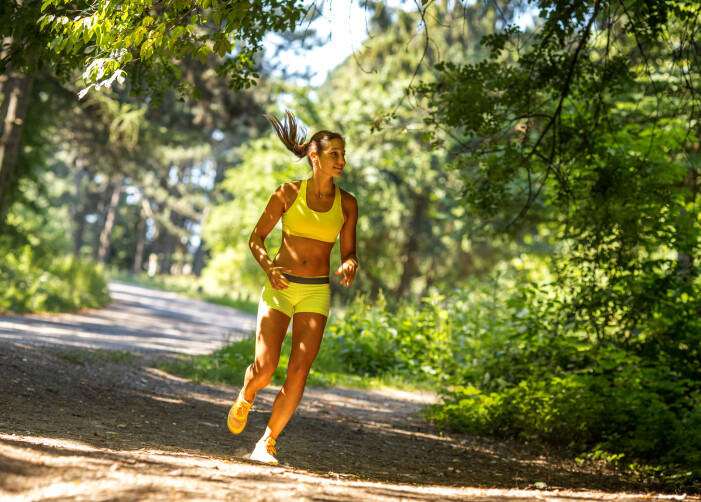
Technically, you can make almost any workout a “run by feel” workout if you just ditch the GPS, but this one is a great gateway into tech-free running, because the intervals are relatively short. Many runners find it difficult to stay focused and run consistently if they’re not used to running by feel , so the shorter intervals mean you don’t have to focus as long.
Without a watch to gauge how fast you should be going, you’re going to use some effort-based cues to know if you’re running the correct pace. Ideally, you should run each repeat so that the last 20-30 seconds feel tough–like you really want to stop or slow down, and you have to dig in mentally to maintain your pace. This is difficult to do out of the gate, so use the first set of intervals to try to dial into your pace, and then stick to that for the rest of the workout.

The workout
Warmup: 15-20 minutes of easy jogging
Workout: 2-4 sets of 3 minutes, 1:30 rest; 2 minutes, 1 minute rest; 1 minute, 2 minutes rest
Cooldown: 10-15 minutes’ easy jog, followed by light stretching.
(07/22/2023) ⚡AMPby Brittany Hambleton
PUMA Is Using Nitrogen Gas to Improve Your Stride
The ForeverRUN Shoe with NITRO technology could help you develop a healthier running form
One thing is true when it comes to picking an everyday running shoe: it’s an incredibly personal choice. With so many options out there, upgrading your footwear can be a daunting task. So let’s simplify things. If you want lightweight, responsive, and durable shoes to support your daily mileage goals, PUMA has the perfect match. Here’s why the ForeverRUN with NITRO™ technology is your next everyday running shoe.
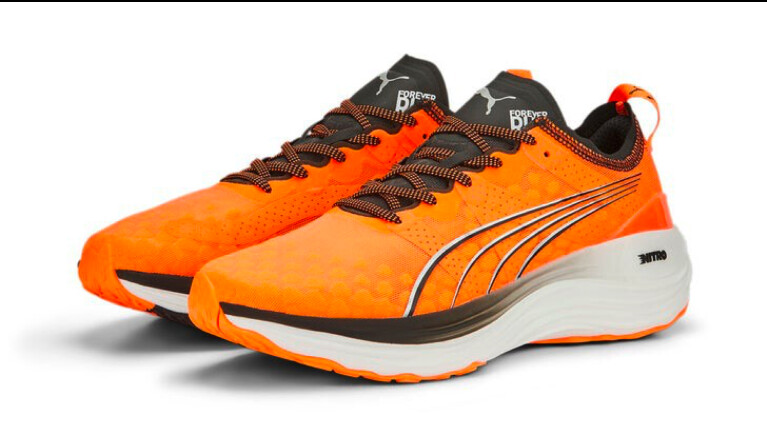
Regardless of your mileage or pace, having the right technology underfoot is key to maximizing the time you spend running. Every running shoe in the PUMA performance lineup is equipped with innovative NITROFOAM™ technology, which is designed to deliver responsiveness, durability, and comfort.
PUMA created its NITROFOAM™ technology through an innovative process that infuses the shoe’s foam with nitrogen gas. This technology allows PUMA to provide the support all runners require without tacking on additional weight.
For many runners, the ForeverRUN NITRO™ can be a one-shoe quiver. From pre-work jogs to weekend runs logging double-digit miles, the ForeverRUN NITRO™ hits the mark as a comfortable everyday running shoe. Featuring a 10-millimeter drop specifically designed to help runners embrace a healthier stride, ForeverRUN NITRO™ is a supportive ride for all.
The shoe’s stability is fueled by NITROFOAM™ technology, which provides two different foam densities in the midsole. Pair that with the asymmetrical heel counter—built to help keep the foot in place and aligned with each step—for solid support underfoot. The ForeverRUN also caters to frequent runners who need a little extra cushion or want to keep their foot a bit more neutral. To help maintain stability throughout the gait cycle, PUMA used a wider medial rubber segment on the outsole to keep the foot centered.
Fans of the ForeverRUN shoes call them “a dream to run in” and a “fave everyday trainer.” One runner, who suffers from back pain, loved that the cushioning allowed them to run comfortably enough to increase their weekly mileage—and with noticeably less pain. If you’re looking for a shoe engineered for comfort that will help you develop a more stable stride, look no further than the ForeverRUN from PUMA. Because the best runs are fueled by NITRO™.
PUMA is one of the world’s leading sports brands, designing, developing, selling and marketing footwear, apparel and accessories. For 75 years, PUMA has relentlessly pushed sport and culture forward by creating fast products for the world’s fastest athletes. PUMA offers performance and sport-inspired lifestyle products in categories such as Football, Running and Training, Basketball, Golf, and Motorsports. It collaborates with renowned designers and brands to bring sport influences into street culture and fashion. The PUMA Group owns the brands PUMA, Cobra Golf and stichd. The company distributes its products in more than 120 countries, employs about 20,000 people worldwide, and is headquartered in Herzogenaurach/Germany.
(07/22/2023) ⚡AMPby Outside Online
One Runner Followed His Watch’s AI Training Plans for a Month. Here’s What Happened.
This avid runner wore his GPS watch 24 hours a day for one month, performing every single workout it suggested
A few months ago, I noticed an odd thing about my Garmin Enduro 2 watch. At the start of my Saturday run, instead of immediately searching for satellites, it displayed a new screen, an AI-generated suggested workout customized just for me. I was planning to do a long run, but my watch said I should do intervals instead.

Initially, I scoffed. How could this wrist device know what my body needs, better than me? The longer I sat with it, the more curious I got.
In the last few years, running watches have made substantial leaps forward. They are now able to collect and analyze a wealth of information, stuff like heart rate variability, blood oxygen levels, respiration rates, sleep cycles, stress, acclimatization, stride mechanics, and other metrics. Even midpack models offer a robust feature set that would’ve been hard to imagine a decade ago. Most major watch brands like Suunto, Coros, and Polar now offer a suite of recovery recommendations, load tracking, and basic workout suggestions.
Could my Garmin watch actually know something I don’t about my training progress? Could it, heaven forbid, replace a coach? I have had a handful of coaches over my running career, usually whenever I had a clear race or goal in mind, so needless to say, I was skeptical. Currently I have no coach, and no specific race I’m preparing for, so I decided to be a guinea pig, making a resolution to wear my Garmin for a full month, 24 hours a day, and do everything it recommended.
In 2020, Garmin bought Firstbeat Analytics, a Finnish company, and started to release suggested workouts a few months later, crunching numbers on your recovery, sleep, and body strain to recommend what you should do on any given day. The goal? To use machine learning to help improve users’ VO2 max and lactate thresholds, or in other words, your short- and long-term fitness capacity.
It’s easy to be skeptical—even this publication is dubious of Garmin’s recovery algorithm—but the more I asked around, the more I realized how few people had actually given these suggested workouts, or even the Garmin Coach feature, a fair shot.
So who, exactly, are these suggested workouts for? Joe Heikes, Forerunner Product Manager, says that Garmin developed these recommendations for “the middle of running’s society.” The top quarter of the sport—highly competitive, elite, pro runners—likely have a coach already, while most new runners aren’t ready for a structured training plan as they ease into the sport.
“This feature is for committed runners who need a little help,” says Heikes. “They don’t need a ton of hand-holding, but do want a plan and to see progress.”
Herman Bonner, who works for Firstbeat Analytics, says the biggest challenge is trust. “Anytime you’re giving advice, you first have to prove you are trustworthy. This takes a lot of time and effort.” But Booner is confident in the algorithm. “As an analytics company, we sifted through all kinds of data, applied accepted training philosophies, and tested for years, but our customers don’t see that,” he says. “They have to use the feature to see the benefits, but it’s hard to commit before you trust it. So there is a loop.”
Heikes says they first identified the need almost ten years ago. Garmin was getting feedback from users who wanted guidance on workouts, something to push them in the right direction. “I was skeptical when I started testing it; so was Herman,” Heikes says. “The watch will never be perfect. It’s built on a specific coaching philosophy that’s not right for every runner, but it’s far better than nothing.”
Because suggested workouts are informed by the aggregate of all the data your watch is able to collect, I committed to wearing it nonstop. This isn’t normal for me—I typically wear watches only for runs—but I knew it would be more accurate (and presumably beneficial) if I was fully committed.
From there, Garmin took over. I didn’t have to log my workouts or figure out my baseline fitness, like you would with a new coach. All of this hums along in the background and only gets more accurate the more you use the watch—the strange beauty of AI tracking everything you do.
As I learned, there are seven different types of recommended workouts: a mix of recovery runs, base endurance, high-intensity aerobic workouts, and anaerobic training efforts. I found this to be diverse enough to stay interested for a month, but I wonder if it would get repetitive in the long run. I would later learn it’s designed as a step in the process of establishing a running routine, not necessarily something you would rely on for years.
The workouts scale as you get more fit, in terms of duration and intensity. My ramp-up started slow, but as the weeks flew by, I did notice an acceleration, especially in the duration of my harder workouts. My biggest pain points were in the first week when the watch served up some questionable recommendations. For example, on my second day, Garmin suggested a tempo workout, but I was feeling terrible after sleeping poorly, so I did an easy run instead.
Garmin acknowledges its own imperfection on their website: “There will be days when the best option is for you to rest for your next challenge,” implying that you can skip workouts as needed. Blips like this are part of the process—the watch is trying to learn your long-term patterns, and errors are much more likely early on.
On the plus side, right away I noticed how well the algorithm incorporates data from other devices, like my Garmin Edge bike computer. This is critical, as someone who keeps a relatively even balance between running and riding. It also incorporates big efforts in the gym, telling me to back off my next day of running after a hard kettlebell workout. I liked this multi-sport integration, which applies to many other weekend dabblers like me.
Overall, I found the AI behind the watch to be mostly accurate, suggesting base efforts in line with my expectations, threshold workouts consistent with past workouts, and anaerobic sprint workouts to be hard, as they should be. While it took time to build trust, I feel confident that the logic is sound, although not for everyone. If you already have specific workouts you like that focus on key running metrics like VO2 max or lactate threshold, you’re probably not the intended user of the feature anyway.
While I enjoyed my month using the feature, I’ve already returned to my old habits of training by feel, an approach that offers more flexibility. But maybe this experiment says more about my personal preferences than it does about the watch and its algorithms.
Heikes says the suggested workouts feature was not developed to replace coaching, though he thinks they could certainly complement each other. “There is a lot of data for a coach to look at for high-level advice, while letting the watch operate as an AI training plan for day-to-day workouts,” he says.
Corrine Malcolm, who has been coaching since 2016 and founder of Foothills Endurance, sees an opportunity for coaches to work in tandem with AI coaching platforms.
“The biggest challenge of coaching is how to scale. If you’re doing it right, you can only support a few dozen people at a time,” says Malcolm, who believes a hybrid model could provide value to a runner who doesn’t want to pay a large monthly fee.
“Think of it like a low-cost, low-touch model. A weekly office hours to ask questions to a human, while mostly relying on the AI to give workouts.” Leveraging the algorithms ability to collect and analyze data, Malcolm says a hybrid model could help her coaching business scale while giving runners a new style of coaching to consider, and from which to benefit. “I could probably coach a few hundred people this way, which is a win-win for everybody.”
After my personal experiment, I can see the value of the data and suggested workouts to inform and simplify coaching. And for someone just a couple years into the sport without a coach, I’m confident that the suggested workouts will help improve fitness and variation, provided you stay consistent and (gasp!) trust the algorithm.
(07/22/2023) ⚡AMPby Outside Online
Feeling out of shape? Maybe you should run up and down a mountain three times.
It’s a perfectly normal question to ask someone, I just wasn’t the right person to ask. I had been chugging up the trail at about mile 22 or so of the race, trying to push myself but also pace myself, and in my own head because I’d only seen three or four people in the last 45 minutes or so. The guy was hiking downhill, getting out before the Saturday heat really warmed things up, and I had made a little room as I passed him hiking the other direction, trying to get up Tiger Mountain for the last time. We’d said hello, and then he asked,
“How far to the Section Line Trail?”
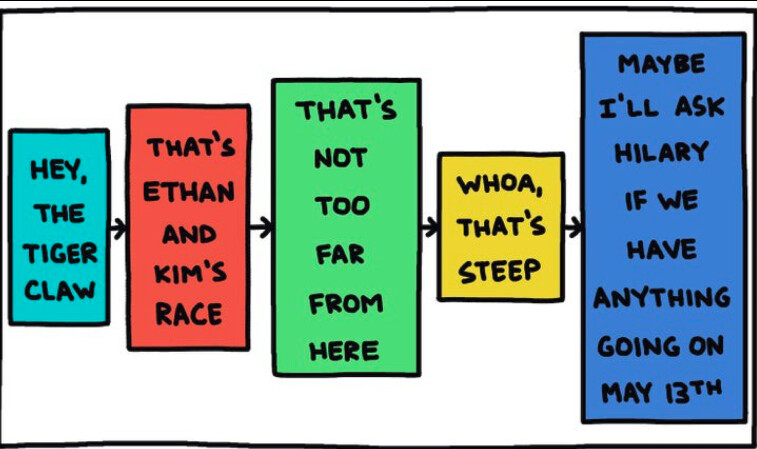
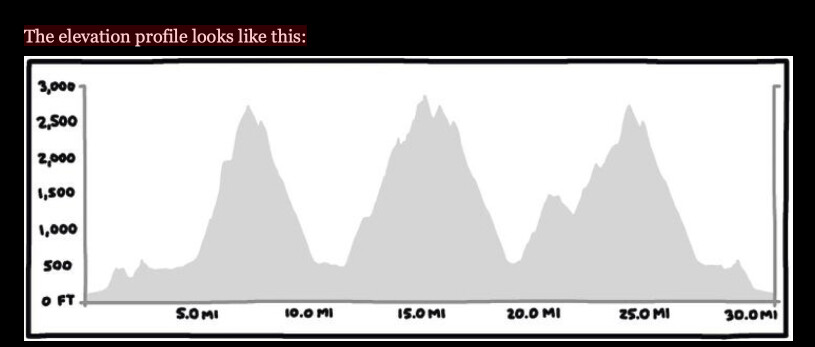
I rounded the switchback and confidently said, “Oh, I don’t know,” and he seemed a little surprised that I didn’t know, pausing for a second with a somewhat quizzical look on his face. So I added, “This is my first time here,” hoping that would help him understand. It was true, kind of. If I’d felt like I had more time to stop and chat, I might have added a few more bits of information:
> I am participating in an ultramarathon trail race called the Tiger Claw 50K > I have never set foot on this mountain before today, May 13th, 2023 > This is my third trip to the summit of West Tiger #2, and finally, > Hey man, I’m just following these pink flags till I see people with pitchers of electrolyte drink and trays of Oreos standing under an EZ-up at the top. I’m not paying attention to the trail names, the distances, or the intersections, I’m barely looking at the scenery. My goals today are:
a) Survive this race despite the 88-degree temperature and 70 percent humidity and b) Produce urine that isn’t the color of a No Passing Zone sign by midnight tonight
I hope that man found his way and is not still out there looking for the Section Line Trail.
Another question someone asked me, the day before the Tiger Claw: “Why did you pick that race? Isn’t it just kind of a local thing?”
I got really out of shape in 2022—spinal disc injury, new baby, sleep deprivation from helping take care of a new baby, and another back/hip injury. I was starting to wonder if at 43, I was hitting some sort of downhill slope in life. I turned 44 this winter, and was determined. Not to return to any sort of athletic glory, no, but to avoid going to the emergency room again after herniating a disc while picking up a dog because I sit on my ass 40 hours a week, and inside my regular-sized middle-aged man body is a smaller man who loves to eat emotionally and is also super fucking lazy.
So I started looking on UltraSignup for 2023 races near western Montana, and thought
Three summits of West Tiger #2 (elevation 2,757 feet), returning to the High Point Trailhead (elevation 527) each time. For a total of “nearly 9,000 feet of elevation gain,” per the Tiger Claw website. If you are looking for a fast, flat race to help you get your PR for the 50K distance, the Tiger Claw is not it.
This, I was afraid, would call for drastic measures: I was going to have to learn to do something I have always been terrible at doing: drink a responsible amount of fluids. This was almost too much to ask, I thought. Maybe I should bail. DNS: Did Not Start. Reason: Not good at drinking water.
The White Loop was the steepest. Ethan’s final email to participants the previous day had said the Pink Loop would stay in the shade into the afternoon. I had decided to go White (steepest, least fun) first, Yellow (longest, most meandering) second, and Pink (afternoon shade). I chugged down a 17-ounce water bottle in the final minutes before the start and stuffed it in my vest.
The first 4.6 miles wound around in the forest with a couple ups and downs, gradually climbing a few hundred feet to get us to the lower aid station, where we’d split up into our respective loops and go on our way. I had put a small drop bag at the lower aid station, as we’d all return here after each of our three ascents and descents of West Tiger 2. I packed my drop mag pretty minimally because after I finished my final lap, I planned to stuff whatever was left of it into my vest for the final three miles to the finish line, so I didn’t have to drive back to get it after the race.
I filled one water bottle at the aid station and ran on, splitting off to do the White Loop, 2.8 miles, 2,800 feet of climbing to the upper aid station/turnaround. I had no ambitions to do a fast first lap, but ran some of the less-steep sections and hiked the rest. Less than a mile into the White Loop, I was alone in the forest, so I pulled over to pee. Just as I was finishing, Krissy Moehl, who is a very famous ultrarunner, hiked past a few feet away, which is sort of an awkward moment to introduce yourself, but I did it anyway, because we have a mutual friend, and then we ended up hiking together for the rest of the ascent. This is not to say that I am as fast as a person who won the UTMB in 2003 and 2009; more like Krissy was not in a hurry on the race course.
With a couple other guys, we jogged a few short sections of the trail, but mostly hiked at a good clip to the upper aid station, arriving at about 1 hour and 45 minutes. I got my water bottles refilled and started heading down. The top of West Tiger 2 had been logged a few years back, and the good news was we could see Mt. Rainier, Mt. Baker, the buildings of downtown Seattle, and the Puget Sound. The bad news was there was no shade at the top, and it was already sunny and warm at 8:45 a.m.
The 2.2-mile route back down to the lower aid station, which we’d all do a total of three times during the race, was steep and technical for about a half-mile, and then just steep. I made myself drink two 17-ounce bottles of fluid as I ran downhill, and made a mental note to do this each time I ran the descent. I had drunk two bottles on the way up, and my shirt was completely drenched in sweat, front and back, by the time we hit the summit.
At the lower aid station, I grabbed my drop bag, stuffed a couple packages of Clif Bloks into my sweat-soaked vest, filled up three water bottles, and started jogging back up the trail, looking for the turnoff for the Yellow Loop—5.5 miles, 3,000 feet of elevation gain.
The Tiger Claw is sort of a multiple-loop race, in that you run multiple loops, and pass through the same checkpoint (the lower aid station) at the end of each loop—but that checkpoint is still three miles from where you parked your car at the start/finish, so maybe it’s less tempting. (you could call someone and ask them to pick you up at the aid station, though, since it’s about 150 feet from a parking lot that’s only a mile from I-90)
But I was definitely not thinking, “Man, I hate loops, I can’t believe I have to come back to this aid station two more times”—I was thinking, “Jesus it’s hot already.”
I was alone for most of the loop, running when possible, hiking the steeper parts, and chugging water and Skratch electrolyte drink. About two-thirds of the way up, Krissy Moehl passed me, and we chatted for a few minutes. Through the forest, I had been forcing myself to chug water—three 17-ounce bottles by the time I got to the top of the climb. Mileage-wise, I was past the halfway mark by my second summit of West Tiger 2, and had drunk 7 bottles of liquid, or about 119 ounces.
With only the Pink Loop to go, I only had 2,700 feet of elevation gain to climb. I could feel a slight dehydration headache forming, but maybe if I kept forcing water down I’d be able to keep it at bay. At the Upper Aid Station, I refilled two bottles and drank both of them as I navigated the downhill.
If you look a map of the course with all three loops on a map, you could see why they called it the Tiger Claw:
A solid mile and a half from the upper aid station, I started to hear a dog howling. Or some animal. I kept plugging away, slowly passing a couple other runners, every once in a while scanning the trees above my head for the top of the ridge, the end of my final climb. Eventually, I ran out of trees, hitting the north edge where the trees had been clear cut. I went from hints of sun to full-blast afternoon white heat as I chugged up the trail, finally seeing the howling dog, which turned out to not be a dog at all, just a really psyched volunteer wooing so loudly and so often that I thought there was no chance he’d have his voice tomorrow. I thanked him and walked to the aid station, got my water bottles refilled, grabbed a handful of potato chips and a couple Oreos, and headed down.
On each of my three descents of the trails to the lower aid station, I was elated to not be climbing. I was also reminded that there was, also today, a race called the Tiger Claw Double, a 50-mile version of this same race I was doing, but with THREE EXTRA LAPS to the summit of West Tiger 2. As I ran downhill, I’d pass by a 50-mile racer heading uphill, and I’d say something like “Good job,” but what I was thinking was, “Look, I am a person of questionable judgment and intelligence, who is spending their Saturday doing a steep-ass 50K race with almost 9,000 feet of climbing in 88-degree heat and 70 percent humidity, but you, Runner, are a FUCKING MANIAC. I salute you. Also I’m really glad I didn’t sign up for that race instead.”
At this point, midway through my final descent, the hot spots on the instep sides of my big toes had turned into full-on blisters, and my toenails were sick of the cumulative effects of being pushed backwards by my shoes every one of the thousands of downhill steps so far.
My strides had shortened, and I wasn’t grunting or wincing with pain every step, but I definitely wasn’t smiling. I glanced down at my watch to check my pace, just out of curiosity: 12-minute miles. I was pretty ready to be done.
I hit the lower aid station, grabbed my drop bag, shoved it into the back pocket of my vest, and started jogging down the road in full sun. Every piece of fabric on my body was soaked through with sweat, including the inside of my vest and the outsides of my shoes.
The route meandered through a short section of forest, and the final three-quarters of a mile was a wide, paved, shaded multi-use path. I started running faster, because on flat ground, my blisters didn’t hurt, and I was ready to get it over with. And I think I remembered them saying something about pizza at the finish line.
I jogged under the finish arch, gave Ethan a very soggy, gross hug, took my finisher medal, and felt the relief of No More Exercising Today slowly roll over me. Mark Griffith, who had been out on the course taking photos all day and working as hard as the racers, directed me to the pizza and cold beverages, and I asked him if he was able to take care of himself at all in the heat. He said he eventually was able to rehydrate at the upper aid station, but at one point, the sweat was just rolling down his head into his eyes. “My eyebrows stopped working,” he said. And I thought, Same, man. I had drunk approximately 225 ounces of water and Skratch electrolyte drink in 7 hours and 39 minutes, and I still felt like a piece of beef jerky that had been left out in the sun for a week.
It had been hot, for sure, but I finished, and as I sat down with a can of sparkling water, it seemed like I had a good chance of surviving the day. I thought a little bit about my friend’s question as to how I decided to sign up for the Tiger Claw, since it was kind of a local race on a local mountain. I am not sure if I could draw a flow chart of how I, and maybe other runners too, decide to run whichever races we run. I don’t know, it sounded fun? It sounded not fun? I heard good things about it? It was close to where I live, or close to some place I wanted to travel to, or it was flat, or it was steep, or whatever.
As far as I know, ultramarathon races basically work like this:
I had assumed that Ethan and Kim could put on a pretty good race because they do other things well, and I am not in the business of reviewing races, but I have to say, I was right. It was fun. Although parts of it were not fun.
Fortunately, there’s plenty of steep terrain very close to where I live. Unfortunately, lots of that steep terrain was still covered in snow and ice until the first week of April. But, I have microspikes, and enough of it melted out in time for me to get in some steep uphills. I did laps on Mt. Sentinel, sort of our local Tiger Mountain, with a ~2,000-foot climb via several different trails. At one point, I wondered: “Am I spending too much time on really steep terrain? What if the course is more gradual, or rolling?”
(Answer below)
I honestly hadn’t given it any thought until he asked. I had just focused on the big numbers: 31 miles, 8,000-something feet of elevation gain. But now I was thinking about it. And it did sound kind of nice to run the loops in whatever order they would be least crowded. But how would I know?
(07/22/2023) ⚡AMPby Outside Online
Do Women Need Gender-Specific Running Shoes?
Hint: It’s not a yes or no answer—it’s about having options
I’ve been wearing running shoes for 30-plus years, and still, when I lace up a new pair that fits me just right, it makes me want to take them for a spin right then and there—but finding perfectly fitting running shoes can be a challenge, even for someone like me who has access to innumerable pairs as a running shoe reviewer.
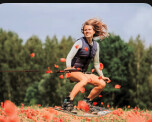
Because I test shoes, people always ask me, “What’s the best running shoe?” And while my male counterpart, Cory Smith, and I vet, test, and write up all the best shoes on the market each season for the Outside Gear Guides and other roundups throughout the year, I always respond with some version of: “There are a lot of great ones out there, but what’s most important is that those great shoes fit your specific feet.”
Much of the running experience depends on comfort, and so much about comfort depends on how well a running shoe fits the individual person’s foot. Yes, other factors differentiate running shoes from each other—midsole compounds, traction, upper materials, lacing systems—and all of them matter in creating a comfortable and effective ride for individual runners and their technique and preferences. But none of it matters if the shoe rubs, bites, or binds your feet uncomfortably. Fit should never be overlooked, and it is linked to the shape of your foot, which is tied to your gender.
So how big a role does gender play in finding your ideal running shoe? Most brands offer men’s and women’s sizes and colorways in each of their shoe models, with both size ranges based on the same last, or, the shape/mold around which the interior of the shoe is built. Some shoes come in men’s sizes only (usually shoes from smaller brands and “niche” models, like weatherized mountain running shoes). Women buy those shoes, but the fit isn’t always right. Many of them have a higher-cut heel cup than women’s models, which can put pressure on a woman’s Achilles. And most often, a men’s shoe fits wider than a women’s.
A handful of brands (Altra, Asics, Hoka, New Balance, Saucony) offer some of their shoe models in widths for both men and women, which offer a broader range of choices. But a select few brands (Altra, Adidas, Hoka, Under Armour) offer all or some of their models in truly gender-specific fits—shoes molded off of gender-specific feet to create gender-specific lasts. And a few brands have come to market with models meant just for women: Lululemon’s Blissfeel and Blissfeel Trail, Hilma’s road-to-trail shoe, UnderArmour’s Flow Synchronicity road shoe, and Puma’s Run XX Nitro road shoe are some examples.
Brian Beckstead, co-founder of shoe company Altra—a brand that’s offered men’s and women’s-specific fits in all of their models since the brand launched in 2011—explains how the differences between men’s and women’s-specific lasts are found around three main places in the foot. One: Women’s lasts are generally narrower in the heel than men’s or gender-neutral lasts, because women tend to have narrower heels. Two: Women’s lasts generally have more support around the midfoot, or arch, because ladies generally have higher arches than men. And three: Because men and women tend to have different “Q-angles”—the angle drawn between the hip, the patella, and the upper shin, which differs genetically for the purpose of child-bearing, according to the National Library of Medicine—most women’s lasts are built up slightly around the interior of the heel or calcaneus bone, with more room on the lateral side of that bone.
But gendered fits aren’t always black and white. “I know women who like to buy the men’s fit [of Altras] and I know men who like to buy the women’s shoes just because they have a really narrow heel,” says Beckstead. “It’s a matter of having options. It’s just a matter of having more variations for a dialed-in fit.”
Regardless of brand preferences and gender designations, some women have wide feet and flat or fallen arches, and some men have narrow feet and high arches. Not all women have more pronounced Q-angles than men. (Personally, I have narrow feet with fallen arches, and appreciate a little space in the toe box, but a secure midfoot wrap.)
And what if you don’t identify as either male or female? That’s a question the running shoe development team at Salomon has been asking lately, as they’ve relaunched a handful of their trail running shoe models as “unisex,” with what aims to be inclusive color palettes (though the fit is based off a men’s last).
It’s a trend we may see continuing throughout the footwear space.
What really matters, regardless of your gender or how you identify, is that you find a running shoe that fits your particular foot. Ill-fitting shoes can create blisters and discomfort, which can make you alter your gait and lead to injury. Great fitting shoes, on the other hand, can excite you to head out for a run and make that experience as enjoyable as possible.
So head to a local running shop with good reviews where you can get to know your feet with some professional help and assess the options available to you. The perfect shoe for you is out there.
(07/22/2023) ⚡AMPby Outside Online
Faith Kipyegon obliterates women’s mile world record by almost five seconds
On Friday at the Monaco Diamond League, Kenya’s Faith Kipyegon ran the fastest women’s mile in history, breaking her third distance world record in the last two months. The 29-year-old mom clocked a jaw-dropping 4:07.64, taking over four seconds off the previous mile record.
In her first mile race since 2016, Kipyegon led the race from start to finish, going through the first 800 in 2:04 and closing in a negative split 2:03. Kipyegon broke the former mile world record of 4:12.33 set by Sifan Hassan of the Netherlands at the same meet in 2019.

It has been a sensational season for the women’s Olympic and world champion in the 1,500m, who previously lowered the 1,500m and 5,000m world records in June over a seven-day span. There was never a doubt heading into the meet that Kipyegon would break the record, but the question was by how much–and she made a statement, becoming the first woman to run a mile under 4:10.
The mile world record was the only record broken in the race, Kipyegon dragging six athletes to their own respective national records in the mile. Ireland’s Ciara MaGeean finished behind Kipyegon in an Irish national record of 4:14.58, and Ethiopia’s Freweyni Hailu, who went out with Kipyegon through the first two laps, finished third in a season’s best 4:14.79. Olympic 1,500m silver medallist Laura Muir finished fourth in a British national mile record of 4:15.24.

by Running Magazine
Sydney Marathon has announced the fastest and most decorated elite field for the 2023 event
The Sydney Marathon presented by ASICS has today announced the fastest and most decorated elite field for the 2023 Sydney Marathon, to be run on Sunday, September 17. The field’s experience in World Championship and World Marathon Majors racing will make it the fastest marathon pack assembled in Australian history, with homegrown and international talent battling it out on the event’s new marathon course.
Minister for Jobs and Tourism John Graham said the Sydney Marathon was a world-class event with one of the most spectacular marathon courses anywhere in the world.
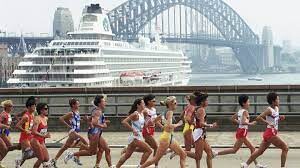
“Sydney leads the pack when it comes to venues to host a marathon. No city on earth has a better combination of natural beauty, a famous love of sport and iconic landmarks and it is an honour to host this elite field of international runners who will test themselves here in Sydney.
“The NSW Government is proud to support the push for Sydney Marathon to become a World Marathon Major. It is a great example of a high-participation community event that brings global attention and tourism benefits for the city and NSW.”
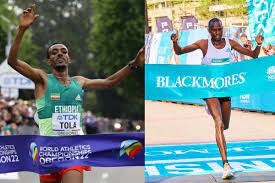
The 2022 Men’s World Marathon Champion Tamirat Tola (ETH), will headline the men’s field; competing in Australia for the first time with a personal best of 2:03:39. Formidable contender Gabriel Geay (TAN), who placed 2nd at the 2023 Boston Marathon has the fastest personal best of the field at 2:03:00. They will line up alongside Moses Kibet (KEN), Sydney Marathon’s defending champion and the current record holder for the fastest marathon time ever run in Australia.
Australia’s fastest ever marathoner, Brett Robinson (VIC), who broke Rob de Castella’s long-standing Australian Record in Fukuoka last year with a time of 2:07:31 will lead the homegrown elite field.
The 2022 World Marathon Championship runner-up and 2022 Paris Marathon Champion, Judith Jeptum Korir (KEN) will make her Australian debut at the Sydney Marathon, with a personal best of 2:18:20. She will be chased by an impressive line-up of competitors who have recorded times under 2:23:00 including Nazret Weldu (ERI), Haven Hailu (ETH) and Angela Tanui (KEN) who has a blistering personal best time of 2:17:57.
Australian Marathon record holder, Sinead Diver (VIC), who broke the Australian marathon record last year in Valencia with a time of 2:21:34 will lead the local elite field, making her Sydney Marathon debut for the first time in 2023.
“We are thrilled to have assembled such a high calibre field for this year’s Sydney Marathon, as we head into our second year as a Candidate Race for the Abbott World Marathon Majors,” said Wayne Larden, Race Director, Sydney Marathon. “The presence of these exceptional runners is a testament to the event’s status as a world-class marathon for elite athletes, running enthusiasts and recreational runners alike, and we are confident that this year’s event will be nothing short of extraordinary.”
The Sydney Marathon and its candidacy for the Abbott World Marathon Majors series is supported by the NSW Government through its tourism and major events agency, Destination NSW.
(07/21/2023) ⚡AMP
by Runners stribe
Sydney Marathon
The Sydney Marathon is a marathon held annually in Sydney, Australia. The event was first held in 2001 as a legacy of the 2000 Summer Olympics, which were held in Sydney. In addition to the marathon, a half marathon, 9 kilometres (5.6 mi) "Bridge Run", and a 3.5 kilometres (2.2 mi) "Family Fun Run" are also held under the banner...
more...Australian ultrarunner Scott Richmond dribbles soccer ball 320 km to new world record
An Australian ultrarunner has set a new world record for the longest distance run while dribbling a soccer ball. Scott Richmond, who lives in the Greater Sydney Area, completed the novel feat of endurance Thursday after dribbling a soccer ball non-stop for seven days from Canberra to Sydney, reaching his 320 km goal and breaking the former record by 20 km.
A children’s entertainer known locally as “Ozzie,” Richmond took on the challenge to raise funds for partner organizations Sports Access Foundation and Fair Game, with money raised going toward sporting equipment and programs for children living in Australia‘s remote and underpriveleged areas, as well as expanding sports opportunities for children with disabilities.
Being an experienced ultrarunner, Richmond was confident he had the legs for the challenge, which kicked off July 14 in Canberra. However, he told news.com.au during the homestretch of his attempt that he didn’t feel as surefooted when it came to keeping control of the ball. “I don’t have a soccer background … so I had to adapt my fitness and build up confidence to tackle this challenge. But I’m hoping this can prove that if you train hard enough, you can achieve anything.”

Although the run didn’t always go according to plan—detours caused by construction work added 8 km to his planned distance on the fifth day of his run, and there were the odd brushes with traffic that were too close for comfort—Richmond said the experience was “everything I expected and more.”
A video posted to Richmond’s Instagram page on Thursday showed the runner receiving a boisterous reception at Seymour Sharp Park in Miranda, a suburb of southern Sydney, which served as the finish line to Richmond’s days-long dribble.
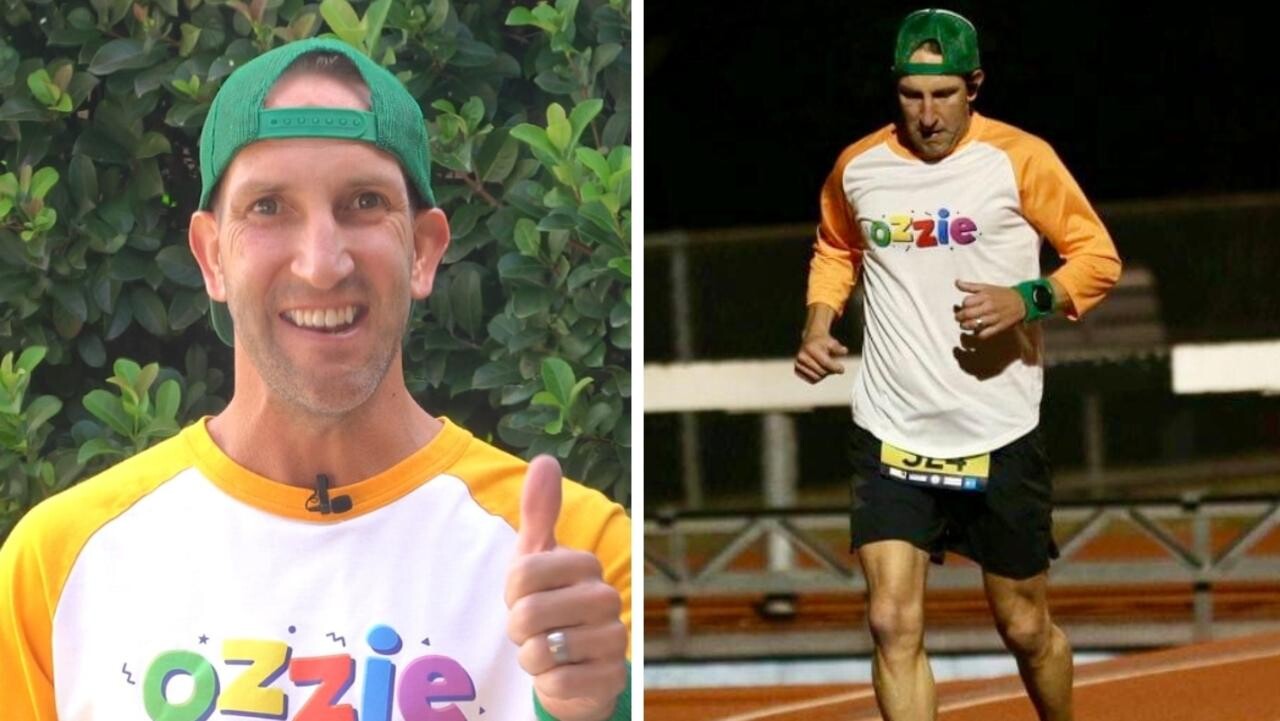
His reaching the park didn’t mark the end of Richmond’s efforts, however. Upon his arrival, the runner took part in a second world-record attempt—the most people simultaneously dribbling a soccer ball for five minutes—which was organized as another fundraiser to benefit the same youth sports organizations. There wasn’t any word from Richmond’s fundraising team Thursday on whether participants at the park were successful in breaking the record of 2,067 simultaneous dribblers, or whether the fundraising goal of AUD$100,000 between both record attempts had yet been reached.
(07/21/2023) ⚡AMPby Paul Baswick
Rodgers Kwemoi hunting for maiden season victory at Antrim Coast Half Marathon
Kwemoi goes back to the roads after a successful outing last season that saw him reign supreme at the N Kolay Istanbul Half Marathon.
The 2016 World Under-20 10,000m champion Rodgers Kwemoi will compete in his first half marathon race of the season at the Antrim Coast Half Marathon, a World Athletics elite event, on Sunday, August 27.
Kwemoi goes back to the roads after a successful outing last season that saw him reign supreme at the N Kolay Istanbul Half Marathon. Later that year, he finished second at the Ras Al Khaimah Half Marathon in the United Arab Emirates.

He opened his 2023 season with a 10th-place finish in the 10,000m at the 31st Kanakuri Memorial Middle-and Long-Distance Invitational Meet.
He then went ahead and finished ninth at the 1st Nittaidai Challenge Games before completing the podium at the 67th Central Japan Corporate Teams Athletics Championships, both races being 10,000m.
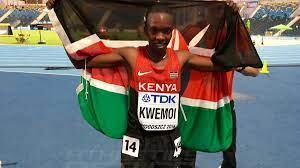
He will be looking for his first win when he takes on opponents in the Irish capital for the first time.
Another athlete who has confirmed participation is Great Britain’s Callum Hawkins who will be opening his season at the event.
His last race was last year’s Valencia Half Marathon where he fizzled out to finish in a disappointing 28th place.
The 2017 Marugame Half Marathon champion will be looking for a fresh start when he takes on his opponents. He returns to Ireland after a seventh-place finish during last year’s event.
(07/21/2023) ⚡AMPby Abigael Wuafula
MEA ANTRIM COAST HALF MARATHON
The MEA Antrim Coast Half Marathon 2022 has been approved by World Athletics as an Elite Event. The World Athletics certified course takes in some of the most stunning scenery in Europe, combined with some famous landmarks along the route. With it's flat and fast course, the race is one of the fastest half marathons in the world. Starting...
more...Sha'Carri Richardson shows support to Tobi Amusan on alleged doping violation case
Sprints sensation Sha'Carri Richardson voiced her opinion on Tobi Amusan's alleged doping violation case.
US champion and sprints sensation Sha'Carri Richardson has shown her support to Tobi Amusan on the Nigerian's alleged doping violations case.

Amusan became a topic of online discussion when she released a statement on her Instagram page that she had been charged with an alleged doping violation rule by the Athletics Integrity Unit (AIU).
In the statement, Amusan said the AIU had charged her for missing three tests in the space of 12 months, which is a doping violation that has now led the AIU to provisionally suspend her until the case is cleared.

Richardson will later show her support to Amusan by posting pictures of the women's 100m Hurdles World Record (WR) on her Instagram stories, and one of the captions reading:
"If you don't know which a lot of y'all do not, SHUT UP," wrote Richardson.
Amusan stated that she will have her charge decided by a tribunal of three arbitrators before the start of next month's World Championships in Budapest.
(07/20/2023) ⚡AMPby Funmilayo Fameso
Is depth of talent the issue behind Kenya’s doping scandal?
If you have been following the sport of distance running for the past five years, you’ll be aware of the rise in positive doping cases out of Kenya, whose athletes have dominated the major marathon scene for nearly three decades. Since 2000, the country has won a total of 30 Boston Marathon titles, and the remarkable performances of marathon world record holders Eliud Kipchoge and Brigid Kosgei have put Kenyan athletics at the forefront of distance running. Still, below those few at the top, there are hundreds of aspiring talented distance runners from the East African nation willing to do whatever it takes to make ends meet.
In an in-depth interview with the BBC, Athletics Integrity Unit (AIU) head Brett Clothier explains that Kenya faces a unique problem that most countries don’t face—the sheer abundance of talent that sits below the elite level. “The problem is there is a huge pyramid of top-class athletes,” explains Clothier. “The difference in ability, in that pyramid, between the top and those below is not very much, because of the depth of their talent.”
Clothier adds that in the past, they have been testing the top of that pyramid, i.e., major marathon winners, domestic champions and world championship athletes, but the bottom ones have not been subject to out-of-competition testing. “That pyramid is hundreds, or even thousands, of athletes, so even though we are controlling the ones at the top very well, because of the pressure from the athletes below, who aren’t being tested out of competition, the athletes at the top are taking risks, and there is pressure to stay on top.”
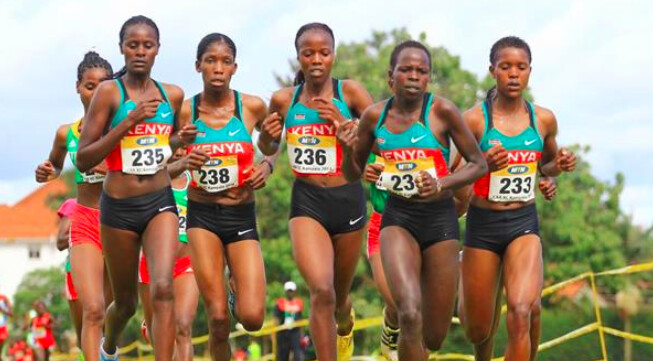
The lure of financial incentives is a major driving force behind doping in Kenya. Road races tend to offer lucrative prize money and appearance fees, attracting a large professional class of runners who potentially see doping as a means to secure a better living. The extensive pyramid of top-class athletes in Kenya creates pressure to succeed, even for those not yet subject to out-of-competition testing. Clothier pointed out that these athletes do not have to go far to find performance-enhancing drugs. “When you have this illicit market, you have the opportunity for people to financially benefit from doping, and people who have the financial opportunity to sell performance-enhancing drugs,” said Clothier. “What we see is a market driven by money and demand.”
There are 165 Kenyan men who have run under 2:07 for the marathon. To put it into perspective, only three U.S. men in history have accomplished the same feat. USADA, the country’s doping agency, is backed annually by major players, including the U.S. Government and the U.S. Olympic and Paralympic Committee (USOPC), to help create a safe sporting environment and regularly test athletes.
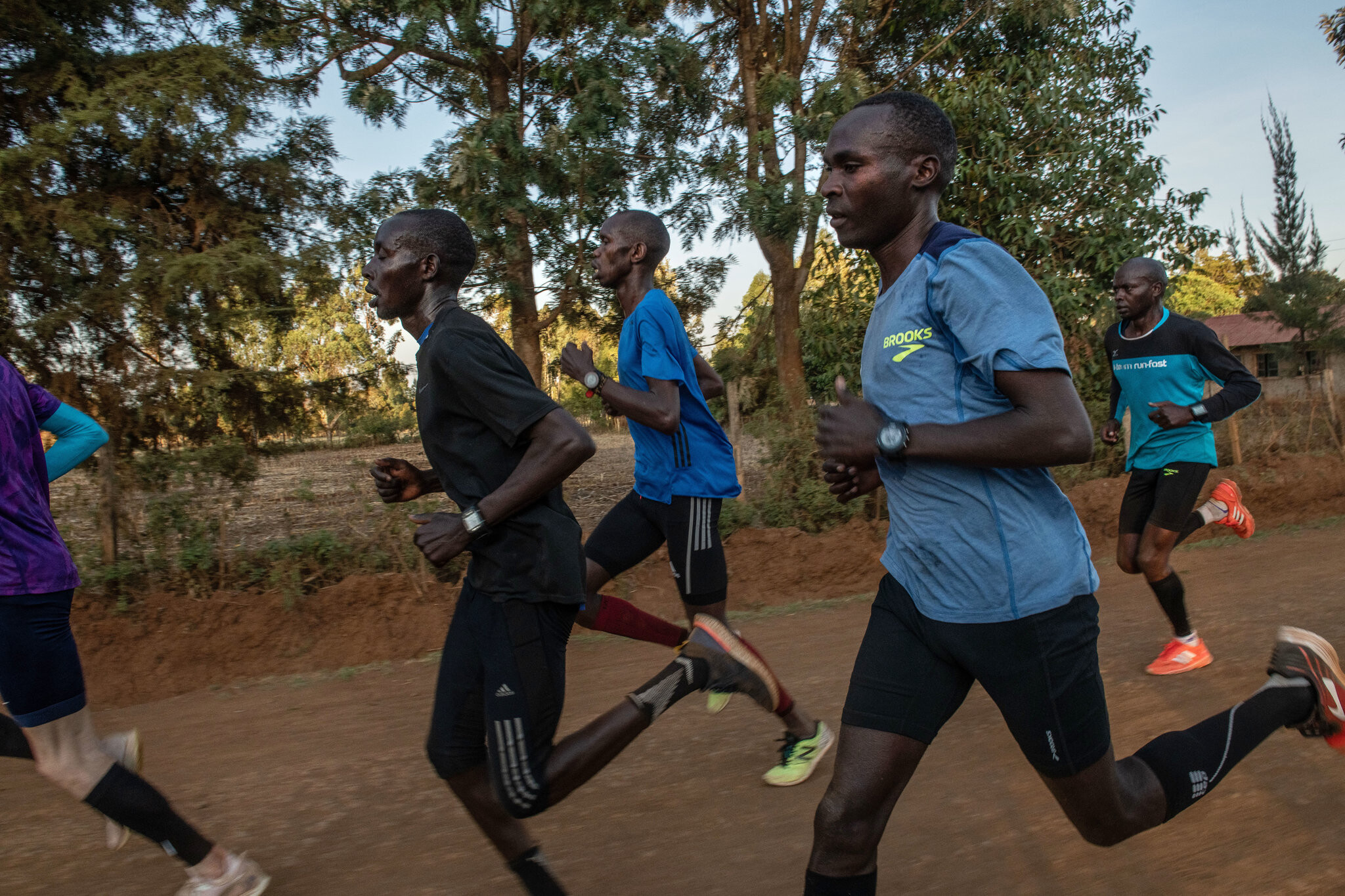
Kenya’s problem is that it doesn’t yet have the funding or resources within its anti-doping agency to completely tackle the larger pool below those at the top, but the AIU and Kenyan government have increased funding for the Anti-Doping Agency of Kenya (ADAK) by five million a year for the next five years. “Funding can be a real game-changer,” said Clothier. “No other national anti-doping agency is at that level of testing in our sport.” In the last year, testing at the Kenyan National Championships has increased nearly 400 percent, which Clothier believes is a serious improvement.
World Athletics President Sebastian Coe fully supports the efforts made by the Kenyan Federation and government in tackling the issue. Although running fans may feel discouraged by seeing the downfall of major marathon winners and world championships medallists who are cheating, Clothier insists that each case represents progress in making athletics a cleaner sport. The country’s fight against doping continues, but the increased testing and commitment to fixing the problem offer hope for real change. With Coe and Clothier backing the efforts to address doping in Kenya, there is reason for optimism that the nation’s anti-doping initiatives will lead to a cleaner and fairer athletic environment, benefiting clean athletes and preserving the integrity of the sport.
(07/20/2023) ⚡AMPby Running Magazine
Detroit Free Press Marathon announces first Kids Marathon
The Detroit Free Press Marathon is set to host the first-ever kids marathon as a part of the event.
Kids 13 and under will have the opportunity to experience a modified version of the marathon. Parents can register their children online for $25 and then download the 2023 Free Press Kids Marathon log sheet.
Participants have until Oct. 14 to log 25.2 miles, when they will then join in on the final mile of the race on Saturday morning of race weekend. Once they finish the mile, they will receive a finishers shirt, a completion medal and fun post-race celebration. In order to participate, kids must be 13 or under on Oct. 14.

Parents wanting to run the final mile with their children can register for the 1-mile race, as the two will use the same course.
"Whether they want to do a daily walk or daily run or a weekly run or jog, I think it really helps promote consistent exercise and activity leading up to a goal and that goal being 26.2 miles of activity," Aaron Velthoven, Free Press Marathon vice president and executive race director, said.
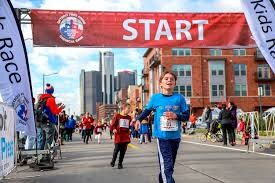
The 46th annual Free Press Marathon, a three-day event, will be Oct. 13-15. Attracting runners from all over the world, this marathon is the only race in Michigan that crosses international borders twice. Participants cross into Canada through the Ambassador Bridge and then make their way back to the United States through the Detroit-Windsor Tunnel. Other events include the half-marathon, U.S.-only half marathon and marathon relay, competitive 1-mile race, 5K and the Meijer Kids Fun Run.
Those interested can register online for the category of their choosing. Participants of the full marathon must be 16 or older and must be able to enter both Canada and the U.S.
(07/20/2023) ⚡AMPby Jenna Malinowski
Detroit Free Press Marathon
Our marathon course offers international appeal, traversing both downtown Detroit and Windsor, Ontario, crossing the border at both the Ambassador Bridge and Detroit-Windsor Tunnel. You will run through historic neighborhoods, around beautiful Belle Isle, and along the spectacular RiverWalk. ...
more...Sprints coach Stephen Mwaniki confident relay teams will make cut for Budapest
Sprints coach Stephen Mwaniki believes Kenya's 4x 400m (men) and 4x400 mixed relay teams can shoot to between positions 10 and 12 in the world rankings when they compete in Gaborone, Botswana, on Thursday.
The Kenyan teams are currently placed 16th on the World Athletics rankings. The mixed relay team has a time of 3:14.64 while the men's 4x400m team boosts of a 3:02.02 mark. Both times were set at Nyayo Stadium on June 24.
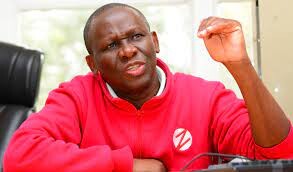
The contingent in Gaborone has Wiseman Were, Bonface Mweresa, Kennedy Kimeu and Zablon Ekwam in the 4x400m race while the mixed relays trialists include Ekwam, Kevin Tauta, Mercy Oketch, Maureen Thomas and Millicent Ndoro.
Mwaniki said the individual athletes are the best the country has to offer over the distances and expressed confidence they will deliver in Botswana.
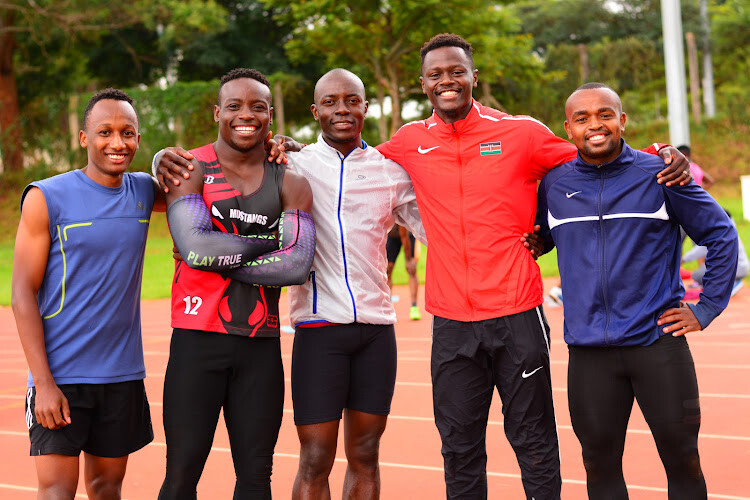
"These are our best athletes and we hope they will do the country proud by cementing their place at the World Championships in Hungary," said Mwaniki.
The Kenya Prisons coach said the window for qualification closes on July 30 and the Botswana event presents a good opportunity for the team.
"We have a very good opportunity to improve our time before the deadline," he said.
The top 16 teams in the world by July 30 will head to Budapest.
He added that Kenya stands a good chance of medaling in the mixed relays.
"We won a bronze medal at the World Relays in Yokohama, Japan, four years ago and I believe our chances are very good in that regard," he said.
Mwaniki added that should Kenya make it to the 4x400m and mixed relay finals in Budapest, they will have qualified for next year's Olympic Games in Paris.
"This is a big incentive for us as a federation and team. They know what's at stake and if we attain better times in Gaberone, we will work very hard to ensure we make it to the final in Budapest," he noted.
Commonwealth Games 800m champion Mary Moraa is a probable member of the mixed relay team if they make it to Budapest.
"She is a strong athlete, especially over 400, and will be an asset to the side if we do qualify," he said.
(07/20/2023) ⚡AMPby William Njuguna
World Athletics Championships Budapest 23
From August 19-27, 2023, Budapest will host the world's third largest sporting event, the World Athletics Championships. It is the largest sporting event in the history of Hungary, attended by athletes from more than 200 countries, whose news will reach more than one billion people. Athletics is the foundation of all sports. It represents strength, speed, dexterity and endurance, the...
more...Eliud Kipchoge says he’s not worried about Kelvin Kiptum in potential Berlin Marathon clash
Less than a week ago, marathon world record holder Eliud Kipchoge announced he will return to the Berlin Marathon on Sept. 24 for a bid at his fifth Berlin title on the famously flat and fast course. Many fans expected Kipchoge to choose to run the New York City Marathon in November in preparation for the extremely hilly course at the 2024 Paris Olympics. Now, he will potentially clash against the second-fastest man in history, Kelvin Kiptum.
On June 15, he conducted a virtual press conference with the media to explain his decision behind Berlin, hinting at his future plans and chatting about the potential clash between him and the 2023 London Marathon champion, Kiptum. Kipchoge said: “Kiptum has all power to do what he wants. I have done enough. I trust that what I have done in the (sport) world will be respected. In any case, I wish him well. […] If Kiptum runs under 2:00, he will always be the second [to do so]. I’ll be the first one. So I have no worries at all.”
In his two marathon starts, the 23-year-old Kiptum won on both occasions. He ran a 2:01:53 debut to win the 2022 Valencia Marathon and followed it up with a 2:01:25 to break Kipchoge’s course record at the 2023 London Marathon five months later.
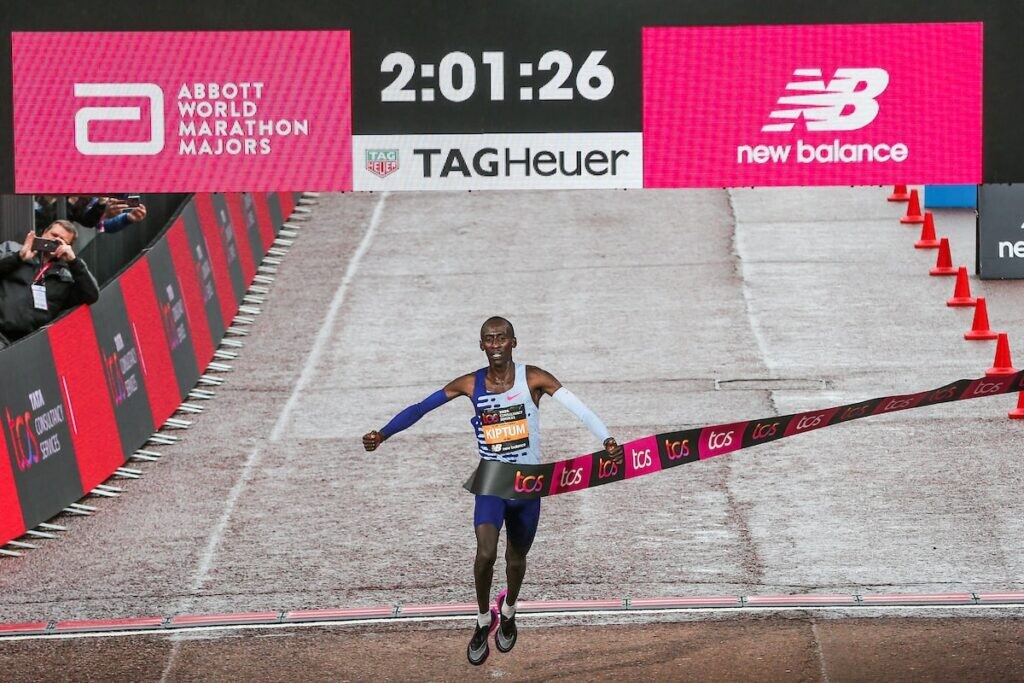
Only three men in history have run under 2:02, and Kiptum is the only marathoner to do it under the age of 35. Although Kiptum has not been announced for the 2023 Berlin Marathon, there has been a lot of speculation about him entering this year’s elite field. After his win at the 2023 London Marathon, he expressed interest in seeing what he could do on the Berlin course, which is known to be fast and flat. Berlin has been the race where the last eight men’s marathon world records were set, dating back to Paul Tergat’s record of 2:04:55 in 2003.
At the 2023 Boston Marathon, Kipchoge had a tough day on the prestigious course, struggling with a leg issue that ultimately brought him his second marathon loss in the last nine years (he finished sixth). “I have no control over what happened in April in Boston,” Kipchoge told reporters. “There’s no point in brooding. I can (only) control things happening now and get ready for Berlin.”
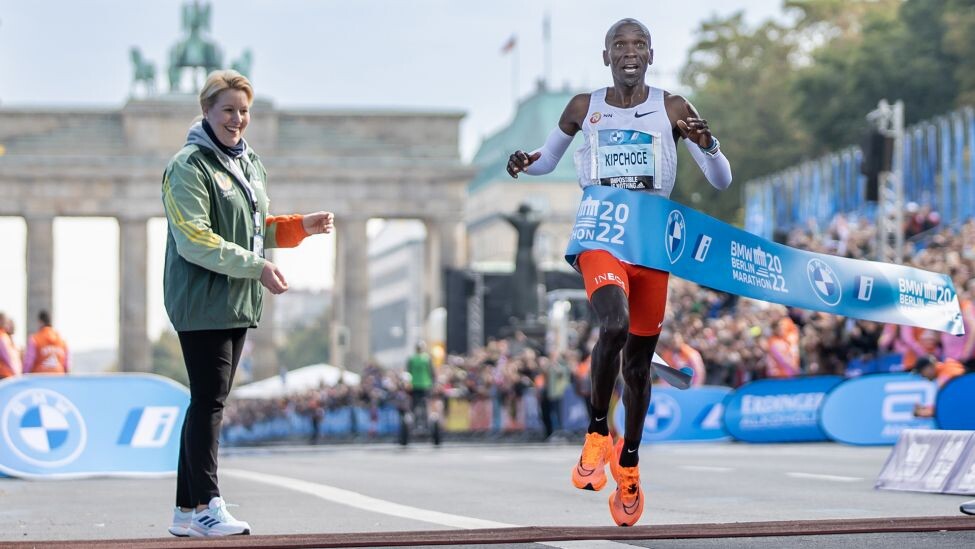
The goals remain the same for the 38-year-old Kenyan, who is looking for his third consecutive Olympic gold in the marathon at the 2024 Paris Olympics. “I want to be the first man to win back-to-back-to-back,” Kipchoge said. “I am really looking for that. That would be real, real history.” Kipchoge believes that Berlin gives him the best opportunity to prepare himself for gold in Paris, giving him nearly 10 months to train in the lead-up to the Games.
Earlier this month, Kiptum also withdrew his name from a nomination to the Kenyan marathon team at the 2023 World Athletics Championships in Budapest, which hints that a fall marathon will indeed be on his calendar.
(07/20/2023) ⚡AMPby Marley Dickinson
BMW Berlin Marathon
The story of the BERLIN-MARATHON is a story of the development of road running. When the first BERLIN-MARATHON was started on 13th October 1974 on a minor road next to the stadium of the organisers‘ club SC Charlottenburg Berlin 286 athletes had entered. The first winners were runners from Berlin: Günter Hallas (2:44:53), who still runs the BERLIN-MARATHON today, and...
more...Canadian ultrarunner still snagging podiums at 66
Trishul Cherns has firmly staked his place in the history of Canadian ultrarunning. But at age 66, the endurance athlete has shown with his recent ascents to the podium that he has no desire to dwell on past successes—nor should other runners who have entered their senior years. The Hamilton native, who lives in Kingston, N.Y., with his wife and crew leader, Käären Schilke-Cherns, has recently racked up no fewer than three podium finishes at ultras around the U.S., including second overall at the 144-hour 3 Days at the Fair road race in Augusta, N.J., in early May, covering 677. 53 km; third overall at the 33-hour Centurion Ultra Trail Event–Blue Buckle in Connecticut in June, completing 183.304 km; and earlier this month, Cherns won the 48-hour event at the Notchview Ultra in Windsor, Mass., covering 229.332 km on trails.
Cherns is best known as a multi-day racer, and throughout his career, has represented Canada in many international competitions. He has broken more than 110 Canadian ultrarunning records and has racked up tens of thousands of kilometres in events as short as 50K and as long as 1,600 km on roads, trails and the track. Altogether he has accumulated more than 300 ultra finishes during his career.
Cherns says beyond being personal accomplishments, these latest results speak assertively to the strength and potential of runners over the age of 65.

“Age is not a limit,” Cherns tells Canadian Running. “I still feel 30 inside, and I’m beating guys that are 20, 30, 40 years younger than me. So I think the message is, no matter what your age is, keep going and keep doing what you’re doing.”
Although age does offer runners the benefit of experience, running success in older life doesn’t just happen. Cherns says choosing healthy foods and cultivating a positive mental attitude have been crucial to his continuing to be a strong competitor.
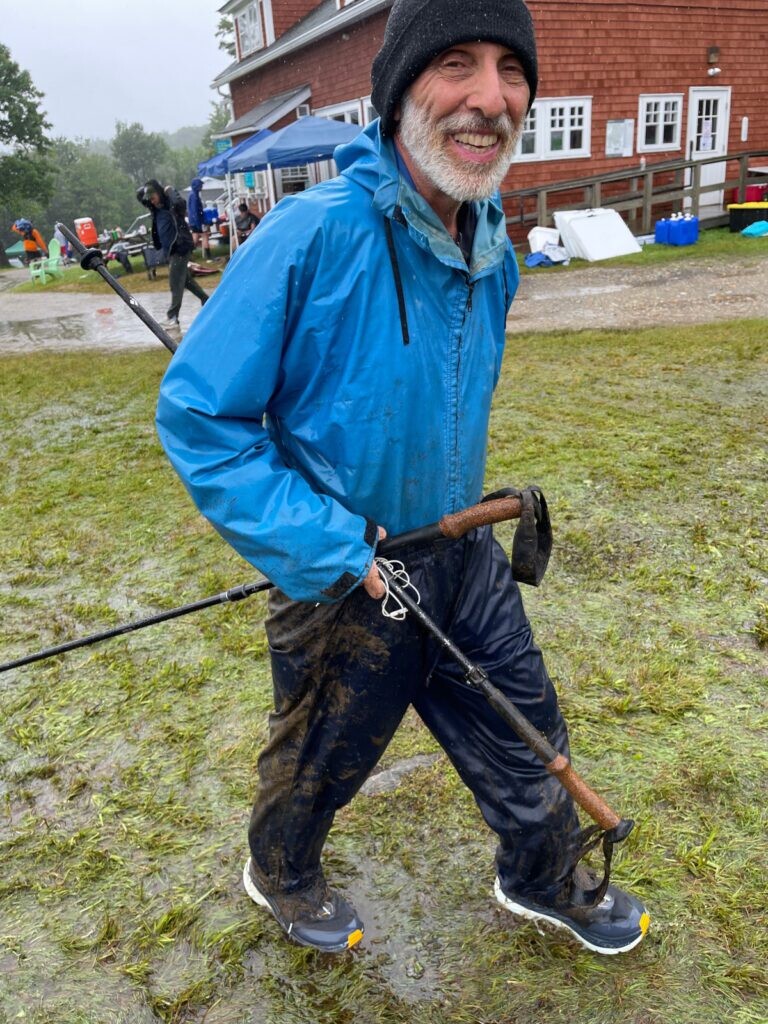
“My success definitely comes from my diet,” he says. “I’m a vegan, and that’s an anti-inflamatory diet. I’m trying to prevent inflammation in my body because these are stressful (running) events, so I’m trying to make it as easy as possible.”
He says meditation and approaching running as a spiritual practice have been key to maintaining a positive mindset during challenging races.
“Meditation and spirituality give me fortitude. Inner peace and stillness give me strength. I can do things that others can’t because of my inner fortitude, which supports my being very, very mentally strong and very, very emotionally strong,” says Cherns, who was a student of the late endurance athlete and spiritual teacher Sri Chinmoy.
Another key ingredient to continued success and joy in running is to continue to look ahead, says Cherns, and always to set one’s sights high. “My ideas are always self-transcending. I want to be prolific. I want to keep pushing my goals so that running is all a new adventure for me. I’ve run more than 300 ultras—in the next five years I’d like to bring that to 500. Ultimately, can I do 1,000 ultra marathons in my lifetime? You know, that’d be cool,” he says.
“I’m trying to go for the stars. There’s no reason why you can’t go for the stars, no matter what age you are.”
(07/19/2023) ⚡AMPby Paul Baswick
Core strength for runners: Three basic exercises to get faster
Adding some simple core-strength exercises to your routine might not result in an immediate six-pack, but it will make you a stronger, more stable and injury-resistant runner. New to core strength? We’re here to help–here are a few basic exercises and the reasons why, as a runner, you should add these to your training routine.
Why core strength?
Adding some core mobility and strength to your weekly routine comes with a multitude of benefits that carry over to running. You’ll improve your posture: a strong core helps maintain proper alignment, preventing you from slouching or leaning forward while running. A stable core provides a solid foundation for your limbs to work efficiently. This stability is particularly important on trails or when navigating uneven terrain.
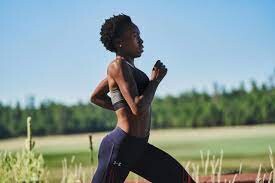
A strong core can reduce the risk of common running injuries like lower back pain, IT band syndrome, and knee issues. Your core supports the spine and pelvis, and strengthening it reduces the impact on the joints. Finally, you’ll increase your power and speed. A strong core results in more powerful and efficient strides. While a well-rounded strength routine is something to work up to, adding a few simple core exercises post-easy run will give you a speed and stability boost.
1.- Planks
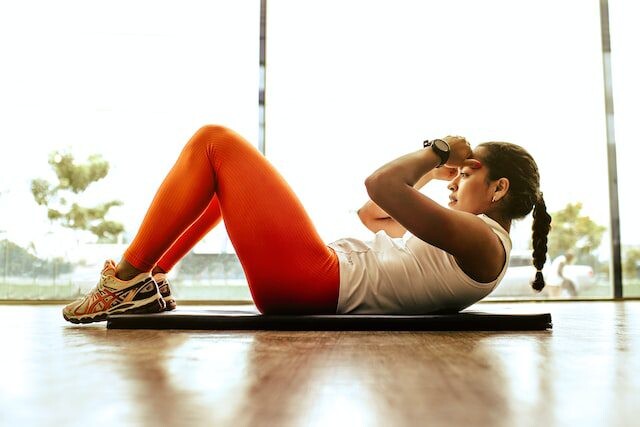
Traditional planks and side planks help strengthen the entire core, including the abdominal muscles and obliques.
Start in a push-up position with your hands directly beneath your shoulders and your body in a straight line from head to heels, feet should be hip-width apart.
Tighten your abdominal muscles and squeeze your glutes. This will help maintain a neutral spine throughout the exercise.
Hold this position, keeping your body in a straight line. Start with 20-30 seconds and gradually increase the time as you gain strength.
Modify: to make the standard plank less challenging, you can perform the exercise on your elbows instead of your hands. Rest on your forearms, and the rest of the steps remain the same. You can also drop your knees to the mat for support.
2.- Russian twists
This exercise targets the obliques and improves rotational strength, which is beneficial for maintaining stability during running.
Sit on the ground with knees bent and your feet flat on the floor. Lean back slightly while keeping your back straight, with your torso at a 45-degree angle to the floor.
Tighten your abdominal muscles, engaging your core to stabilize your spine and maintain a neutral posture. Bring your hands together in front of your chest, and try holding a weight or medicine ball to add resistance.
Slowly rotate your torso to one side, bringing your hands or the weight beside your hip. Keep hips and lower body stationary–the movement should come from your upper body. Slowly twist back to the starting position. and repeat the twist on the opposite side. Start with 10-15 repetitions per side and gradually increase the number as you become more comfortable.
3.- Bicycle crunches
These target the rectus abdominis and obliques while also engaging the hip flexors–all muscles that play a significant role in maintaining stability and balance while running.
Lie on your back on a mat or a comfortable surface. Place your hands behind your head, keeping elbows wide open, and lift both legs off the ground with knees bent at a 90-degree angle.
Tighten your abdominal muscles to engage your core and keep your spine stable.
Simultaneously perform a crunch and a rotation. Bring your right elbow towards your left knee while straightening your right leg. At the same time, rotate your torso to the left. Return to the starting position and repeat the movement on the other side, bringing your left elbow toward your right knee while straightening your left leg and rotating your torso to the right.
Continue to alternate sides in a fluid and controlled motion, resembling a pedalling motion like riding a bicycle. Aim for 10-15 repetitions per side to start with and gradually increase as your core strength improves.
When it comes to core training, consistency is key. Start by including core exercises in your routine two to three times per week, and prioritize form over the number of reps. Make sure you are including adequate rest and recovery if you are adding strength to an already intense running routine.
(07/19/2023) ⚡AMPby Keeley Milne





